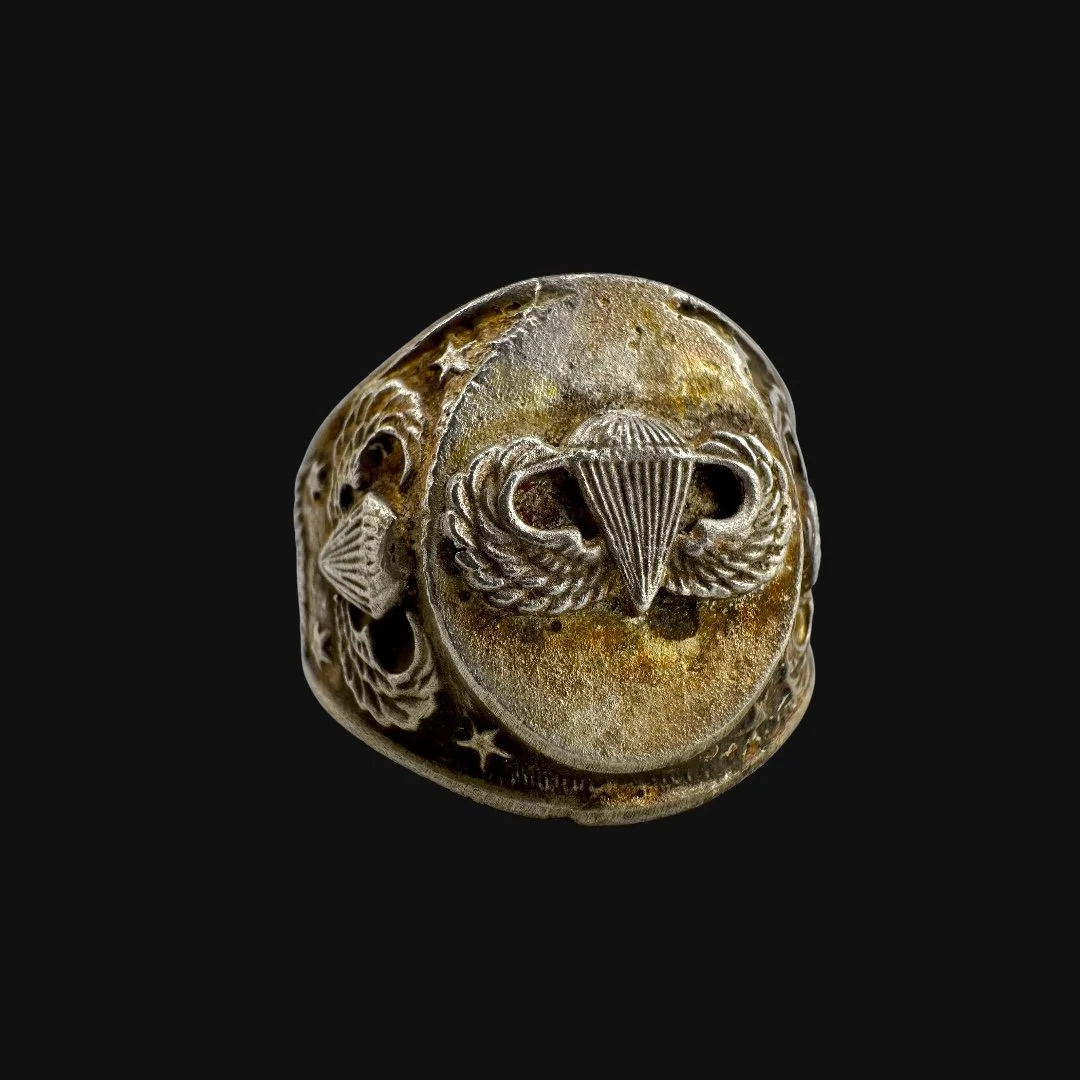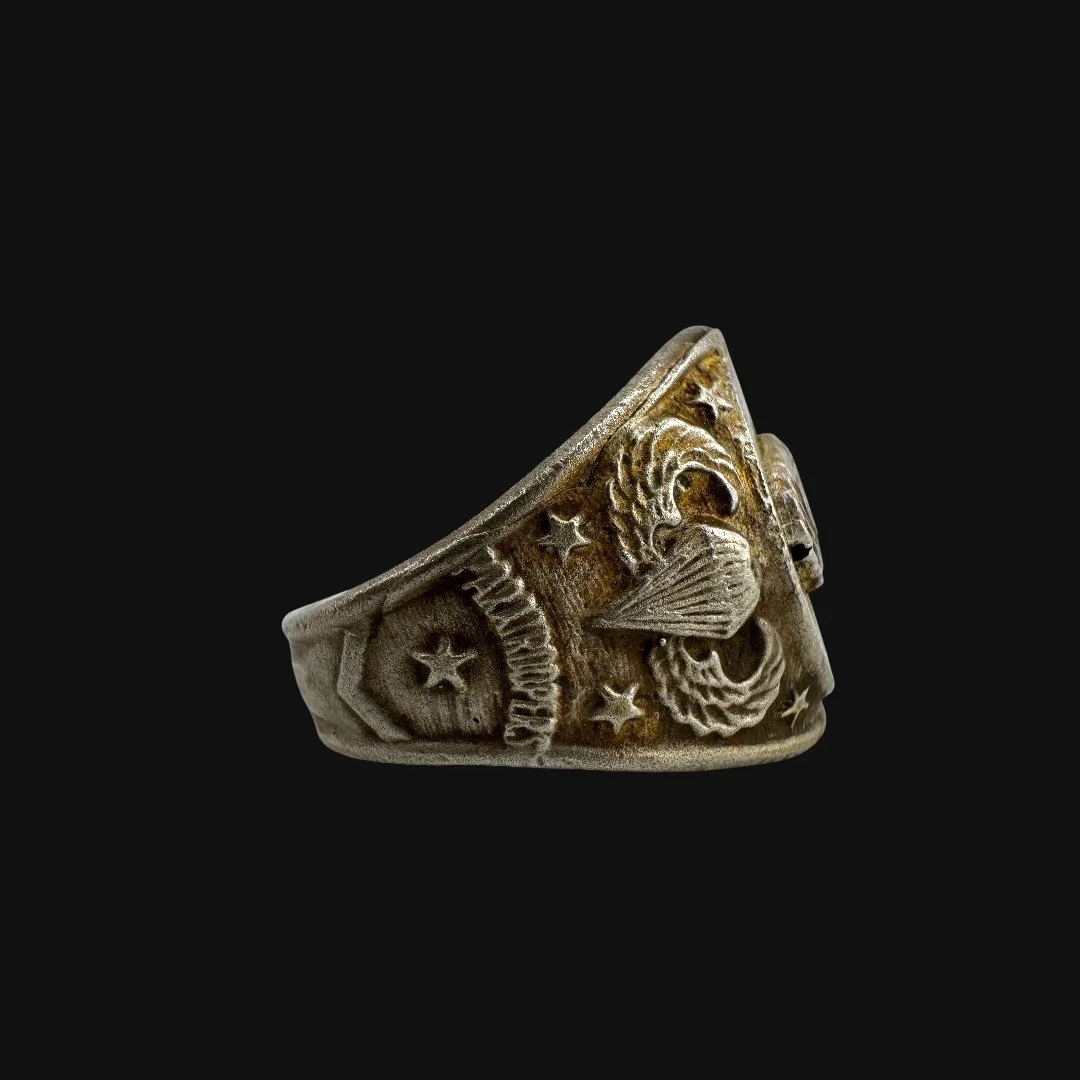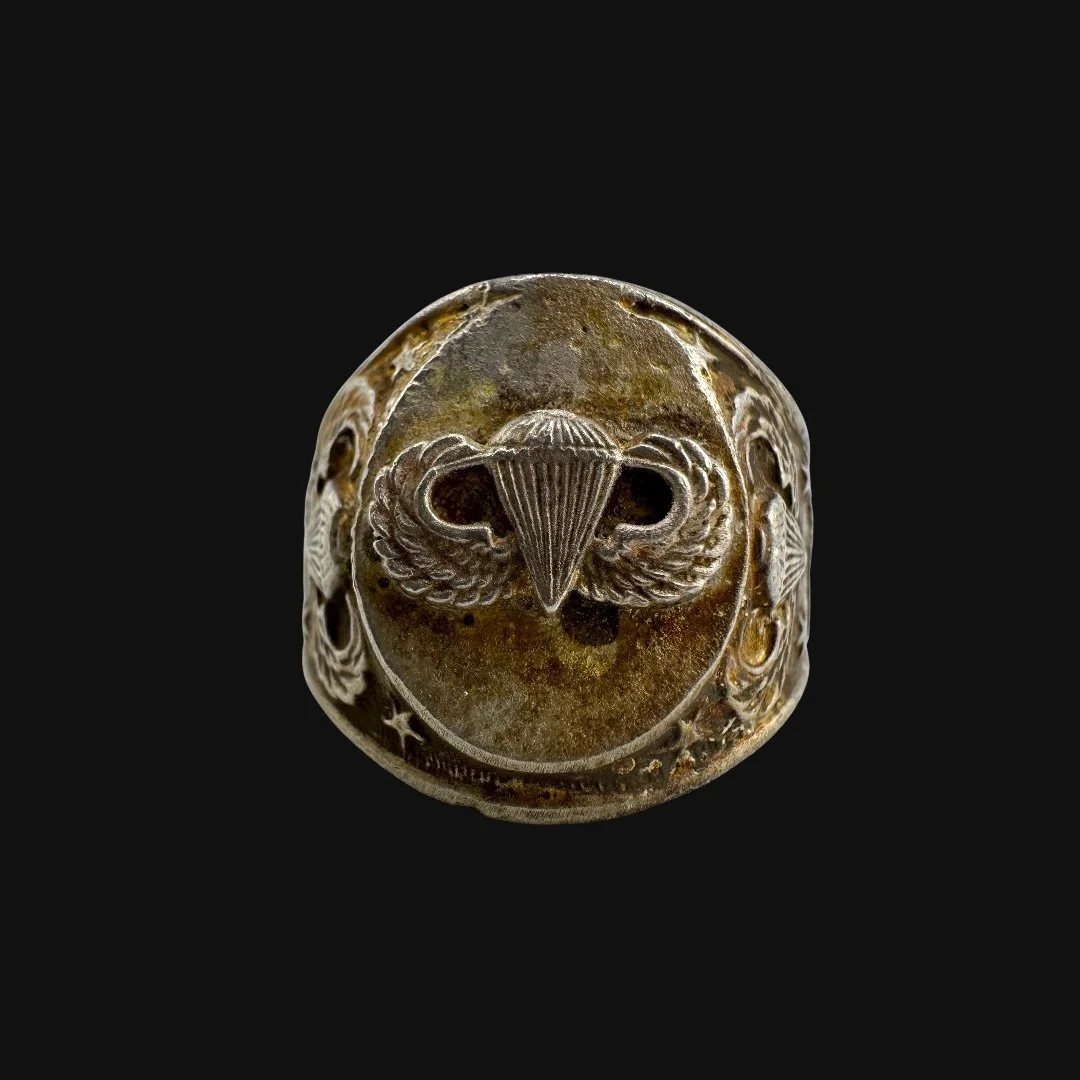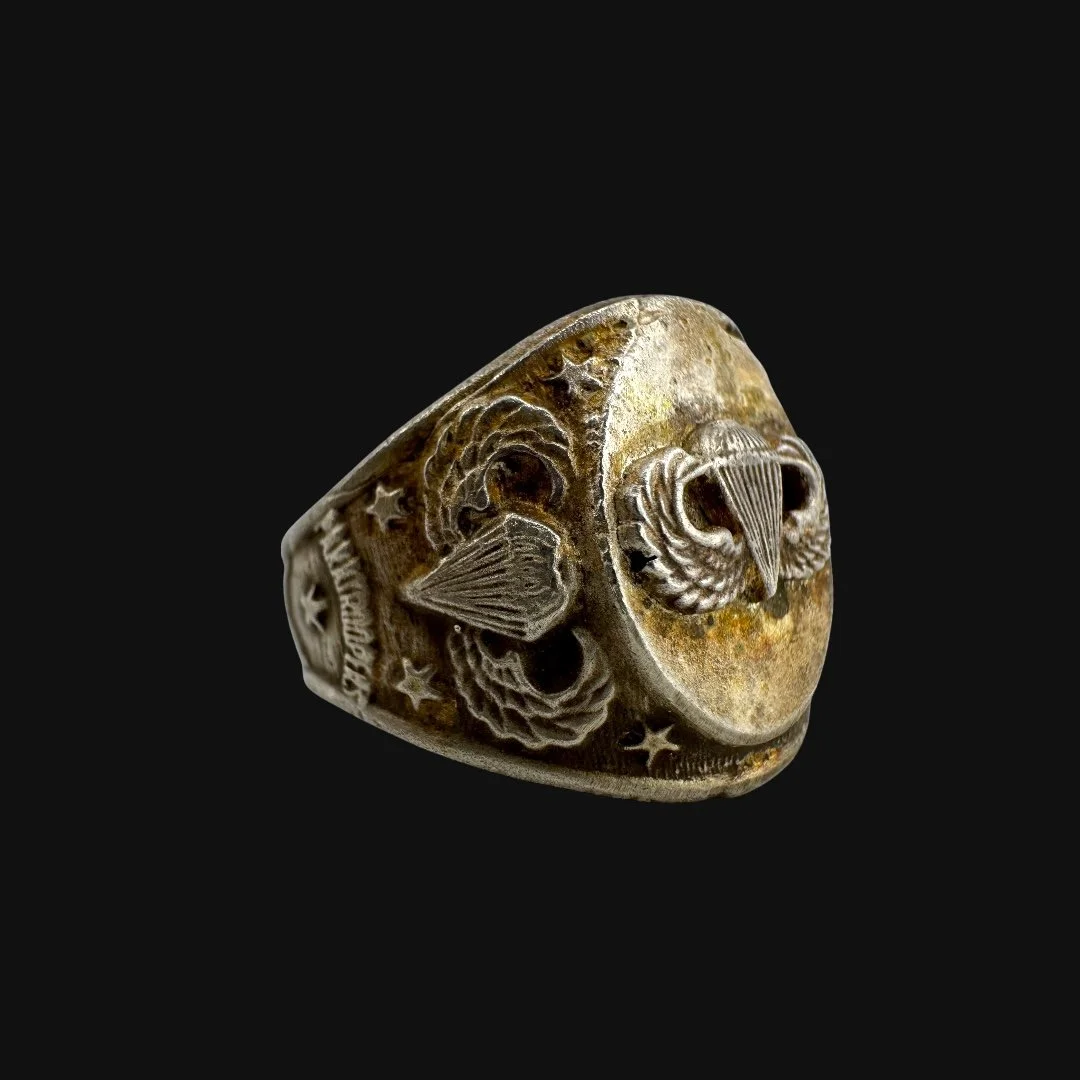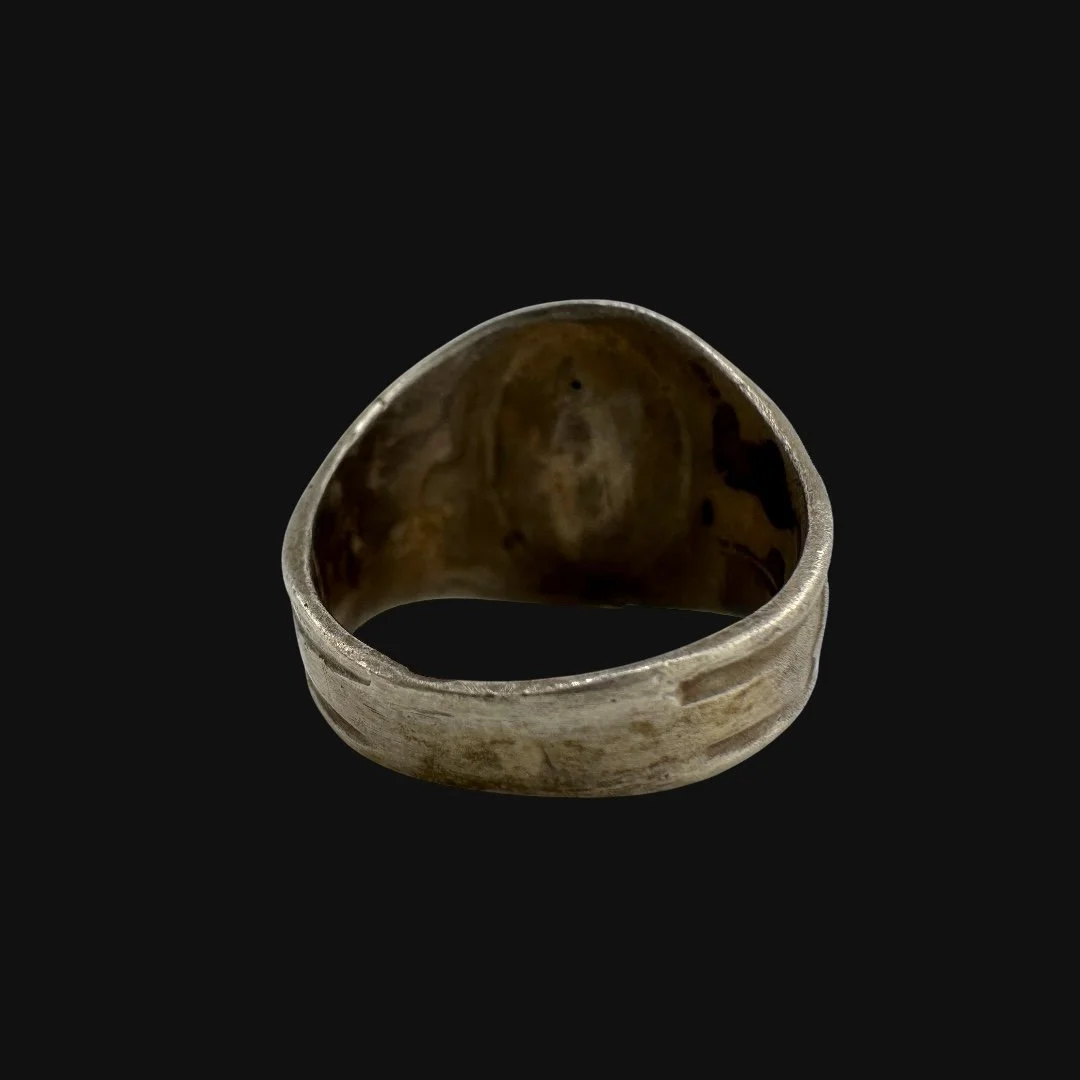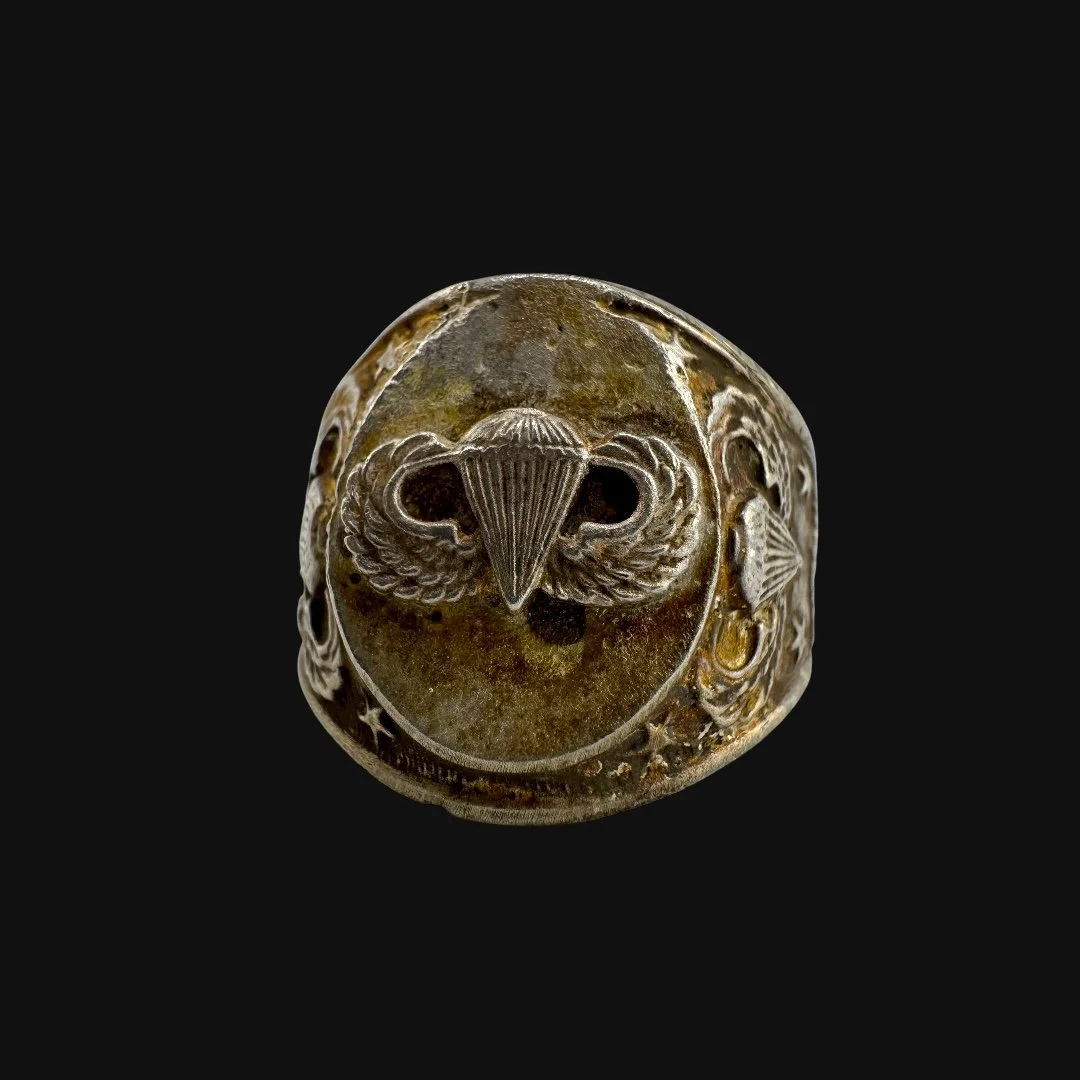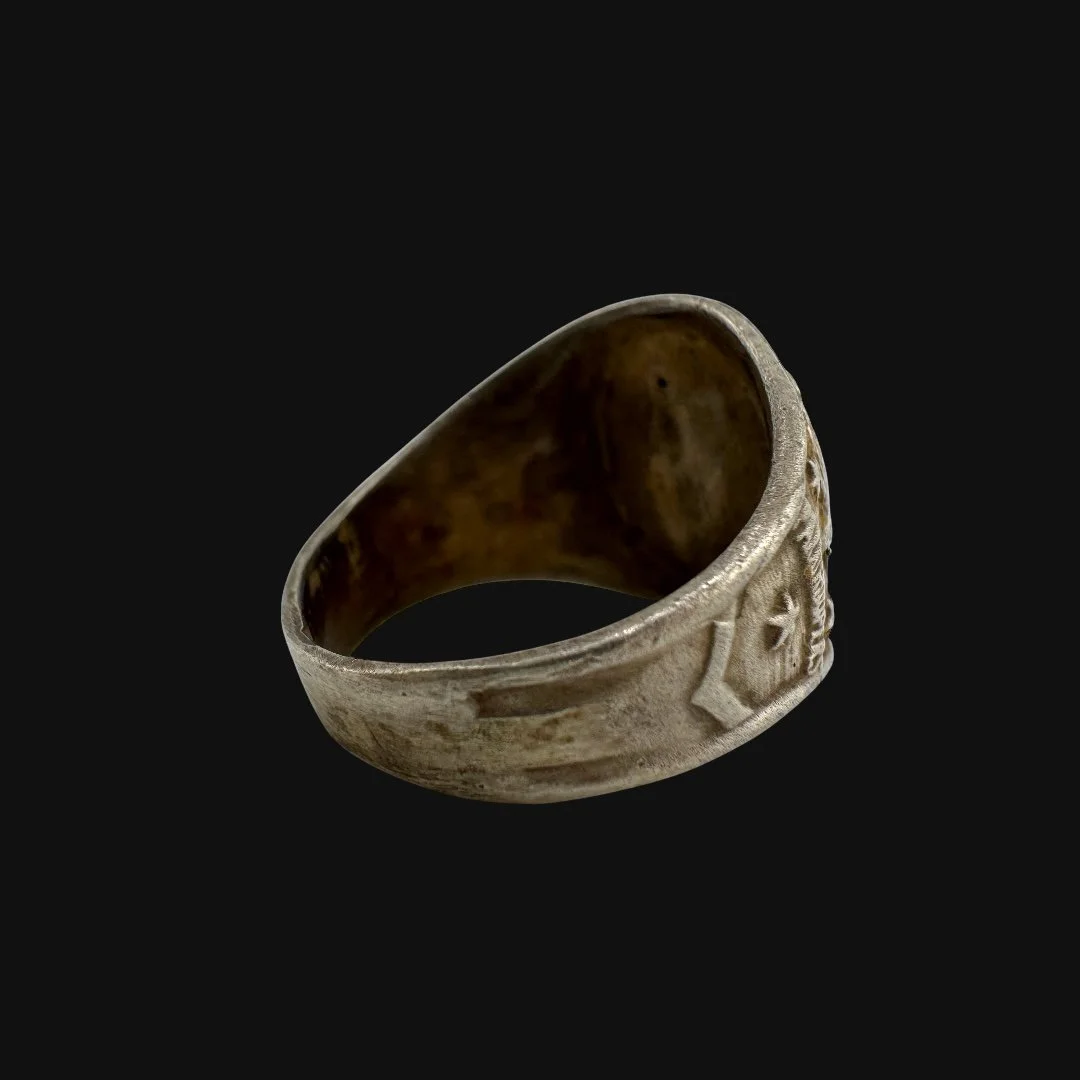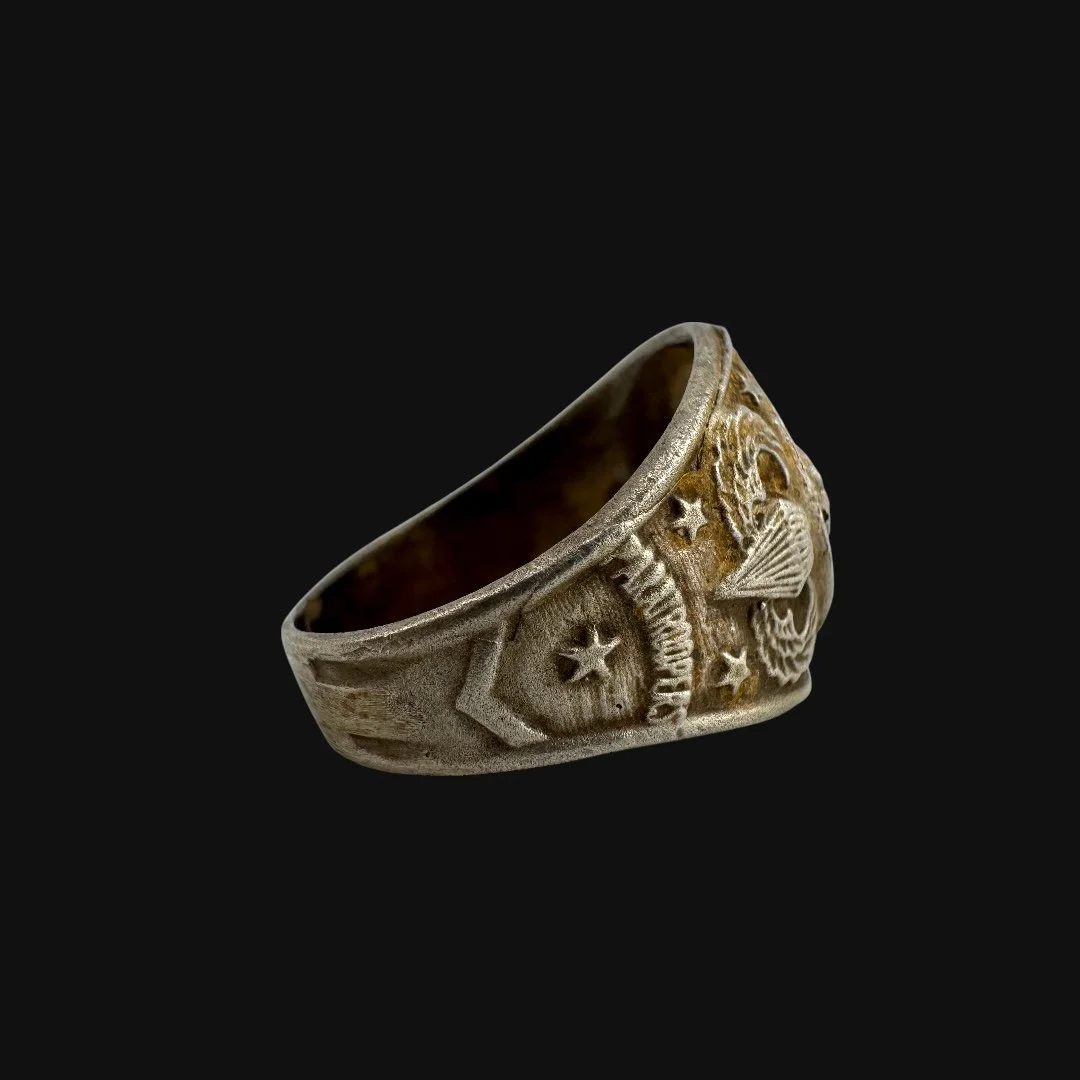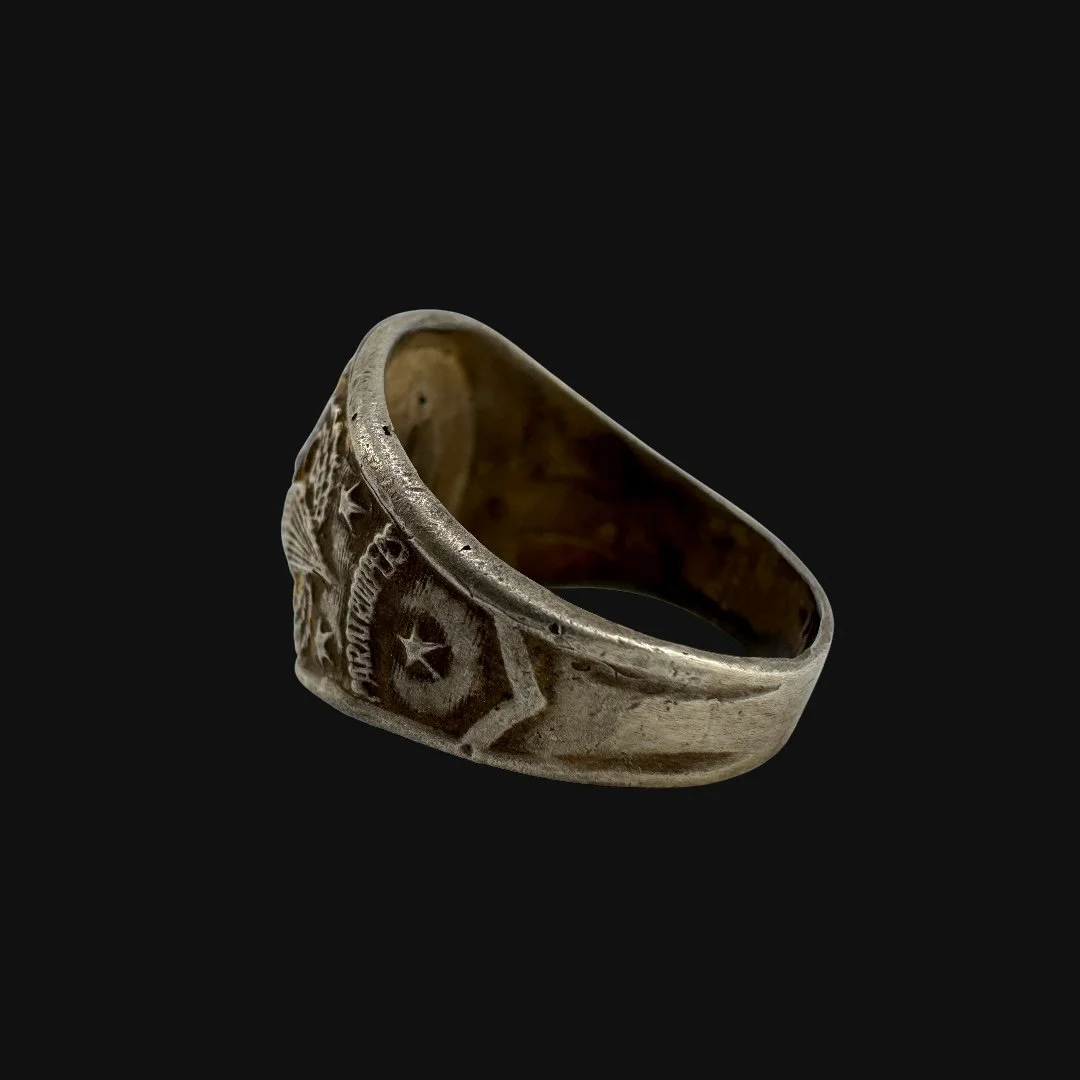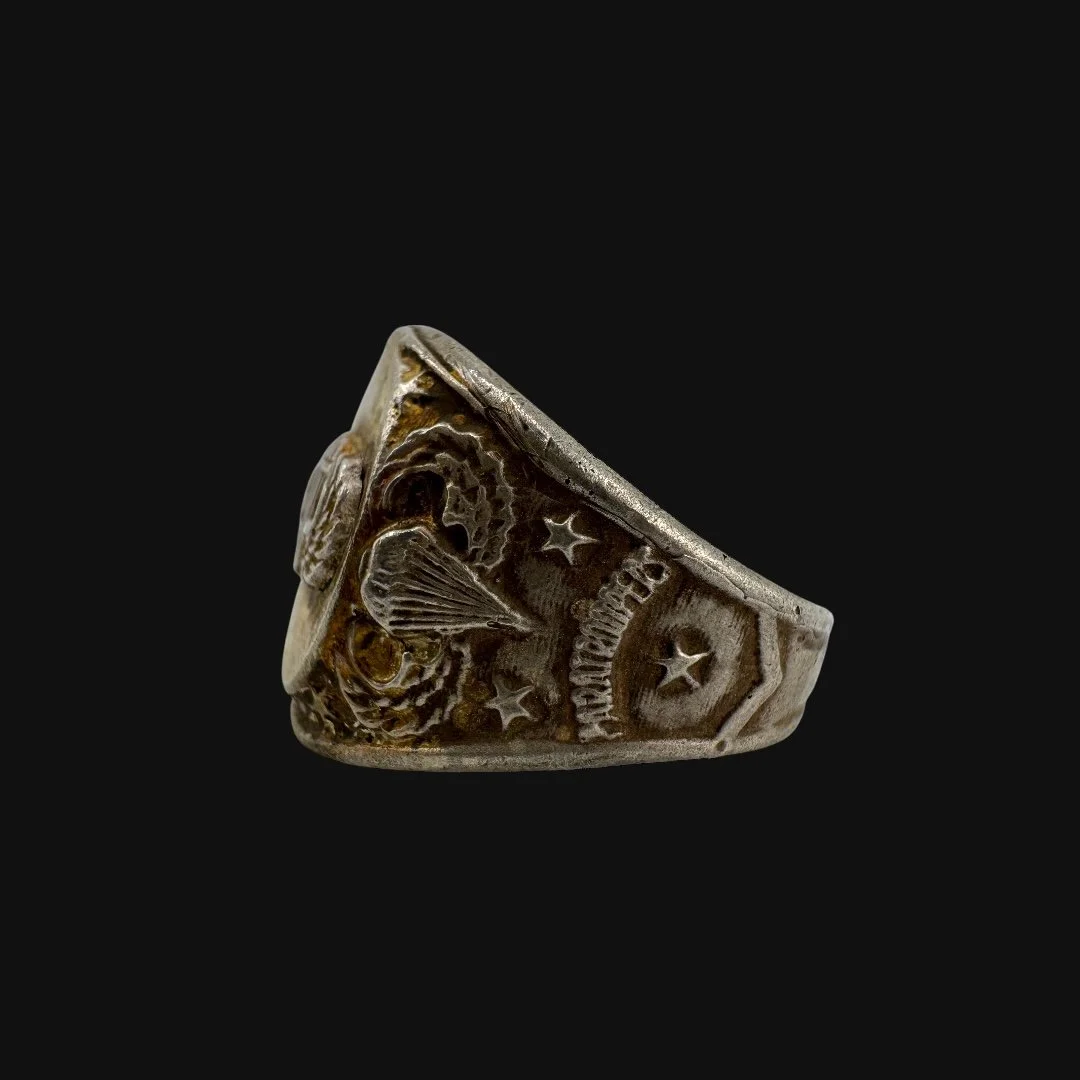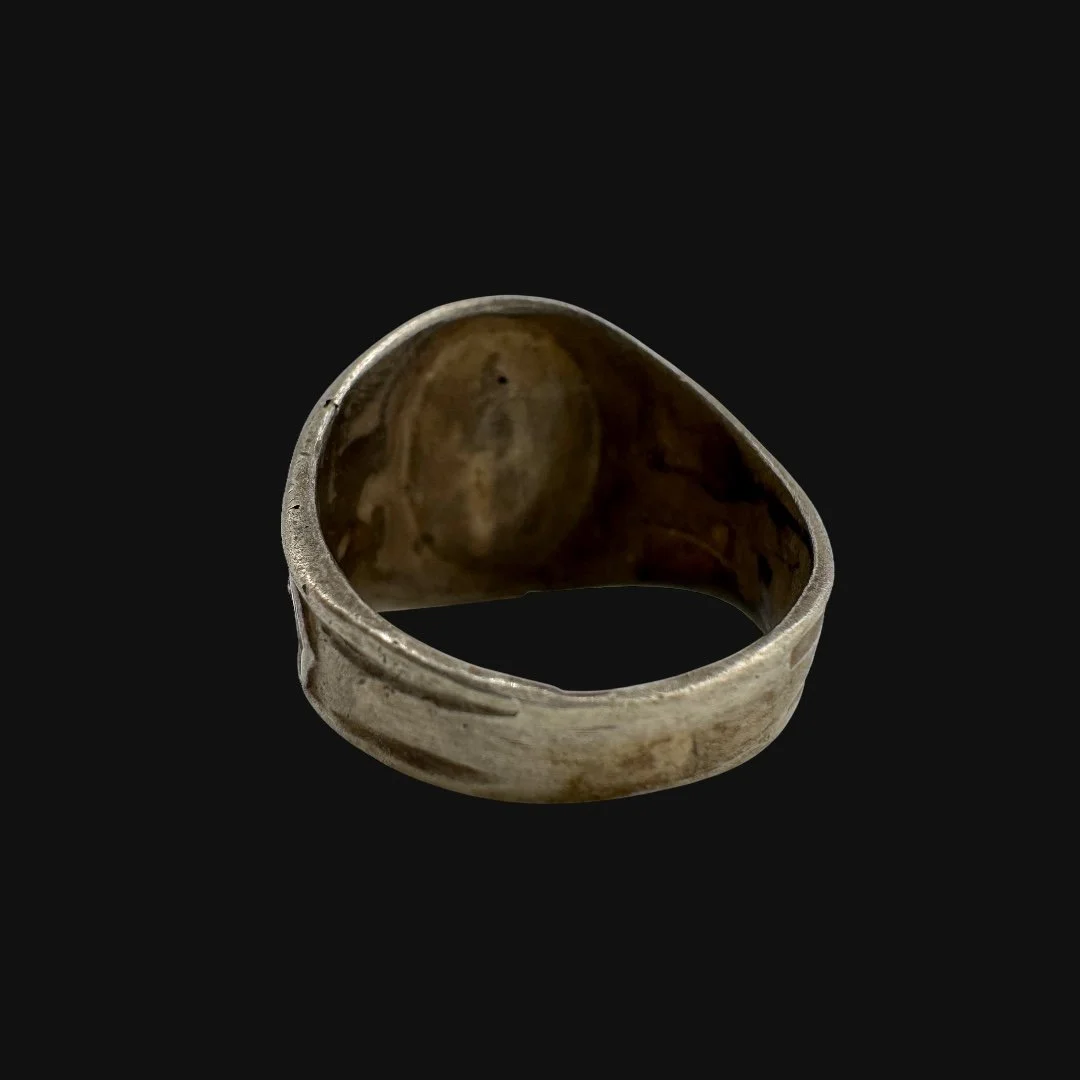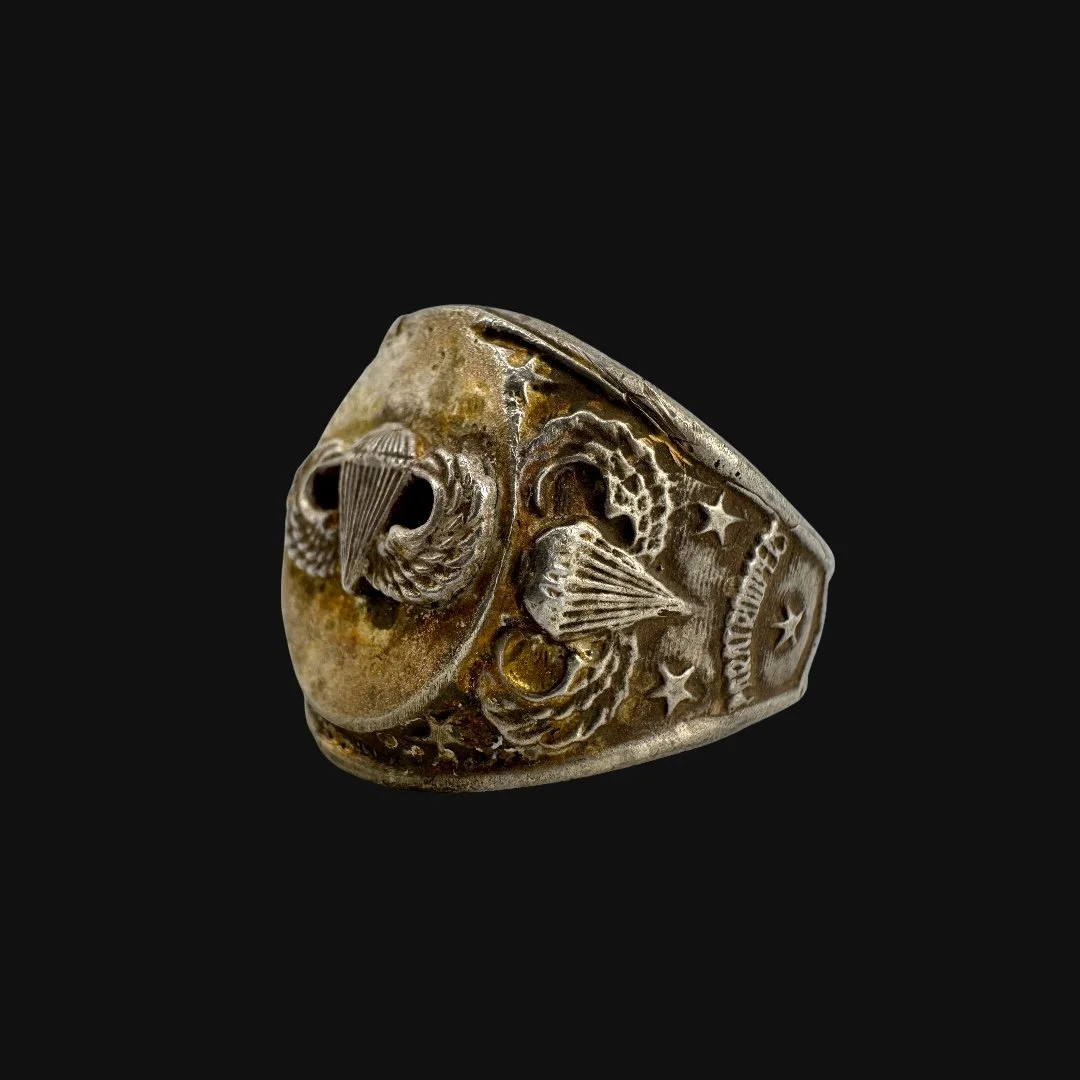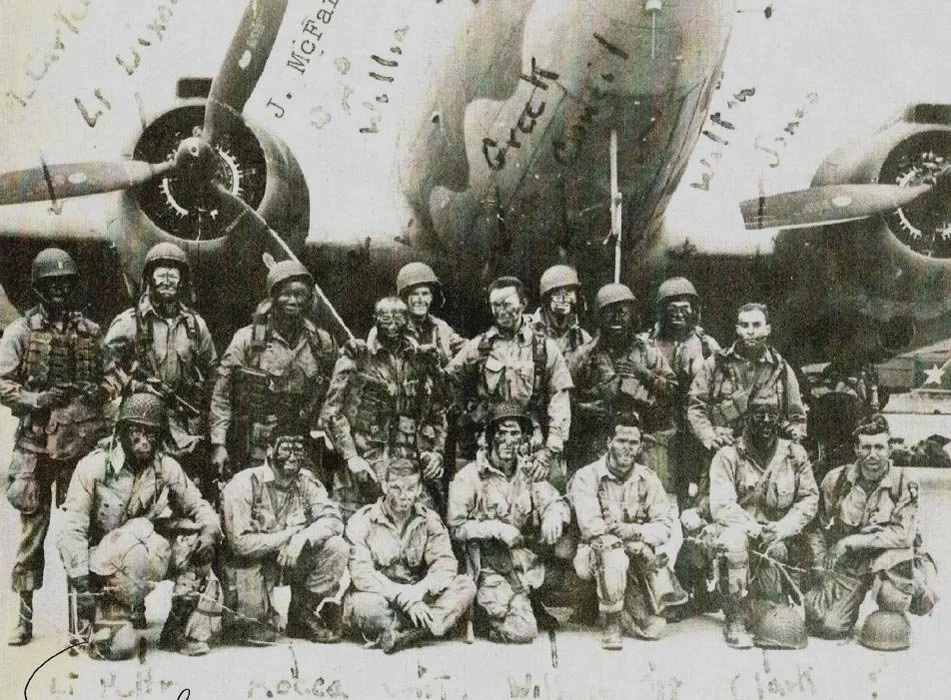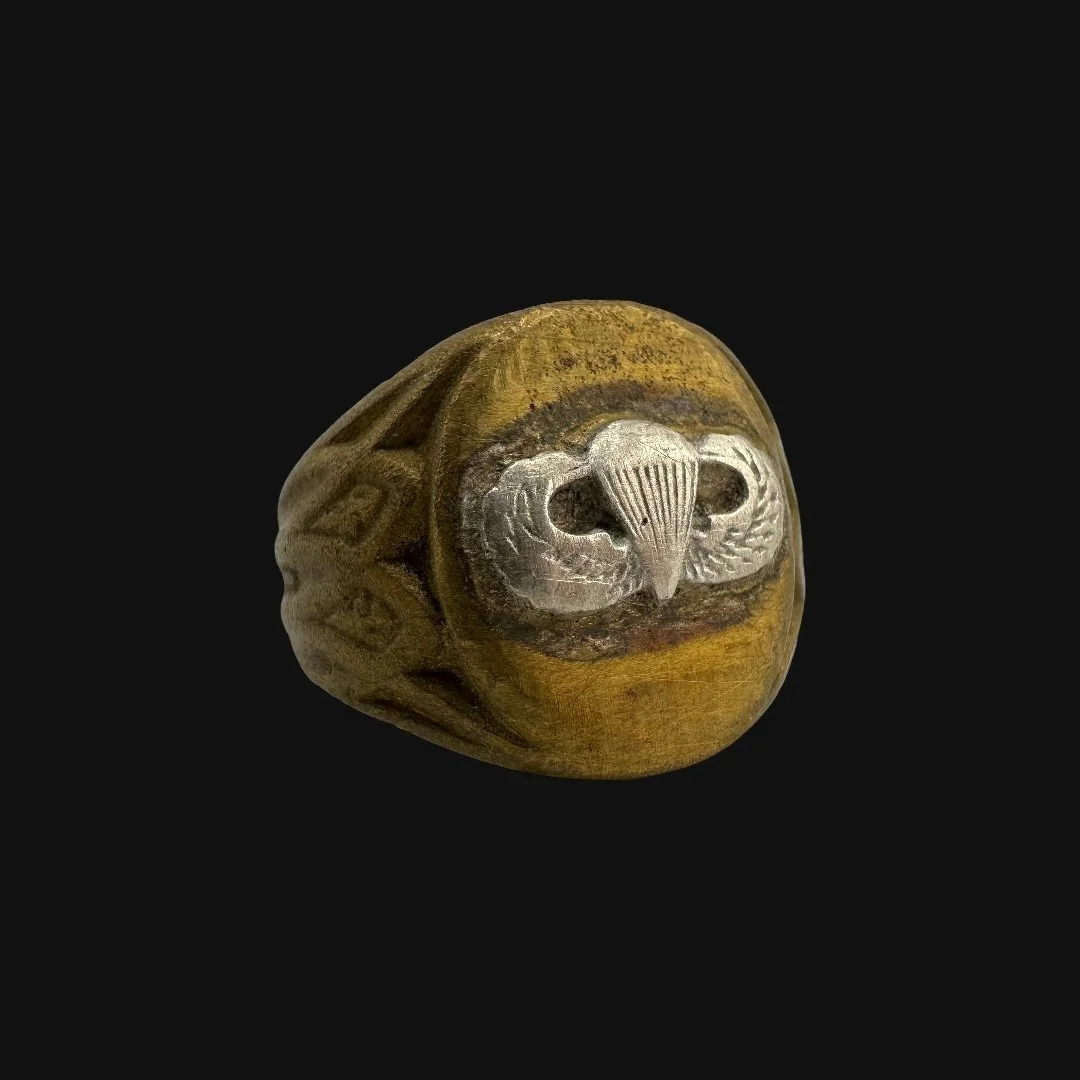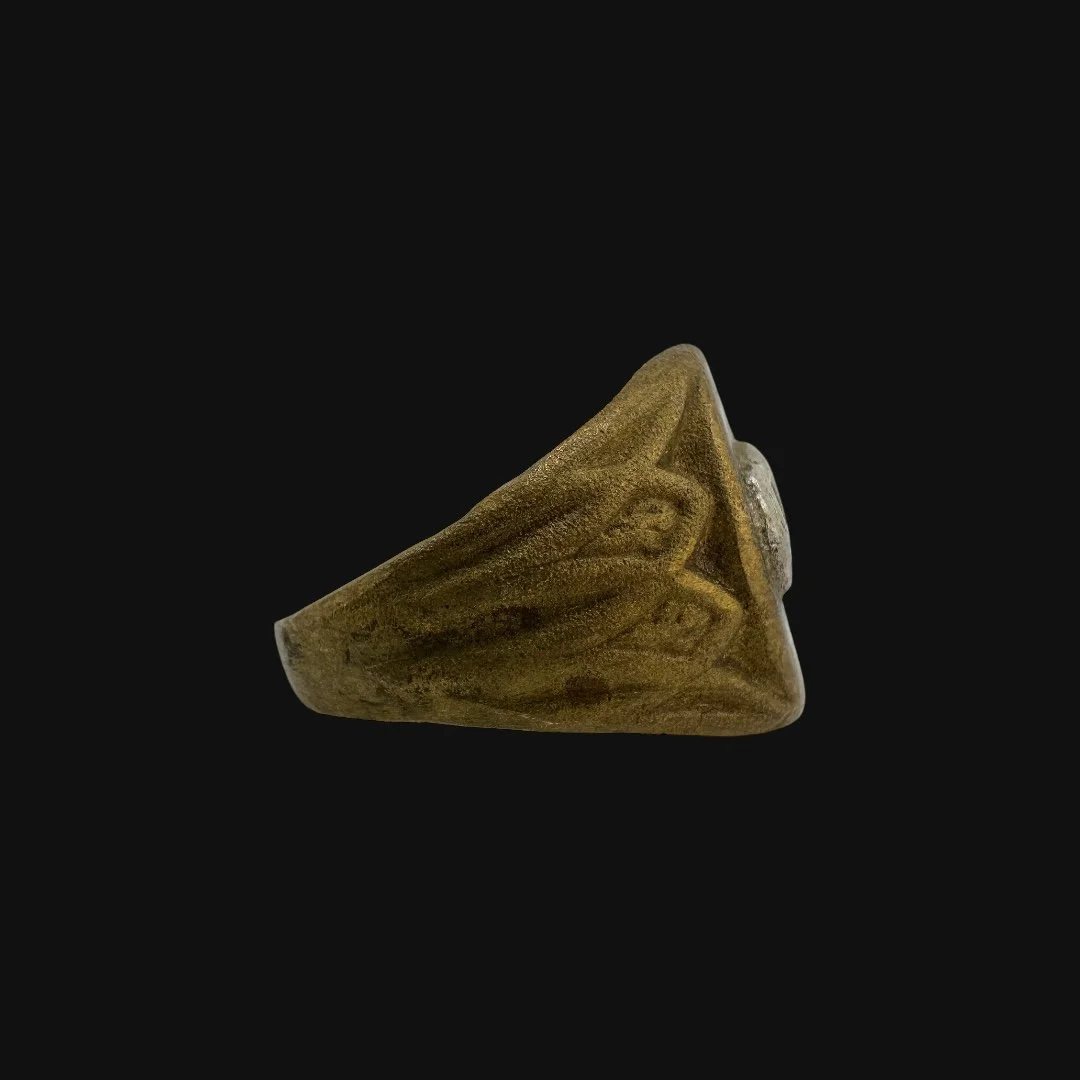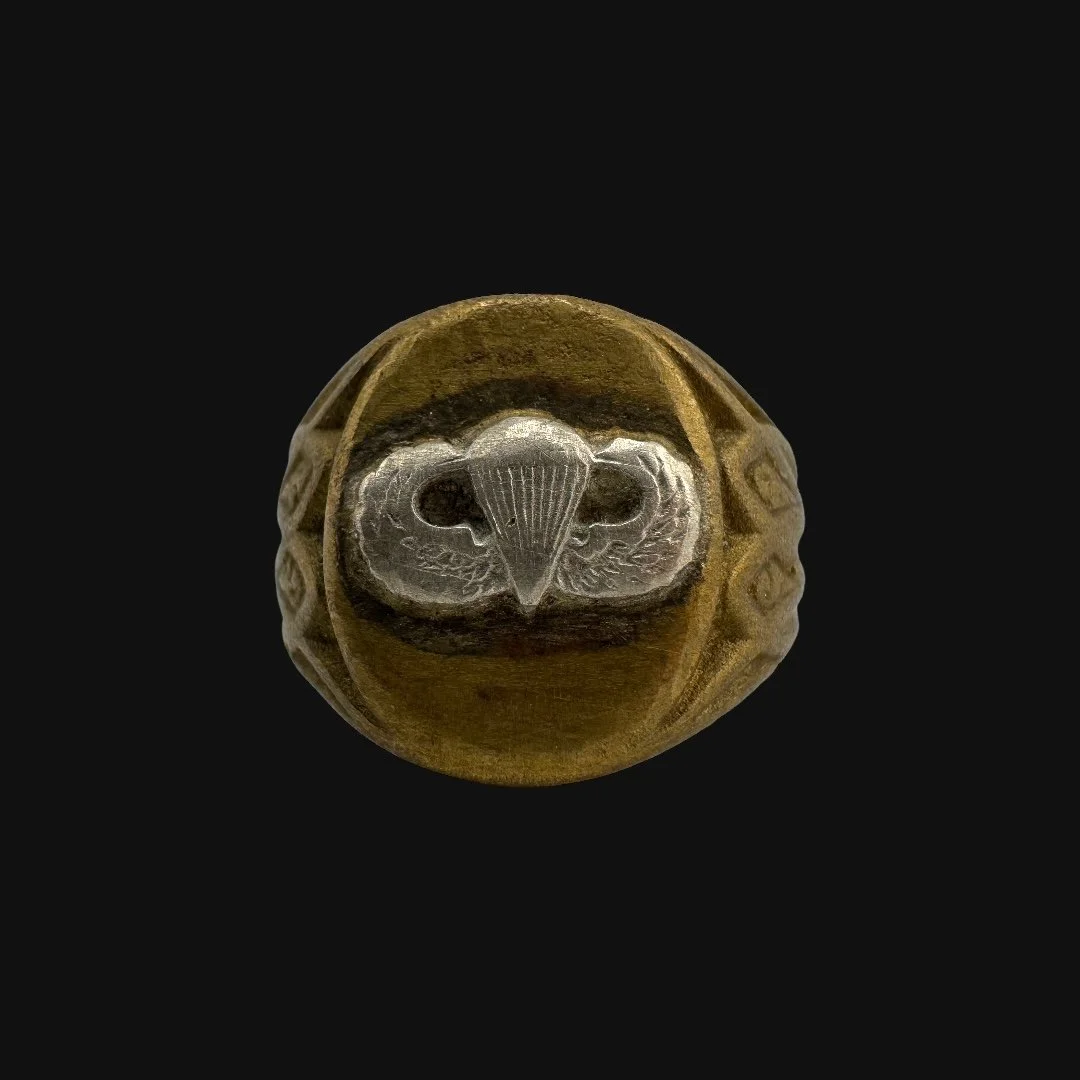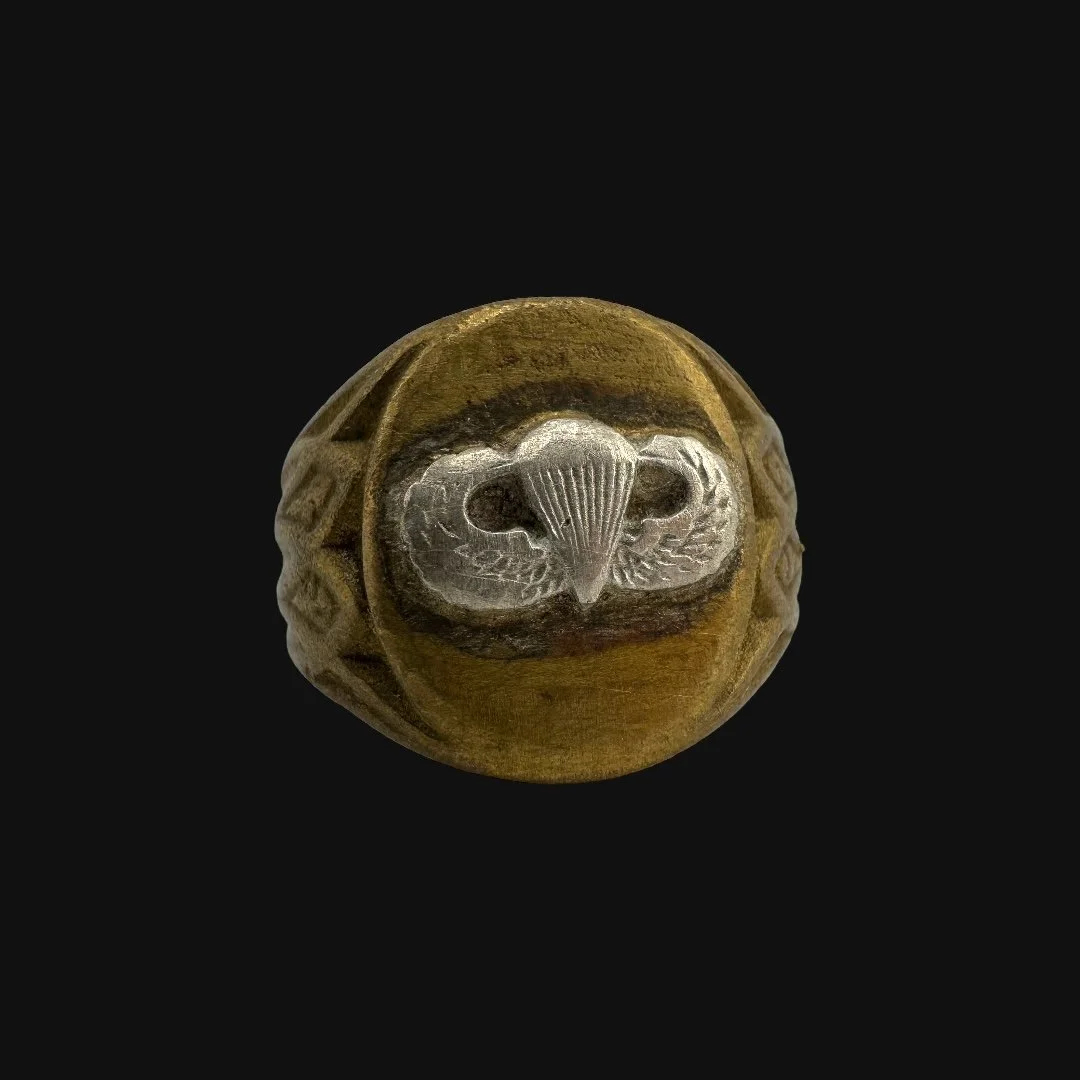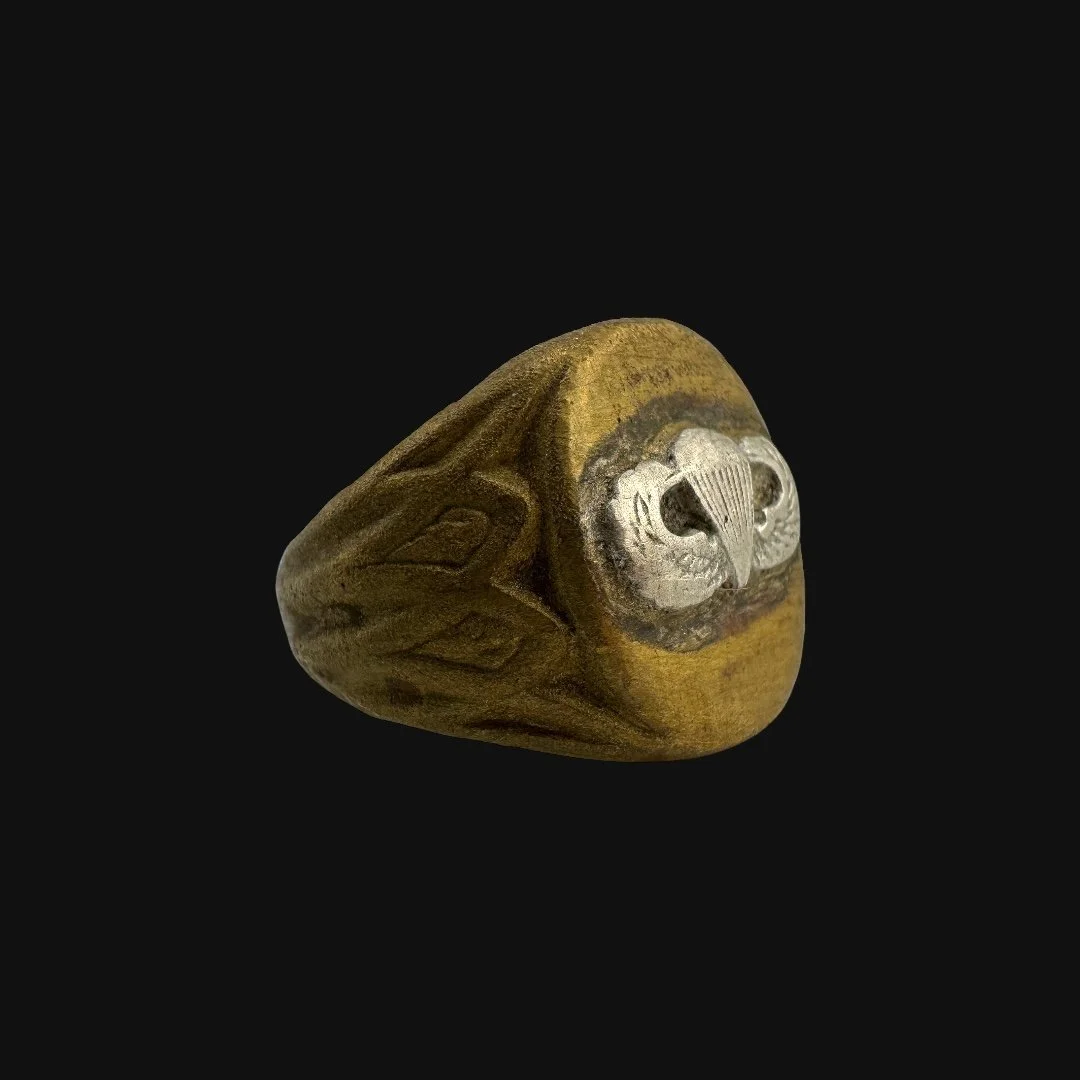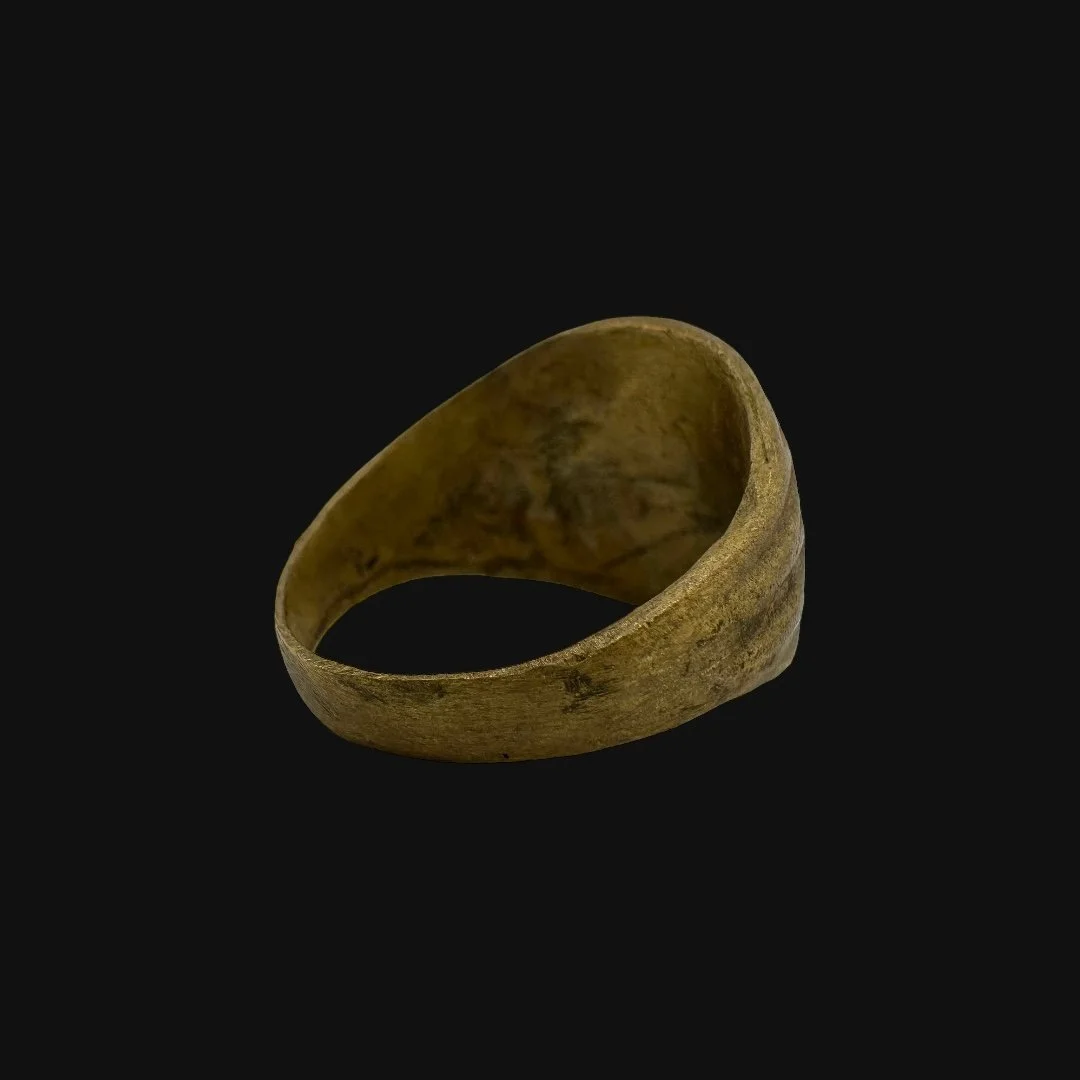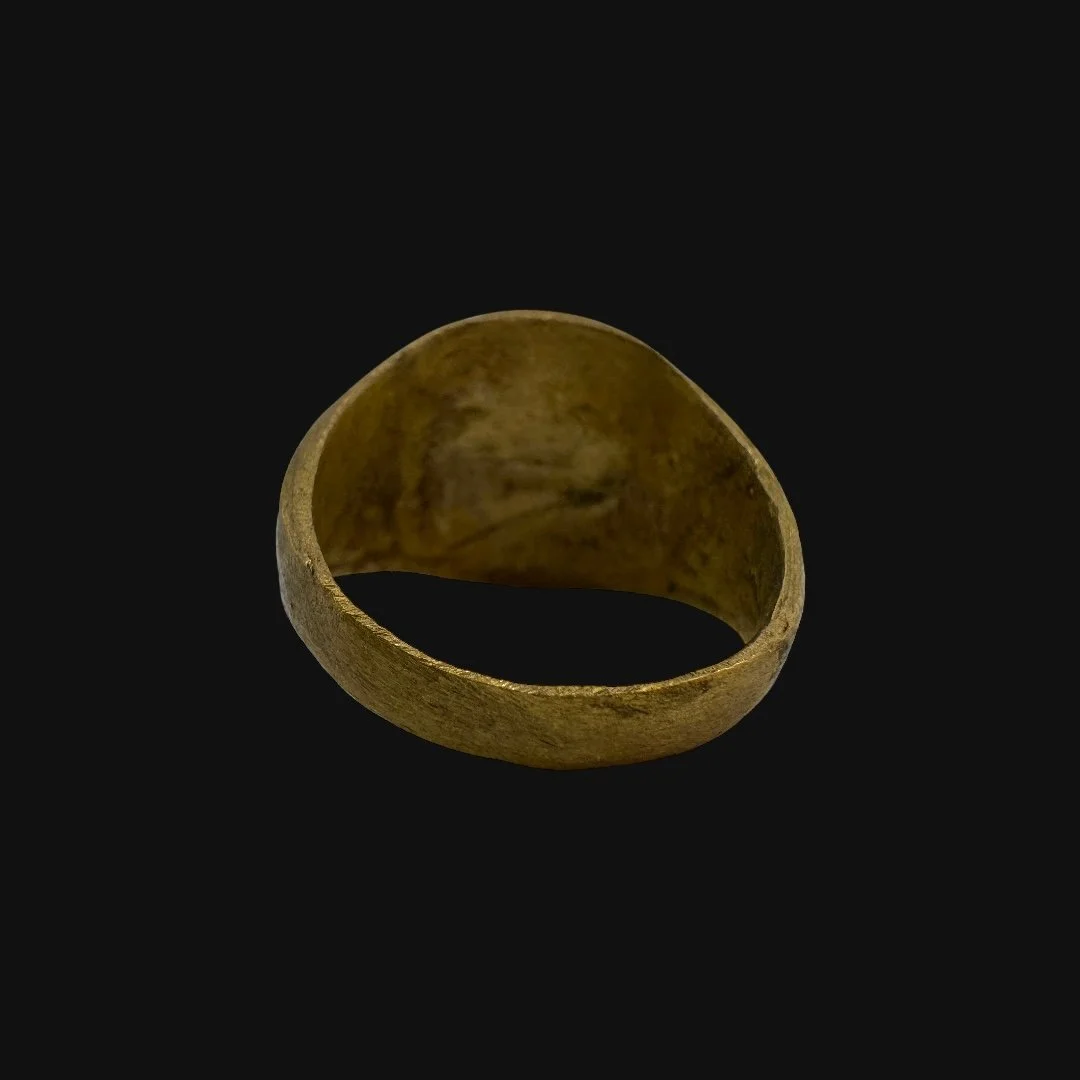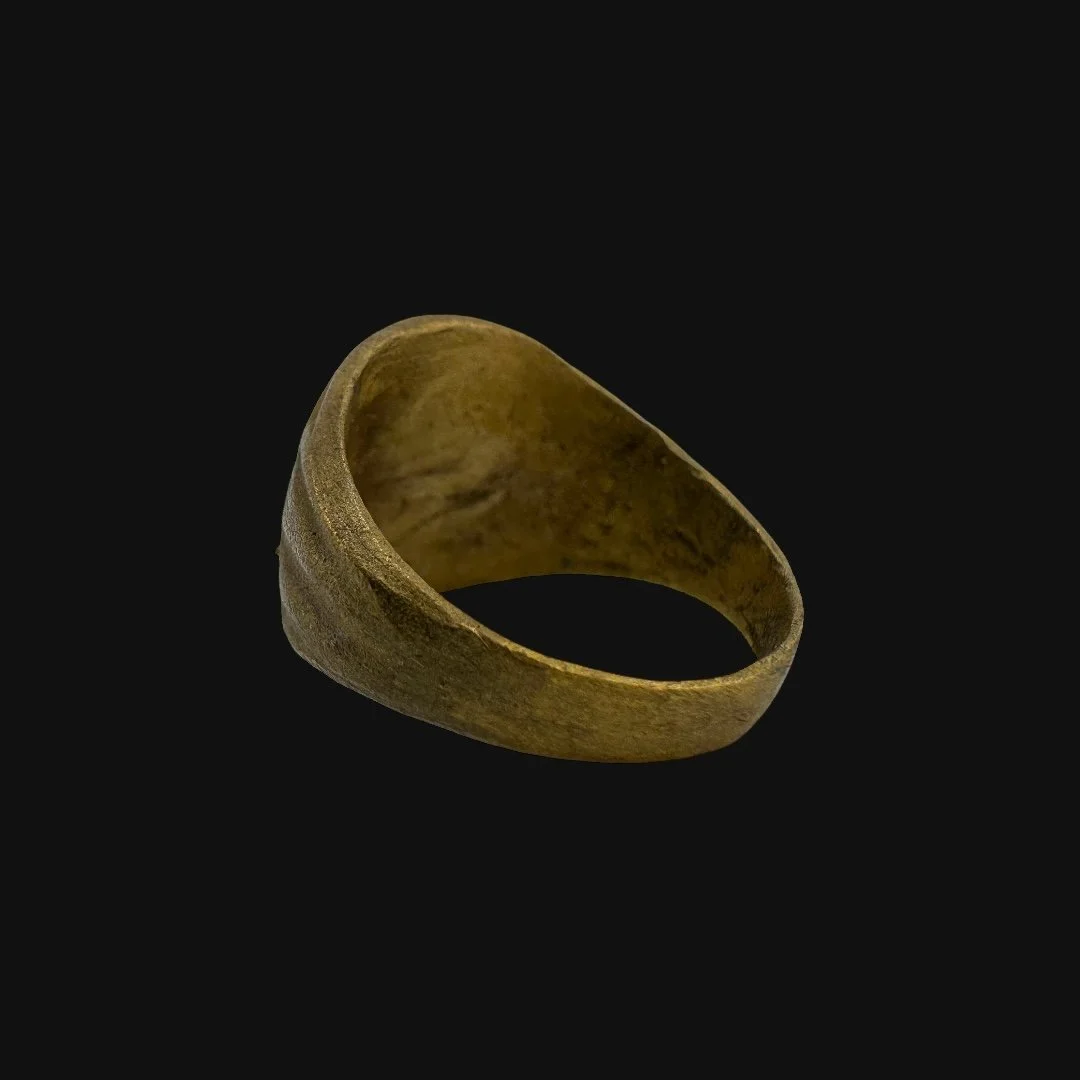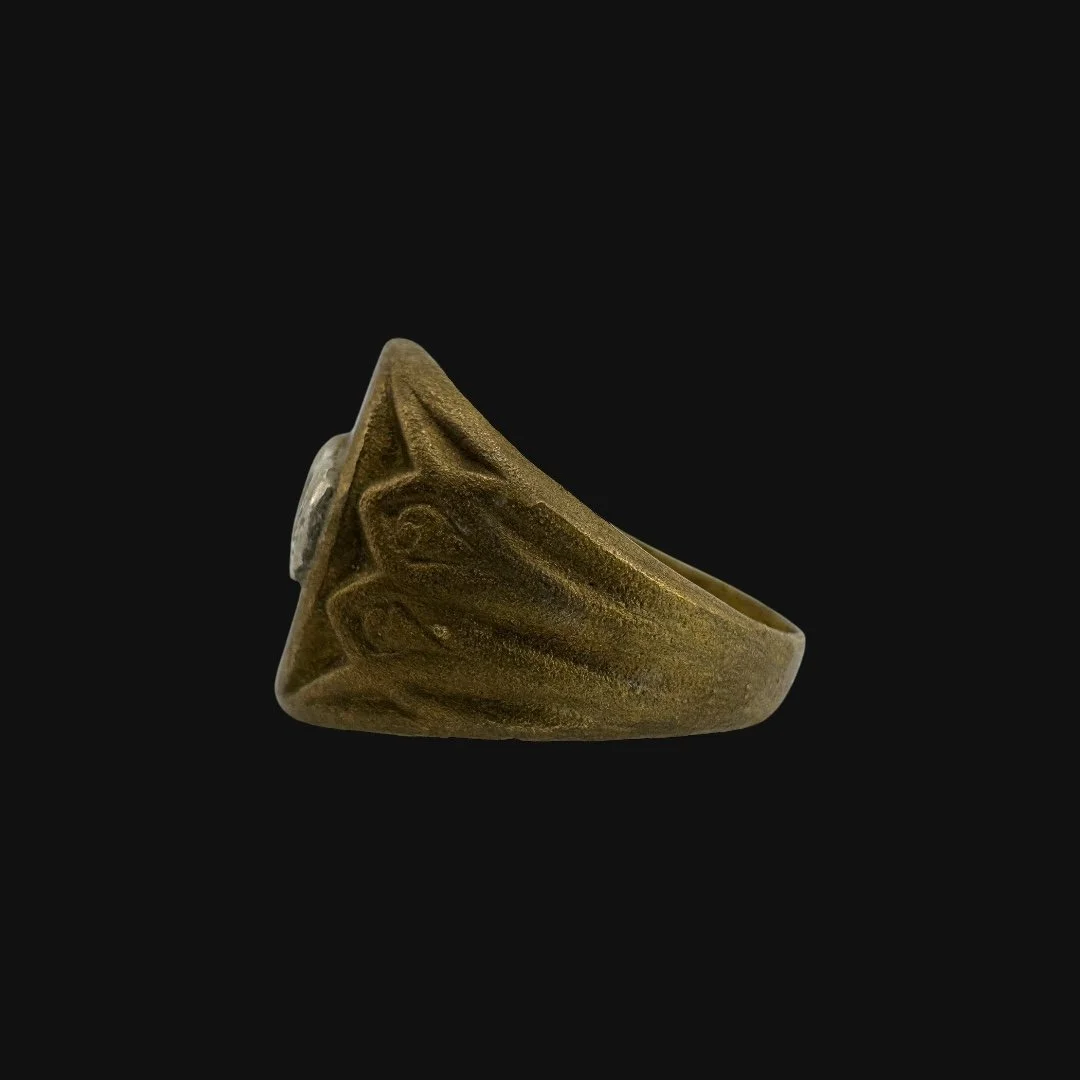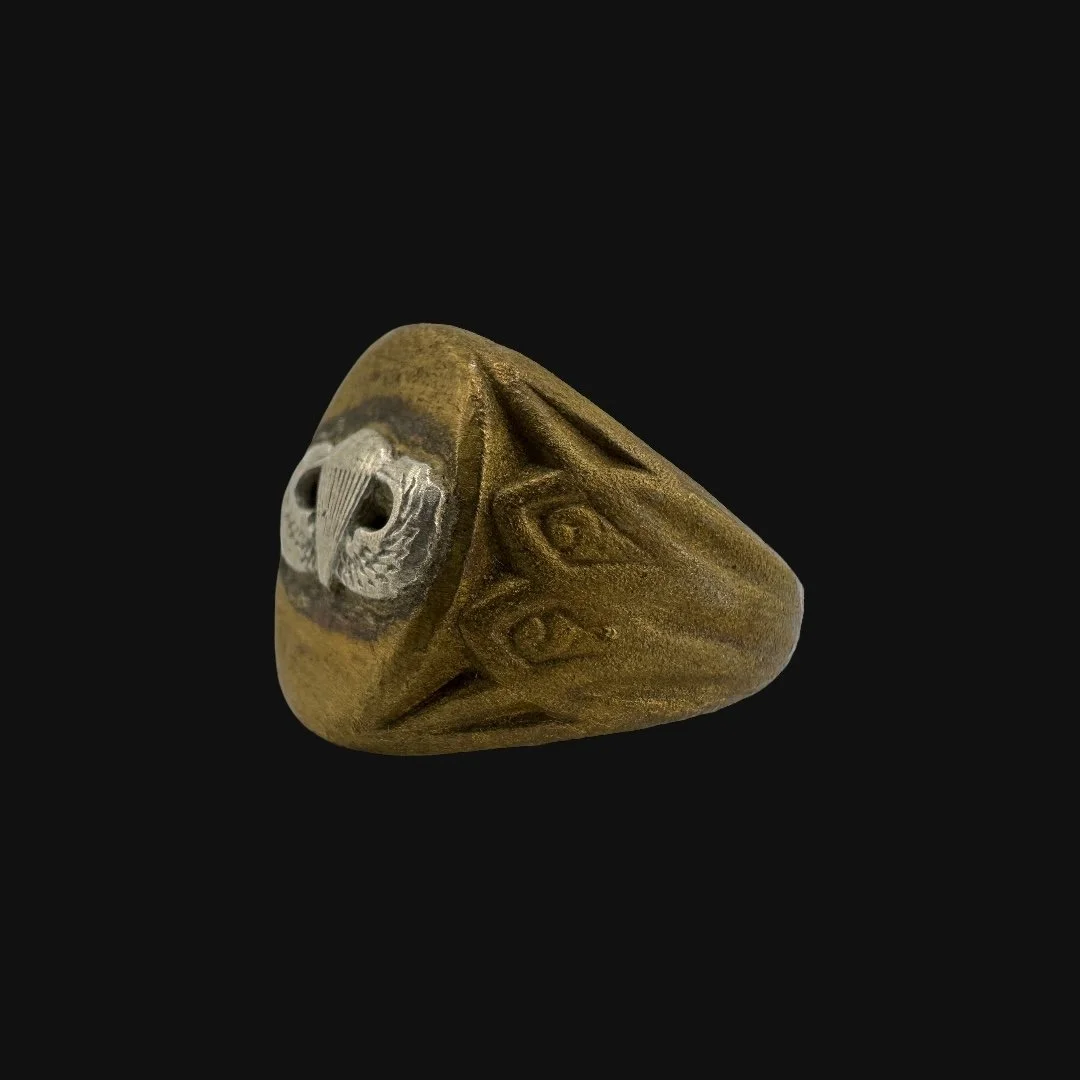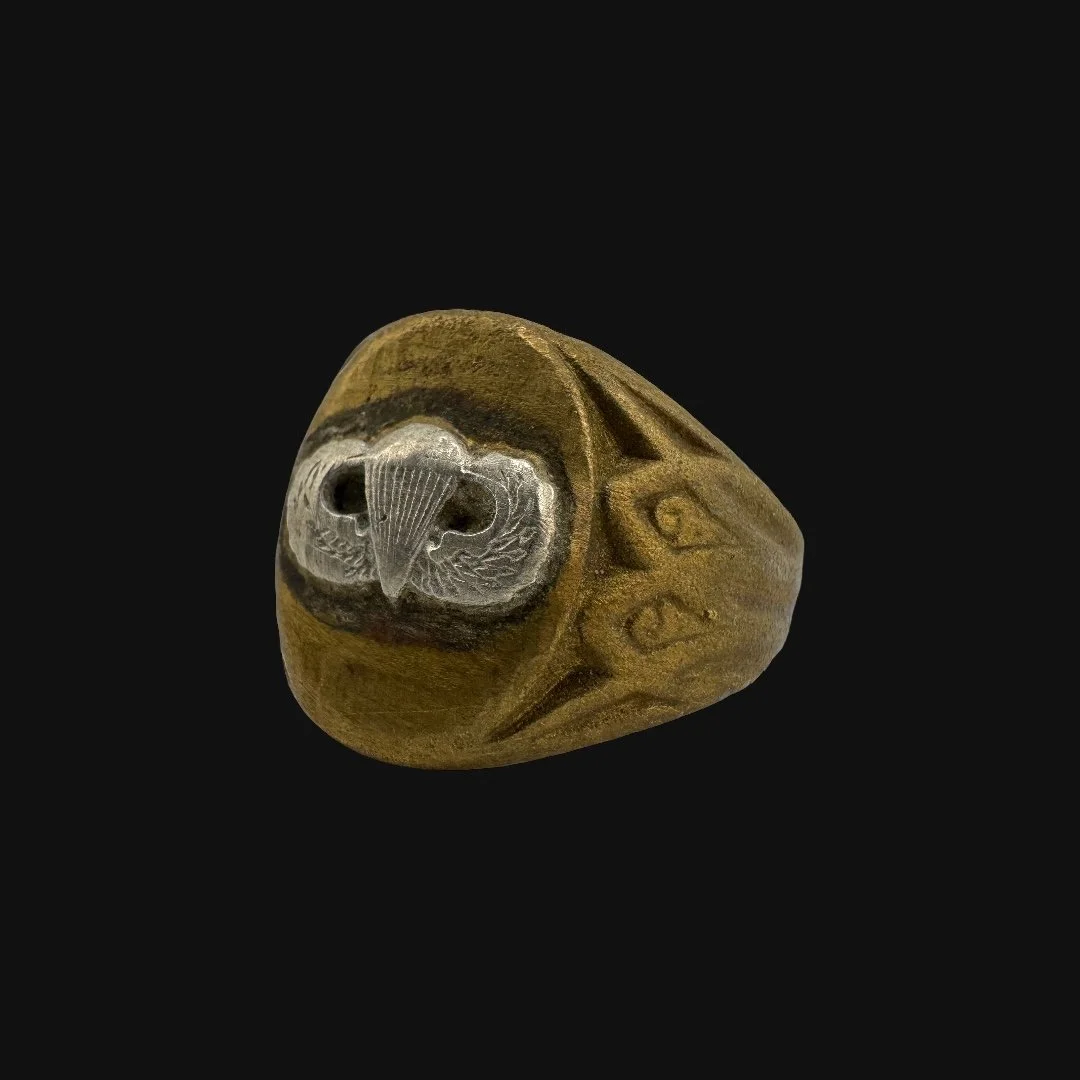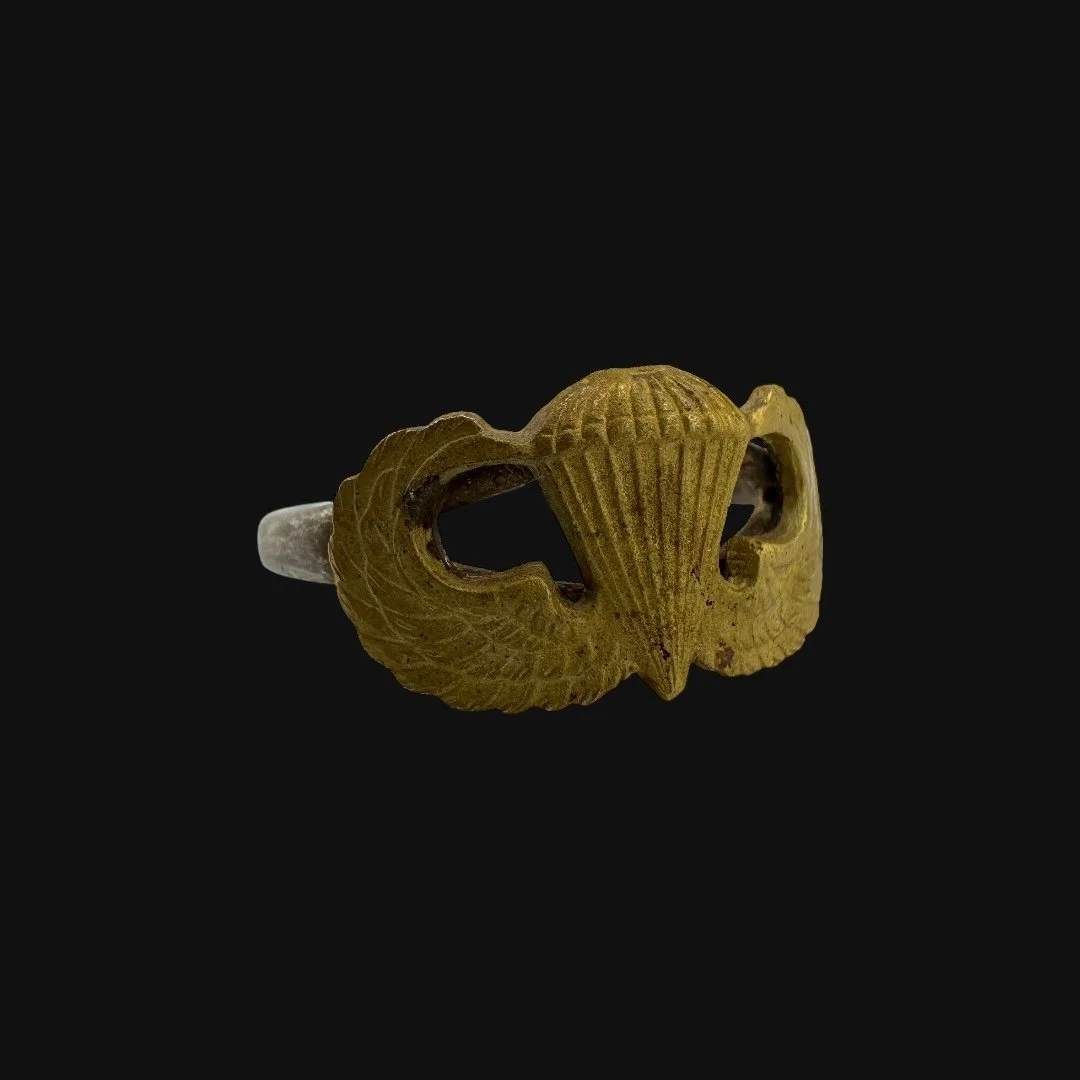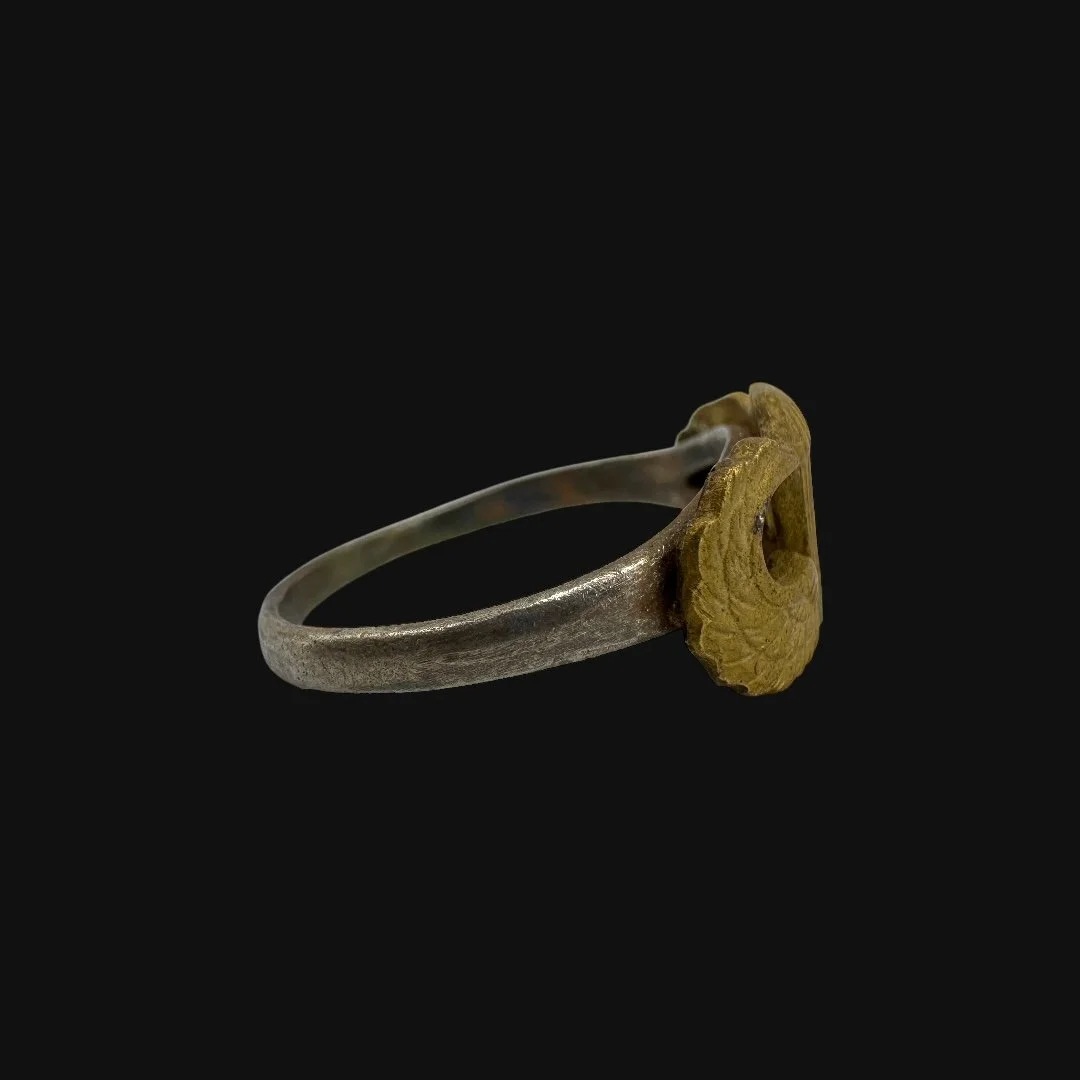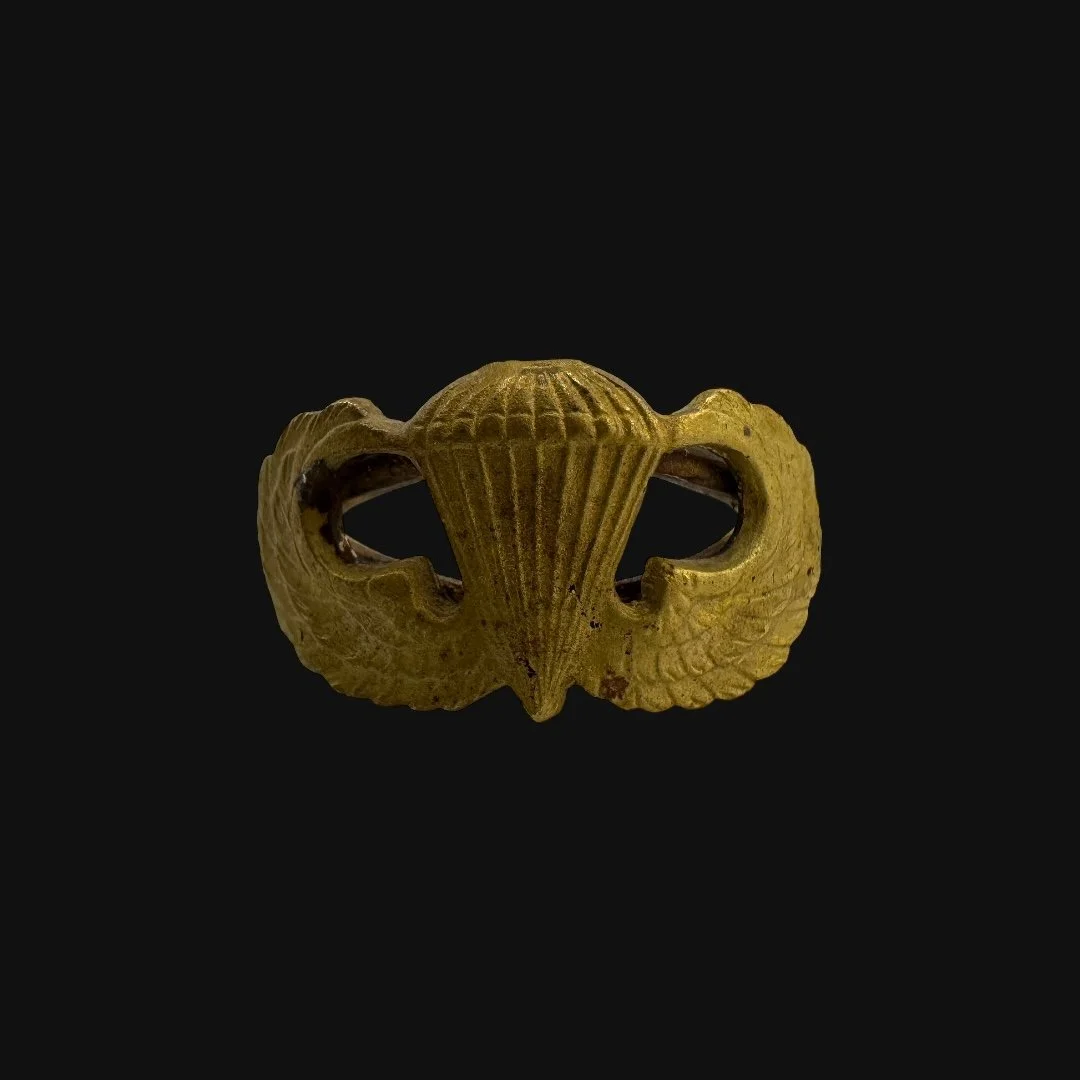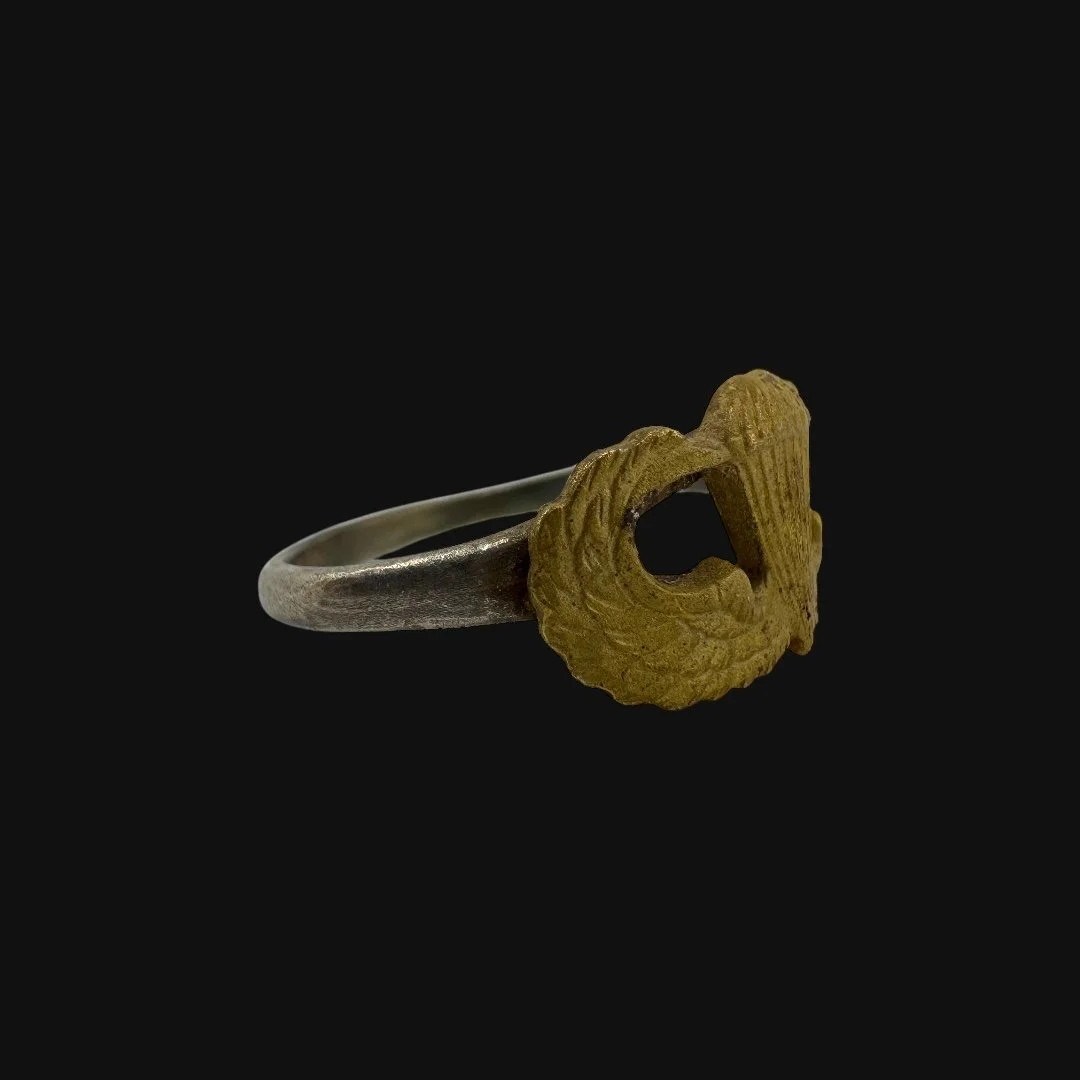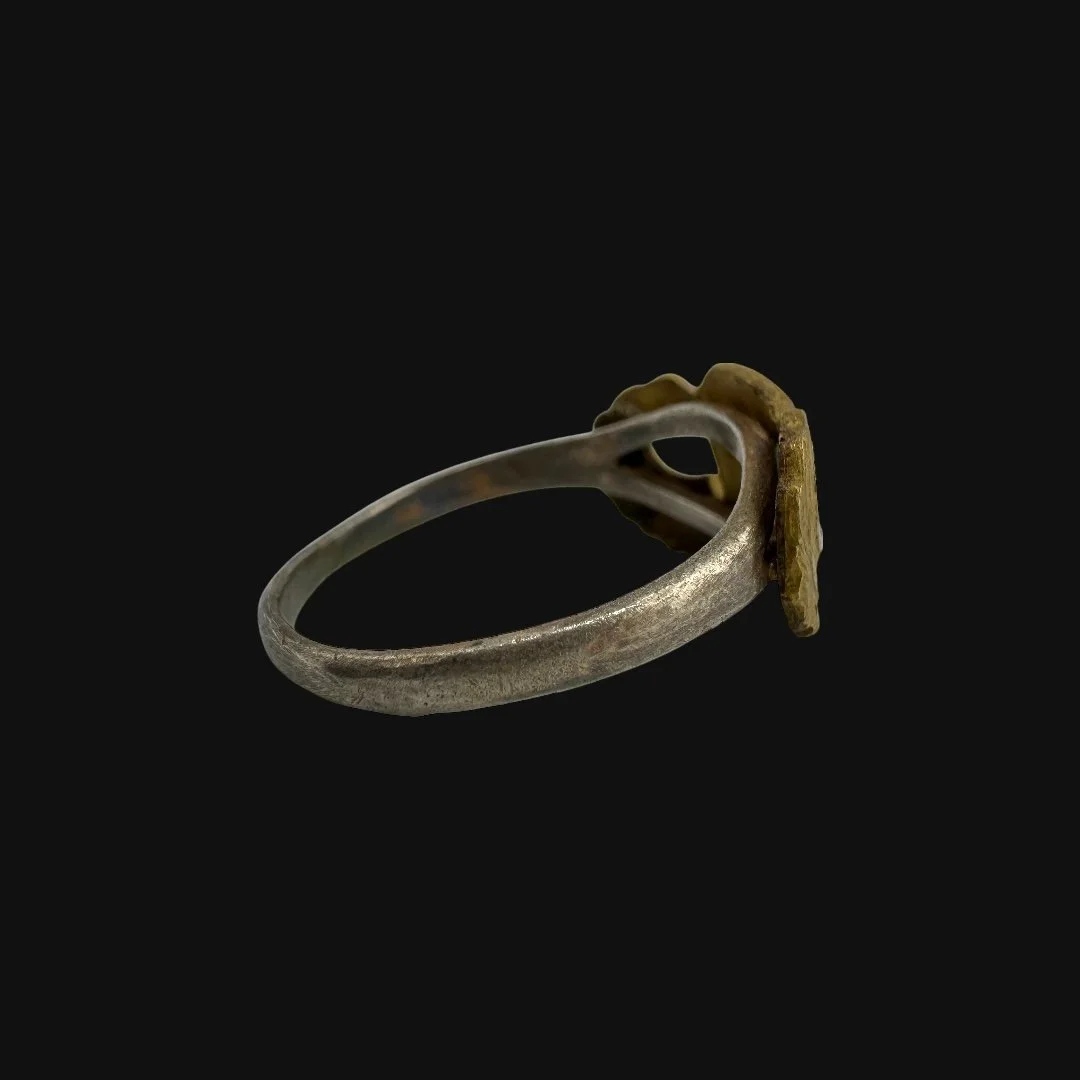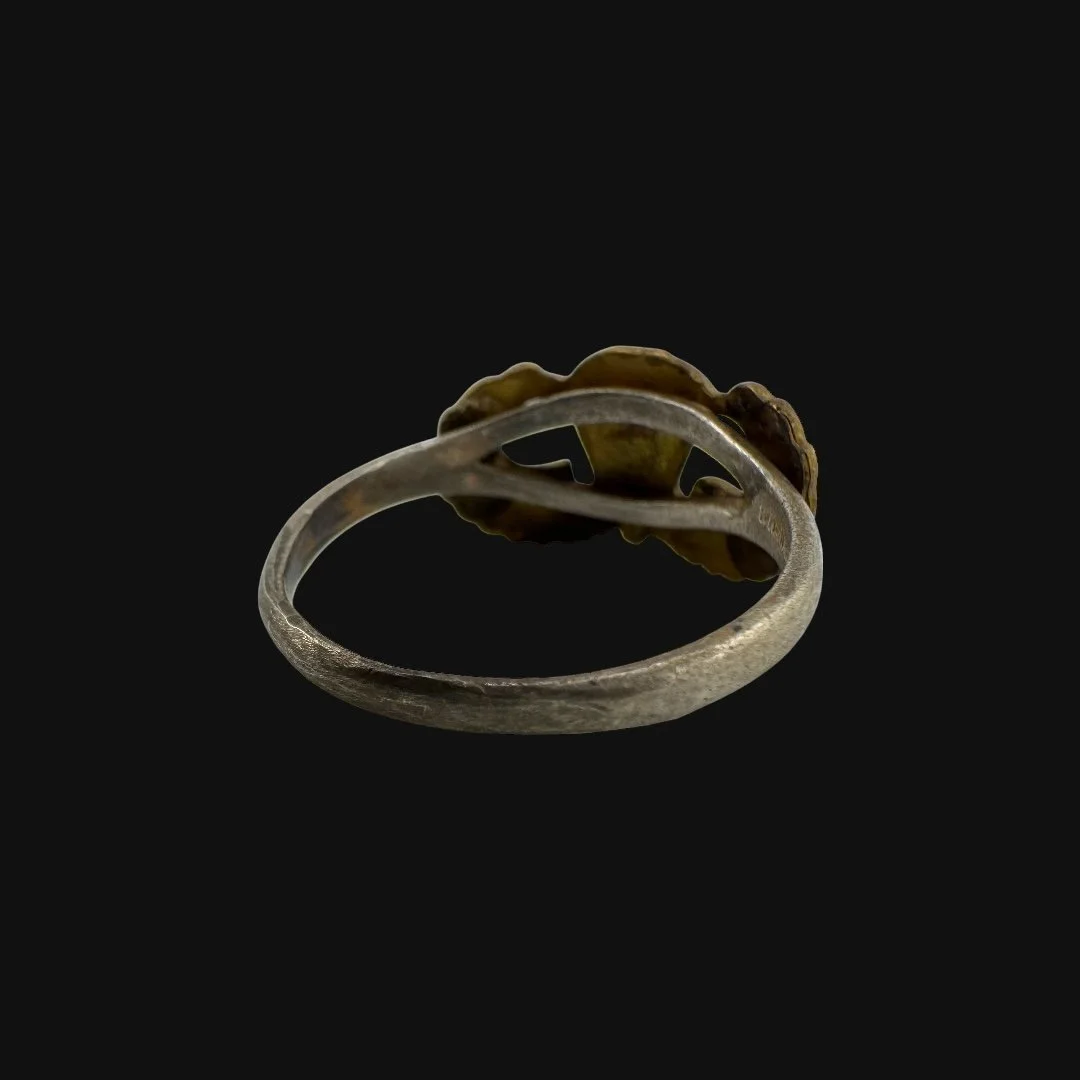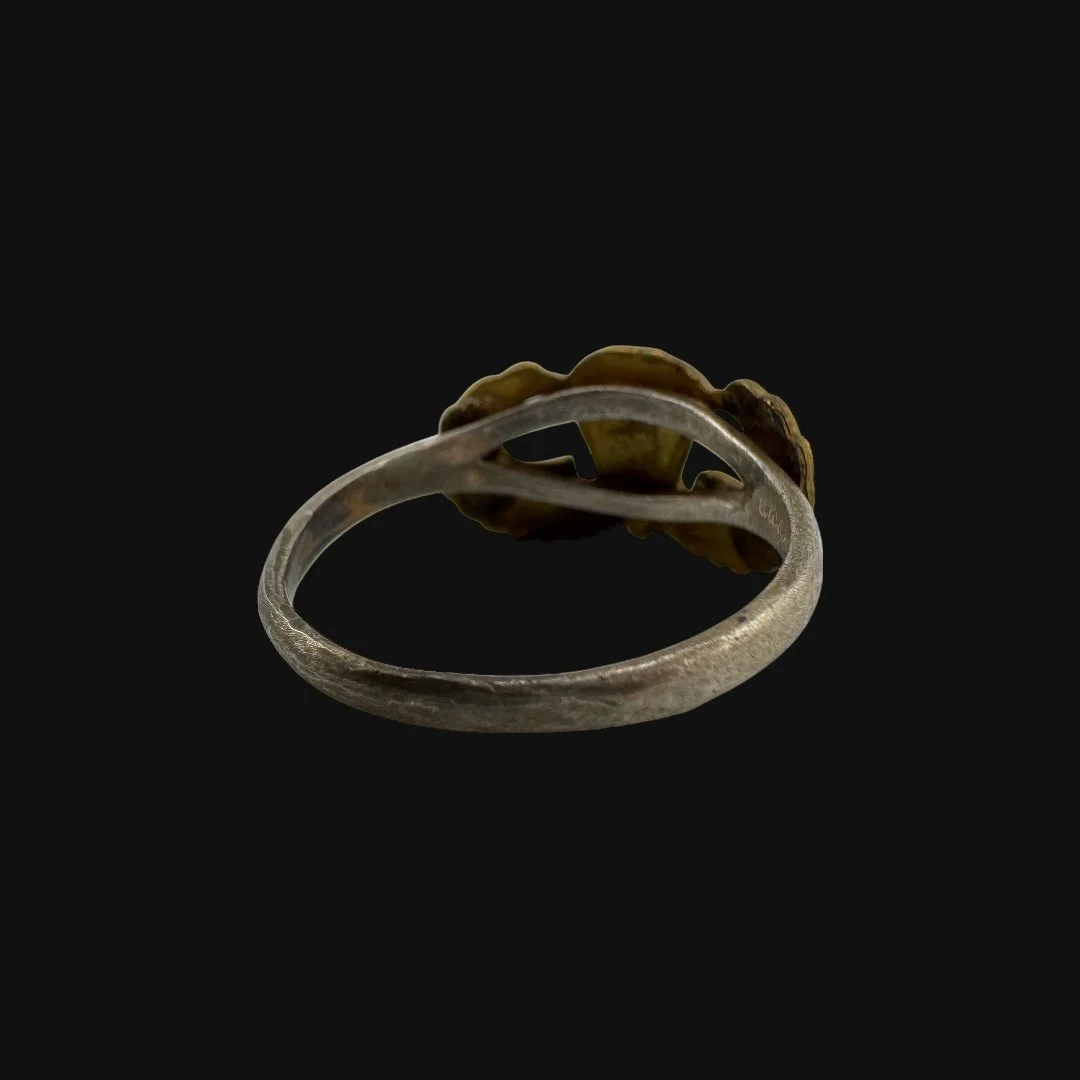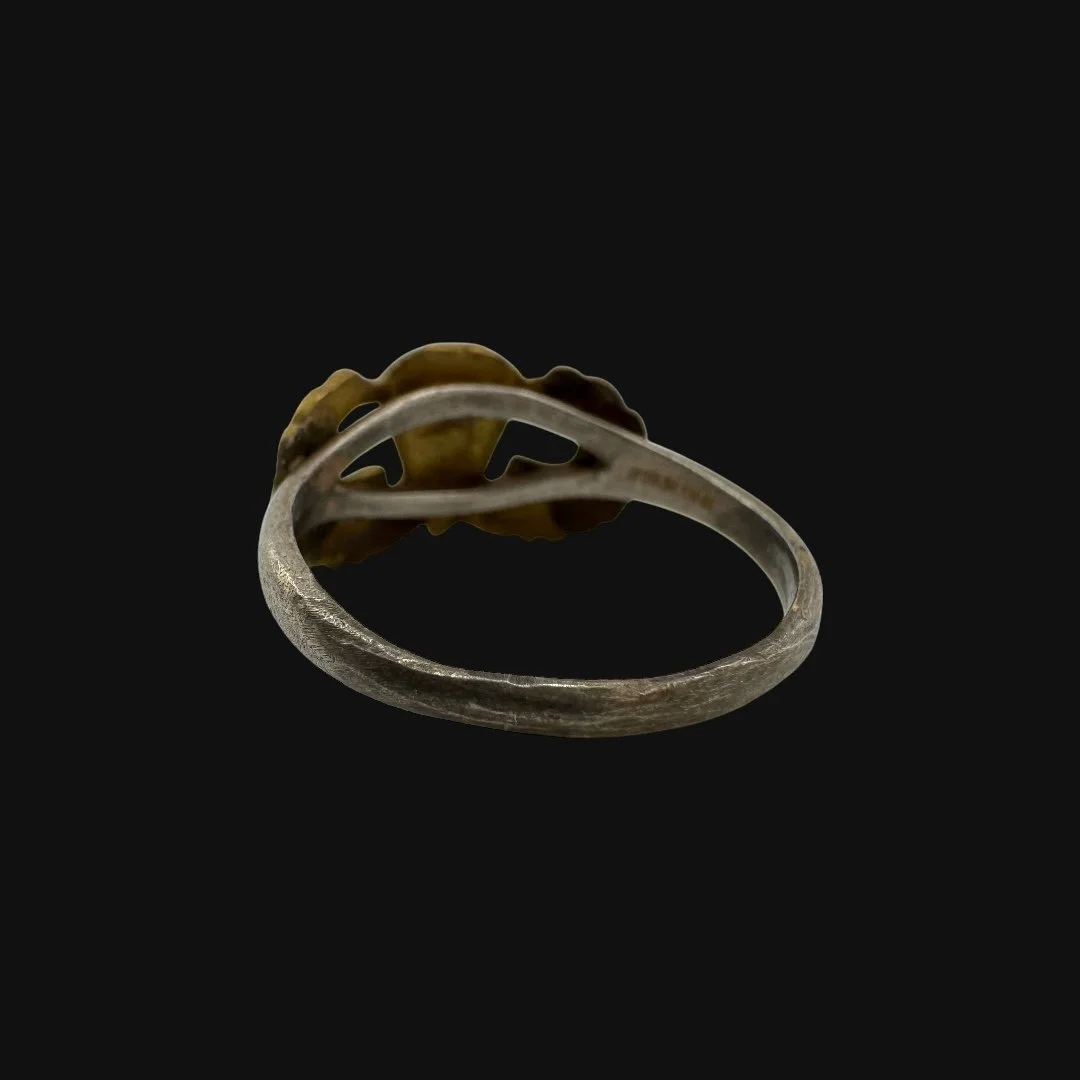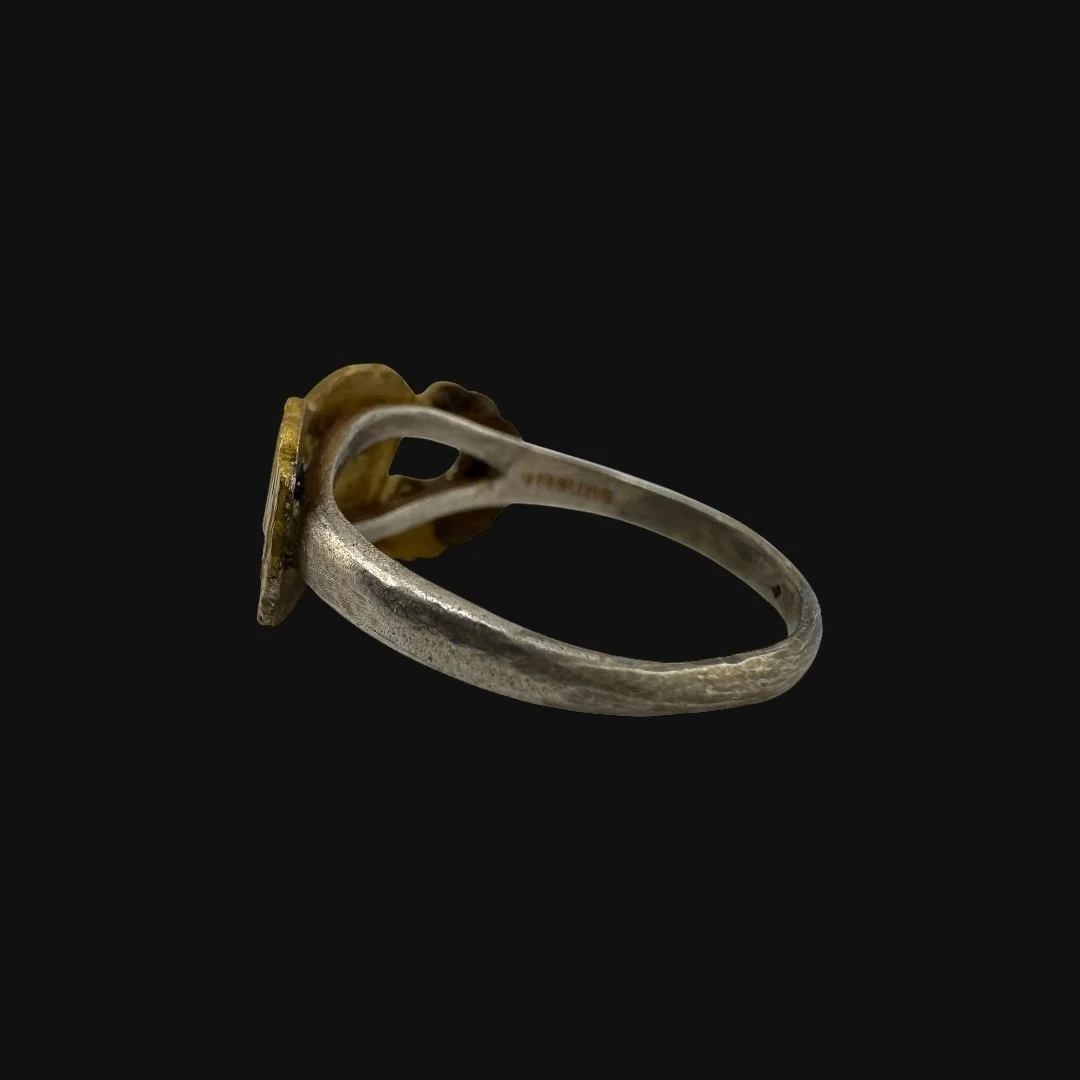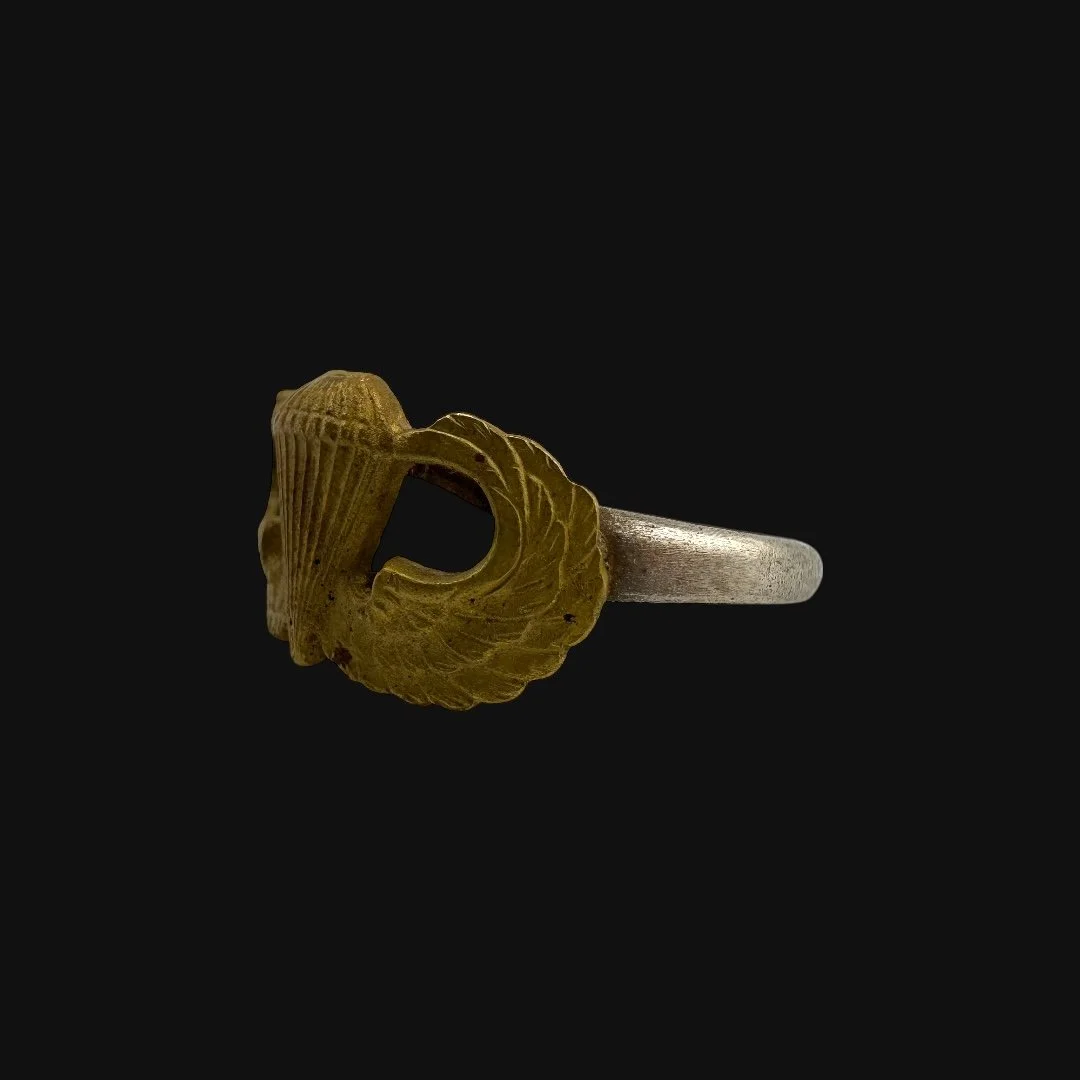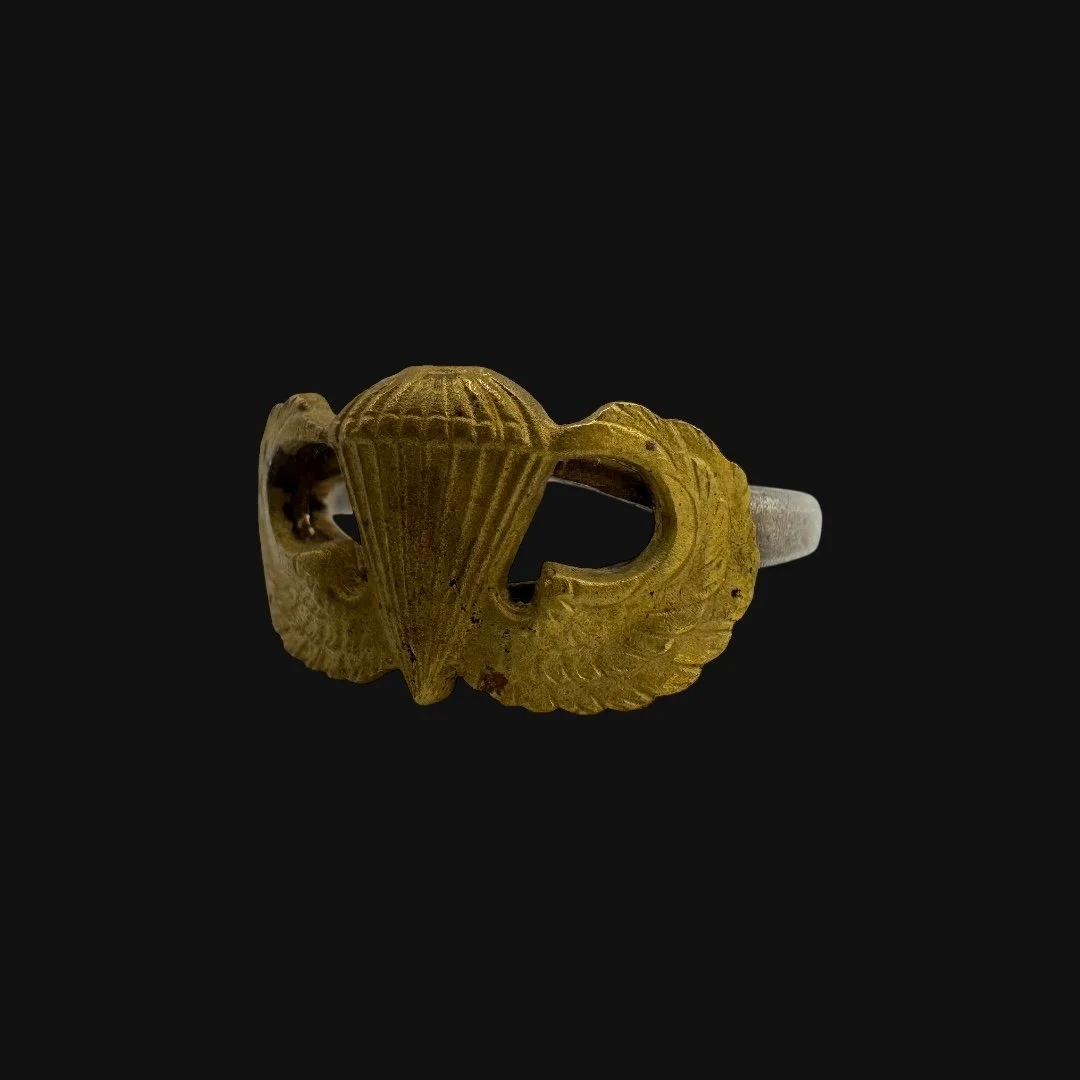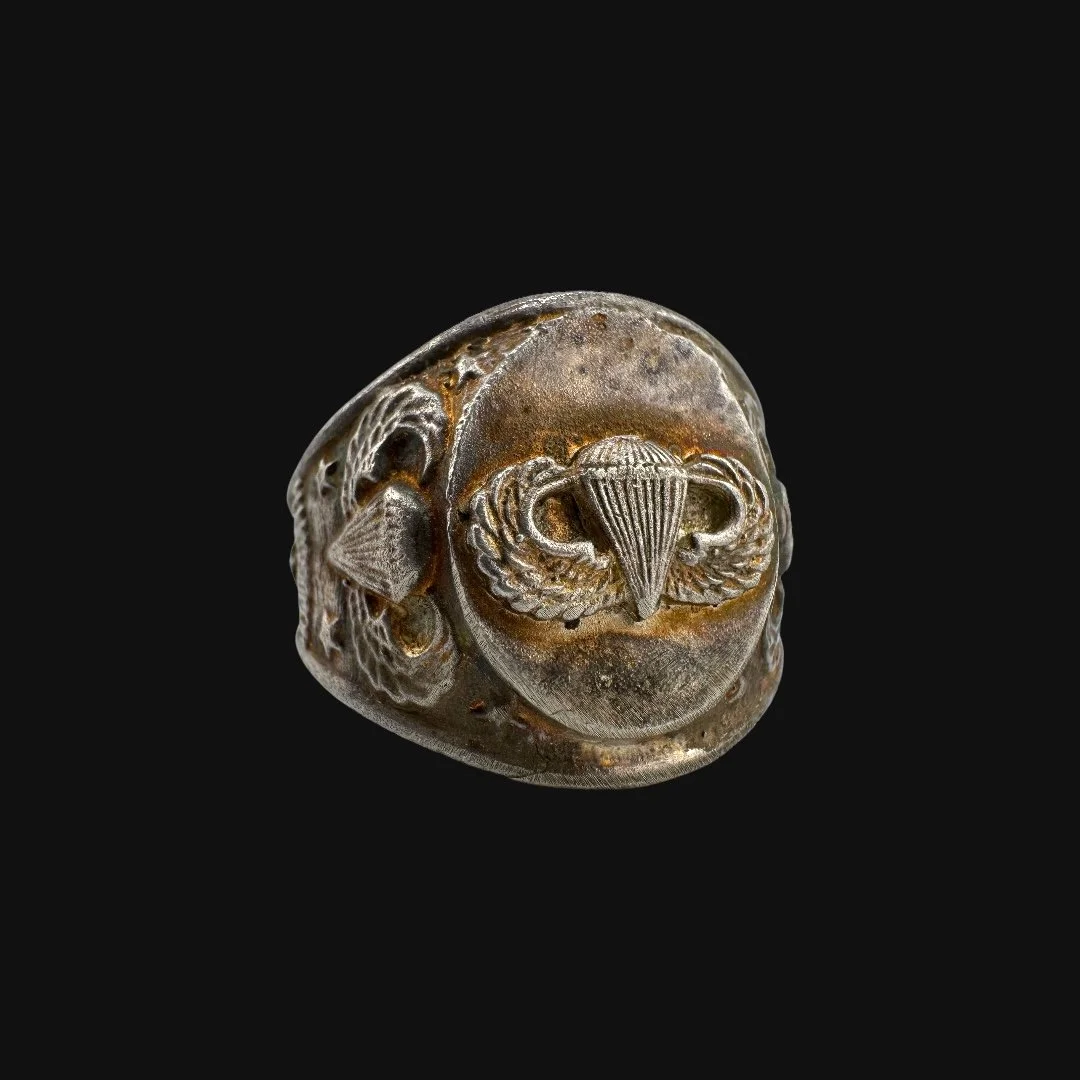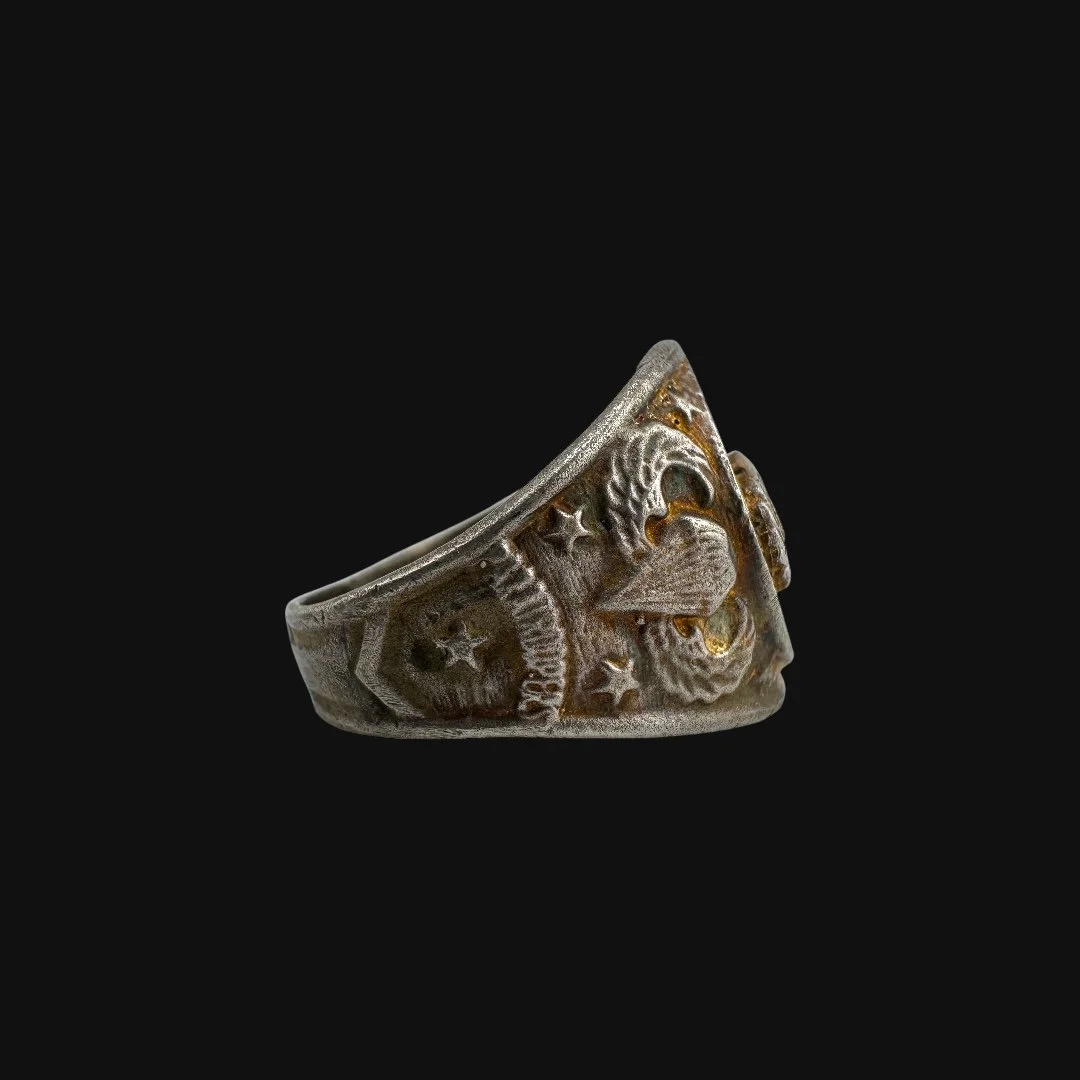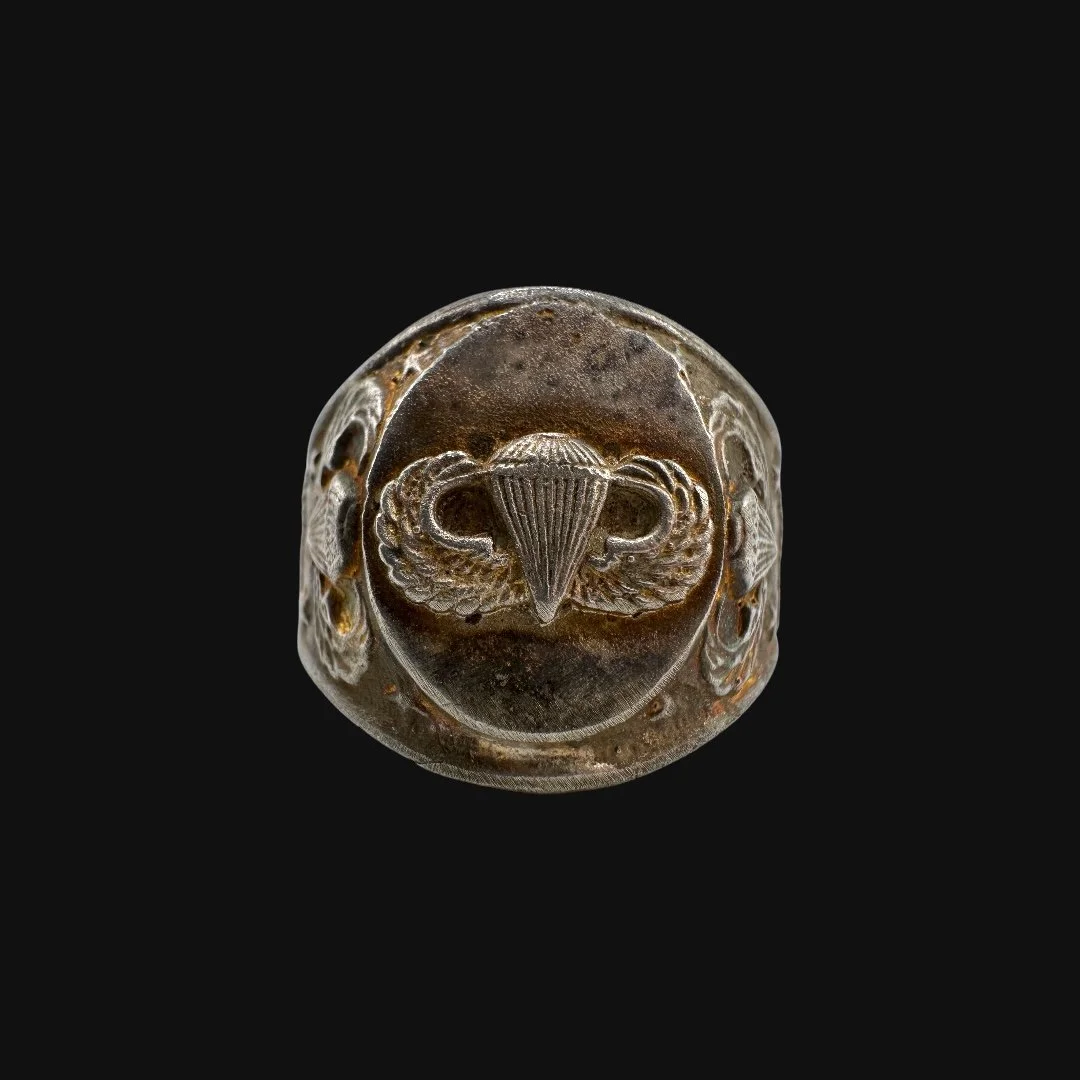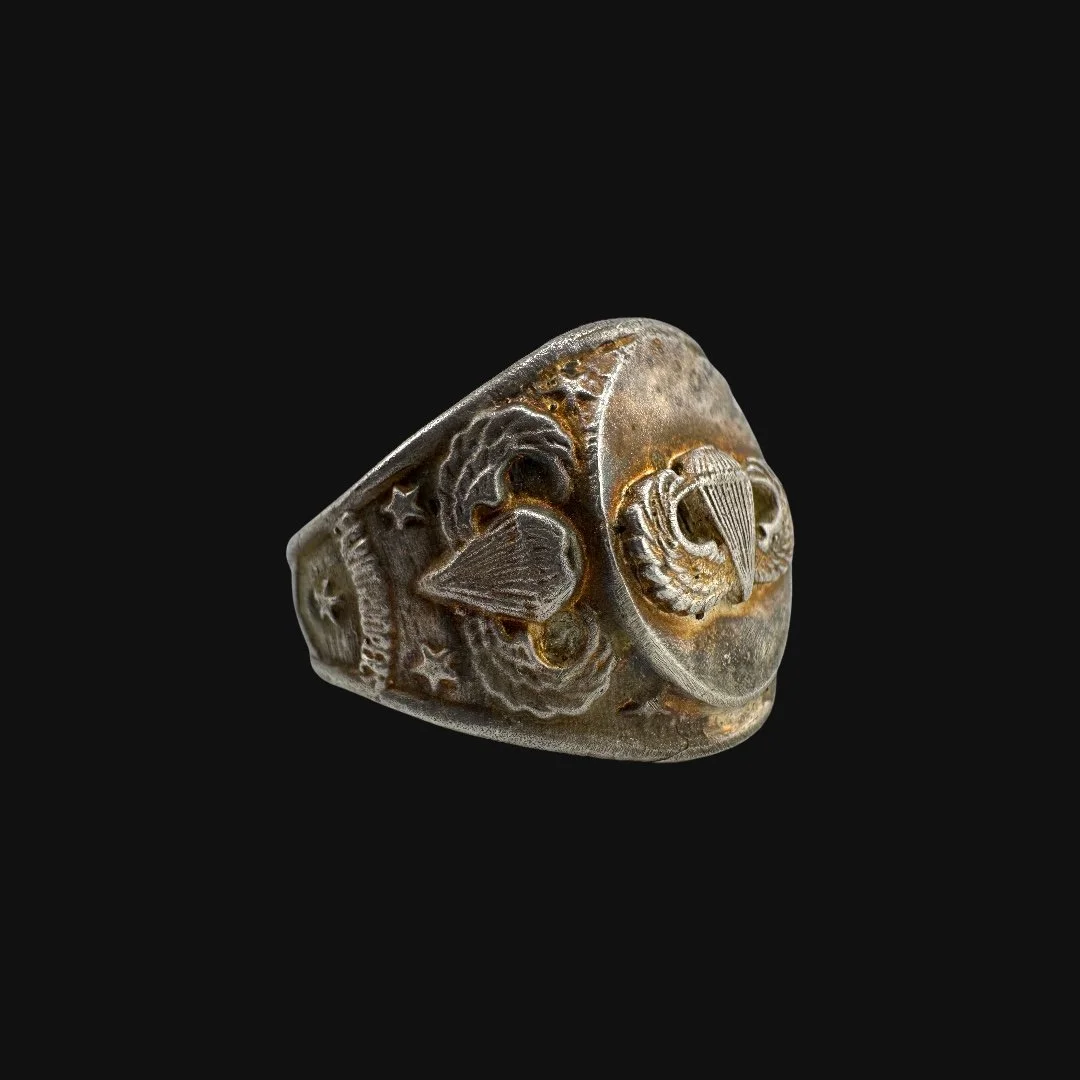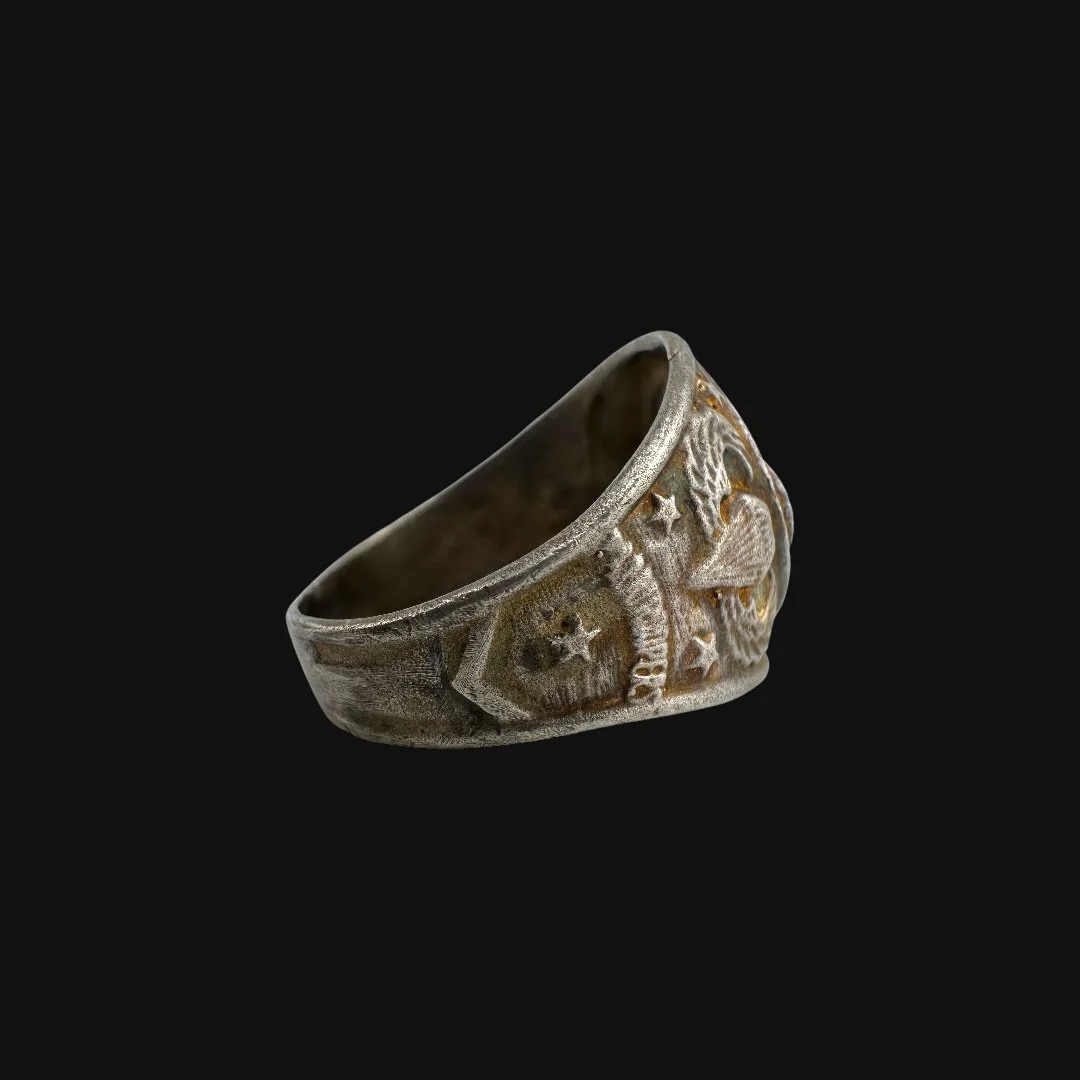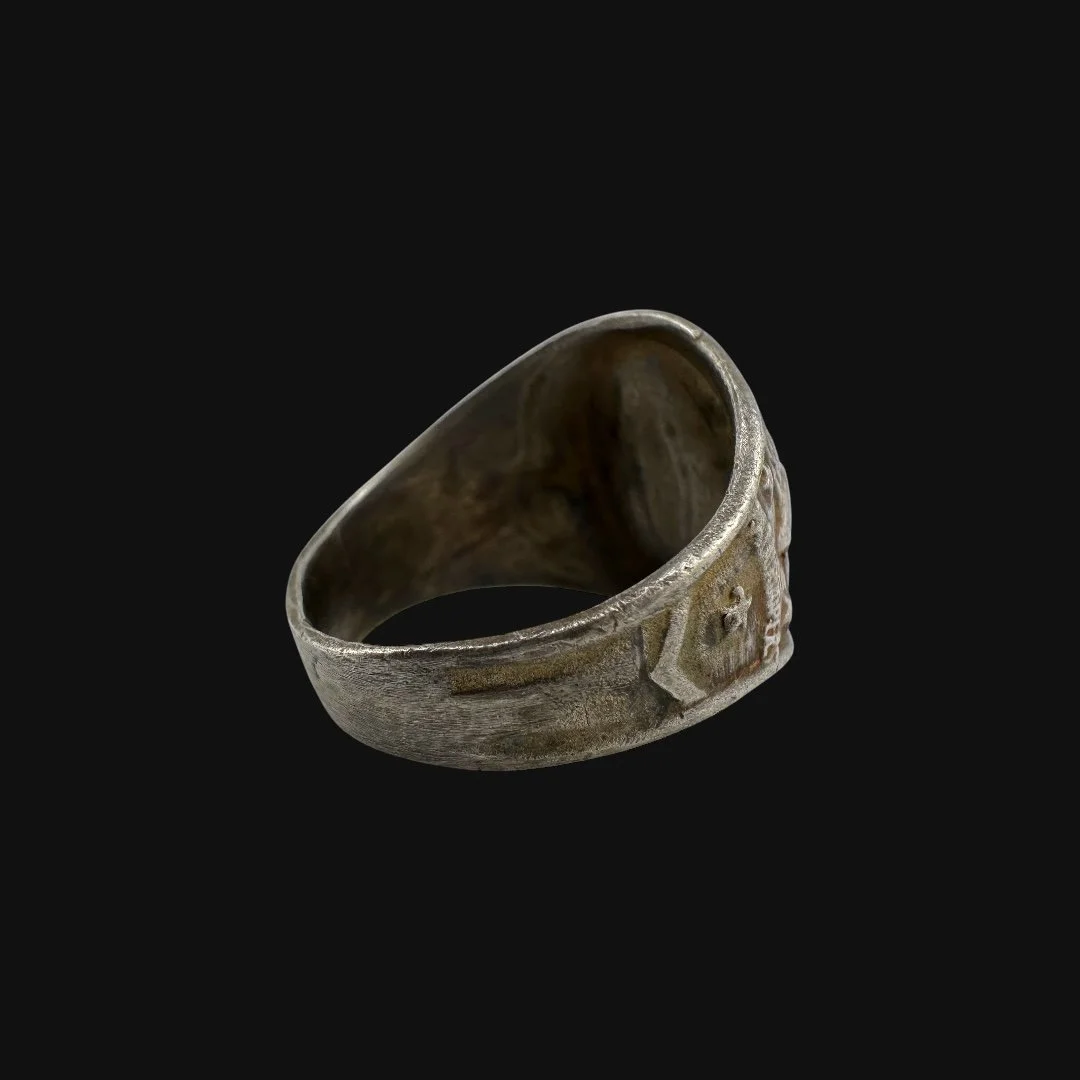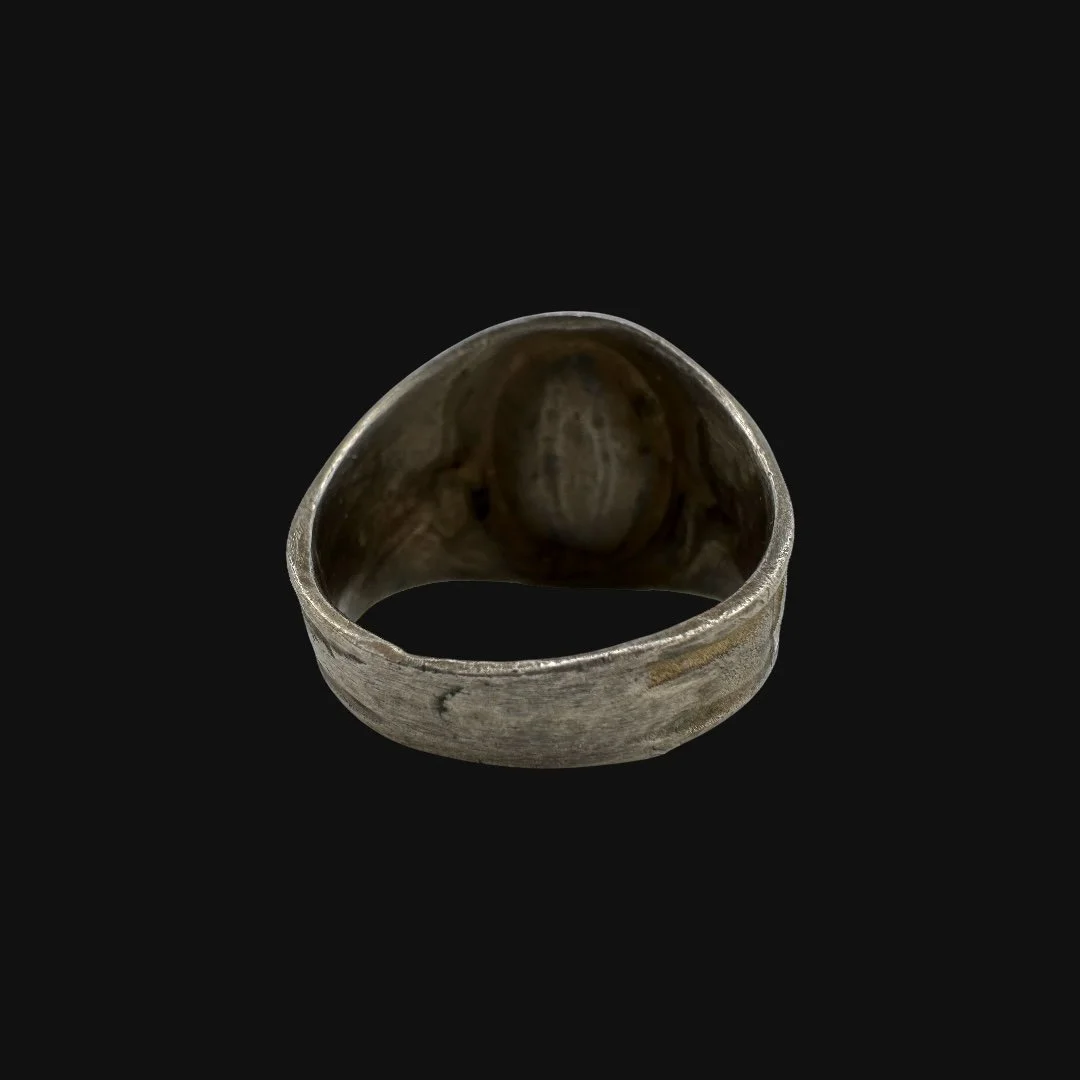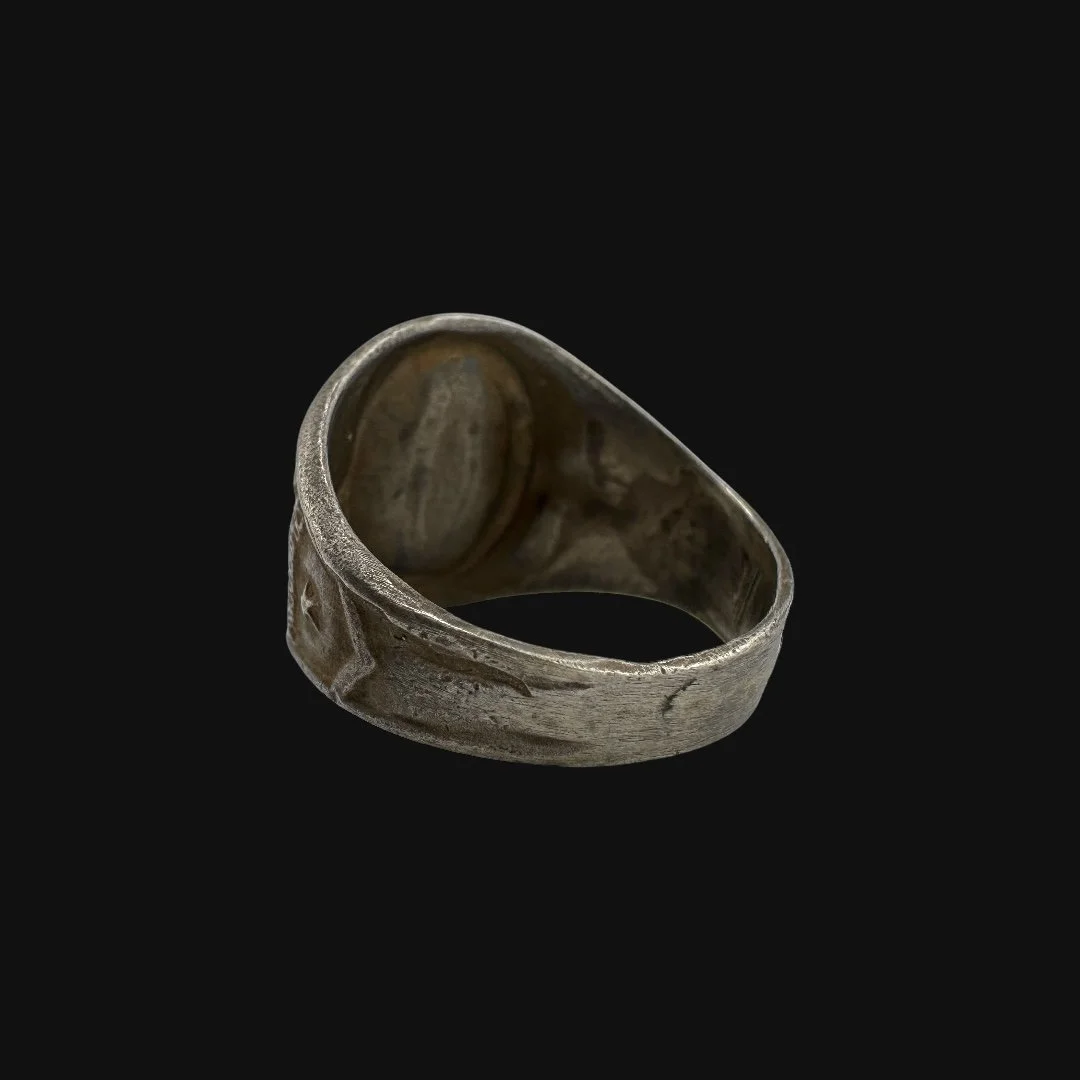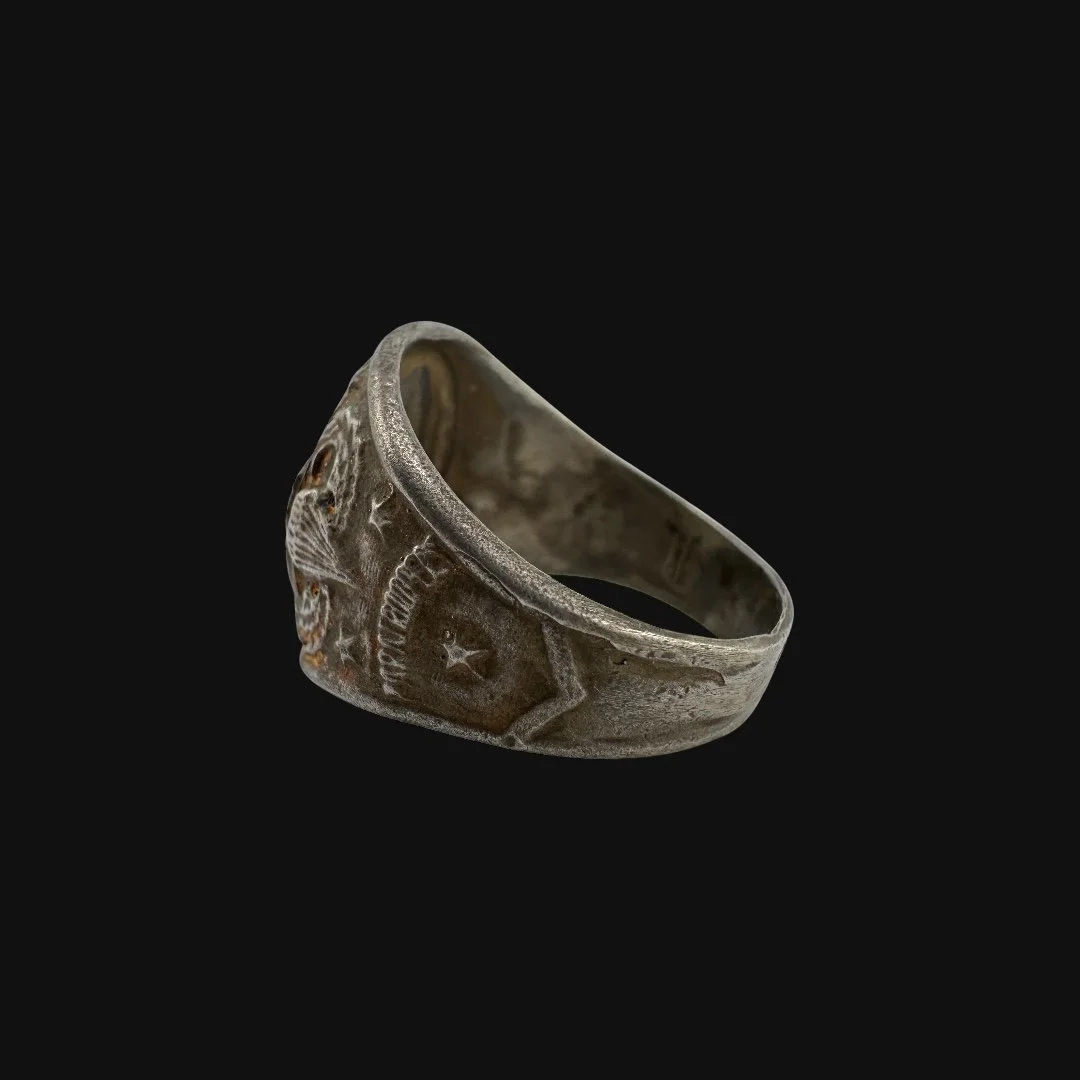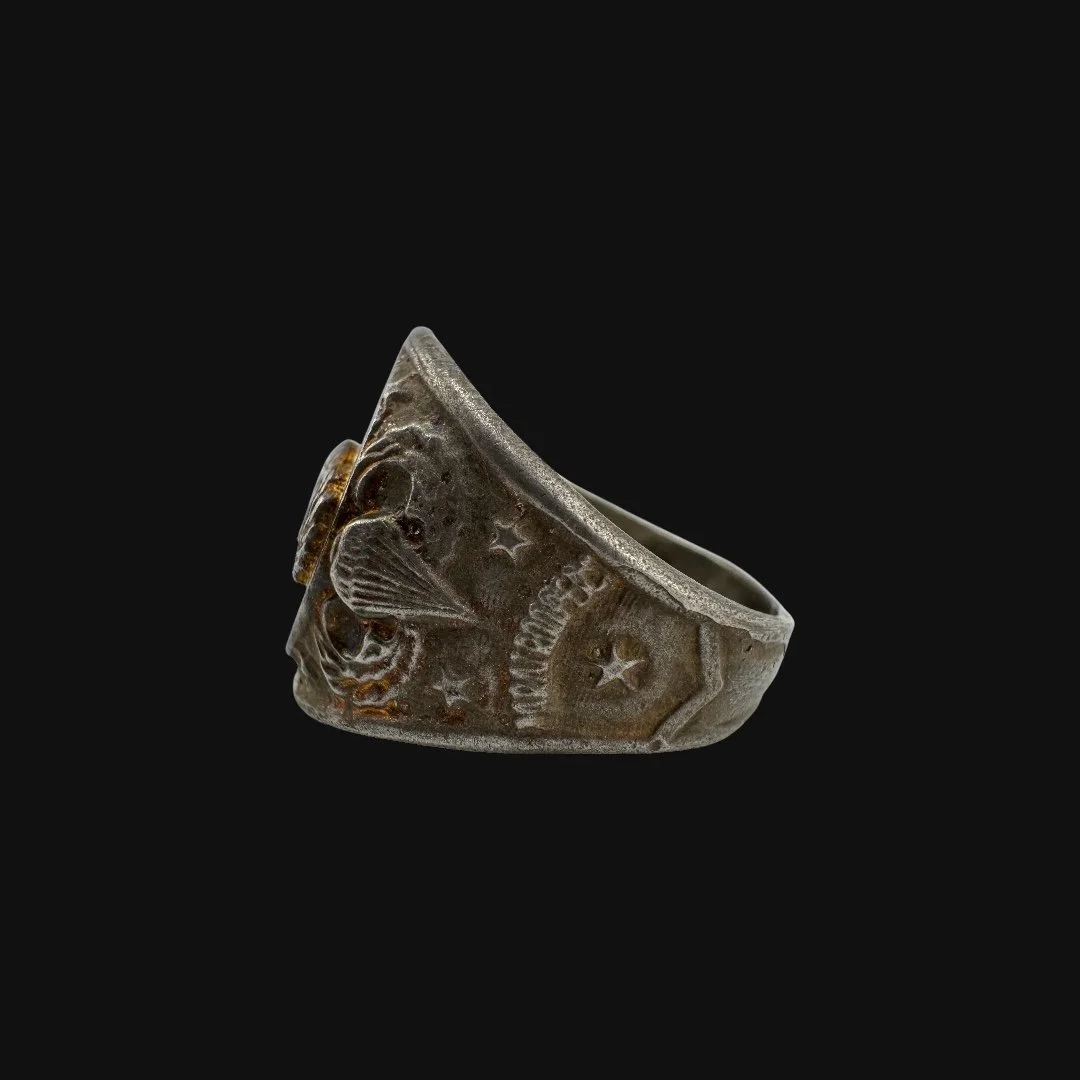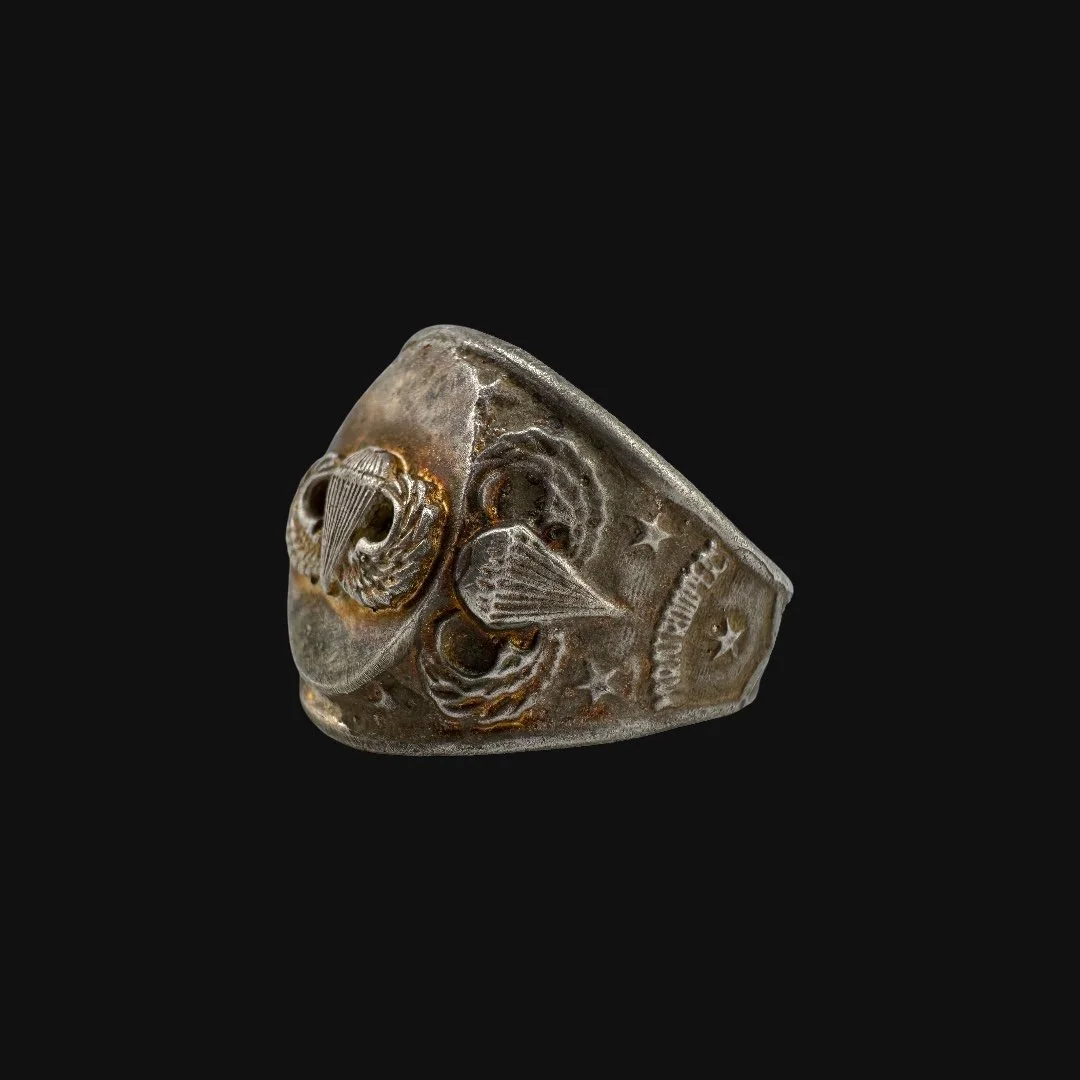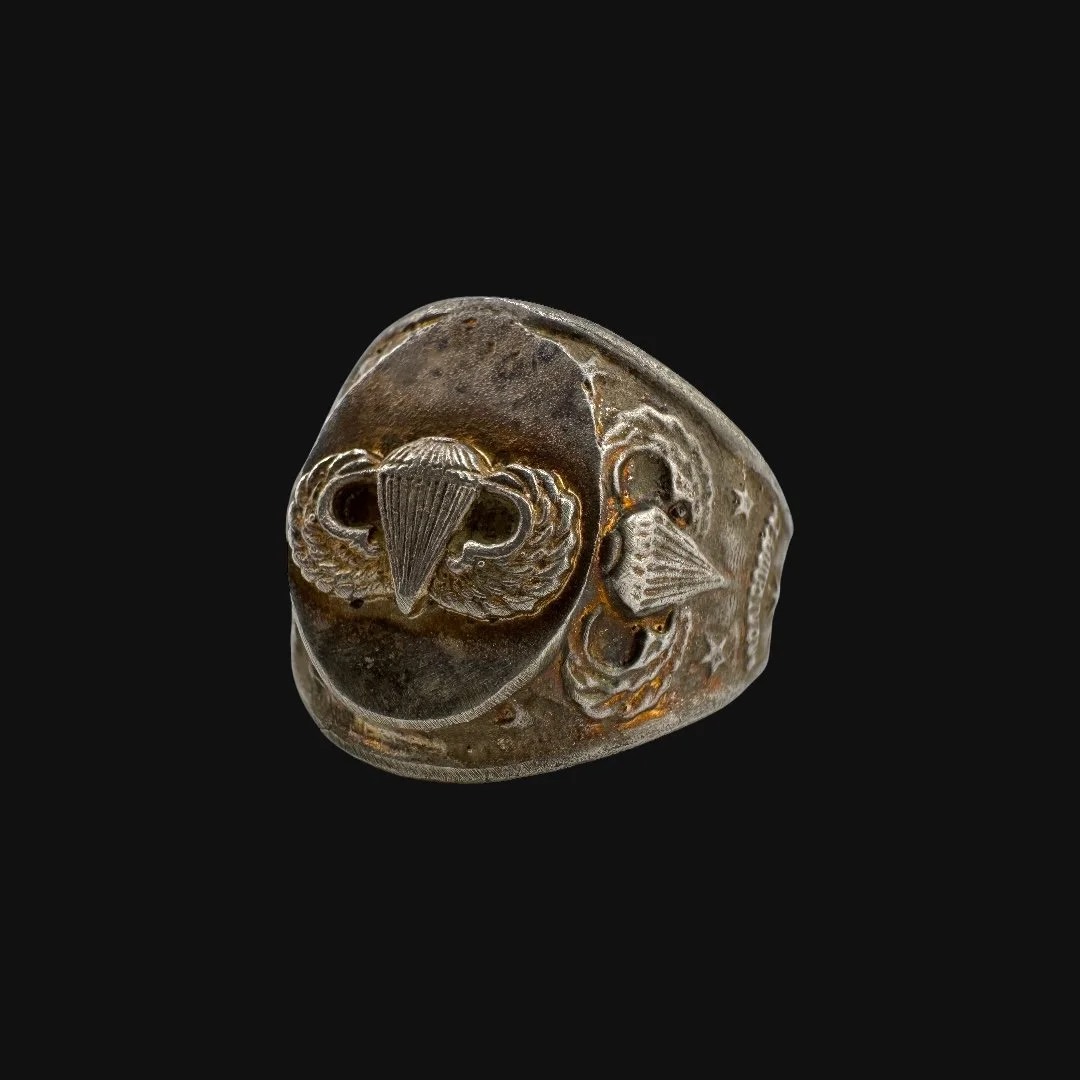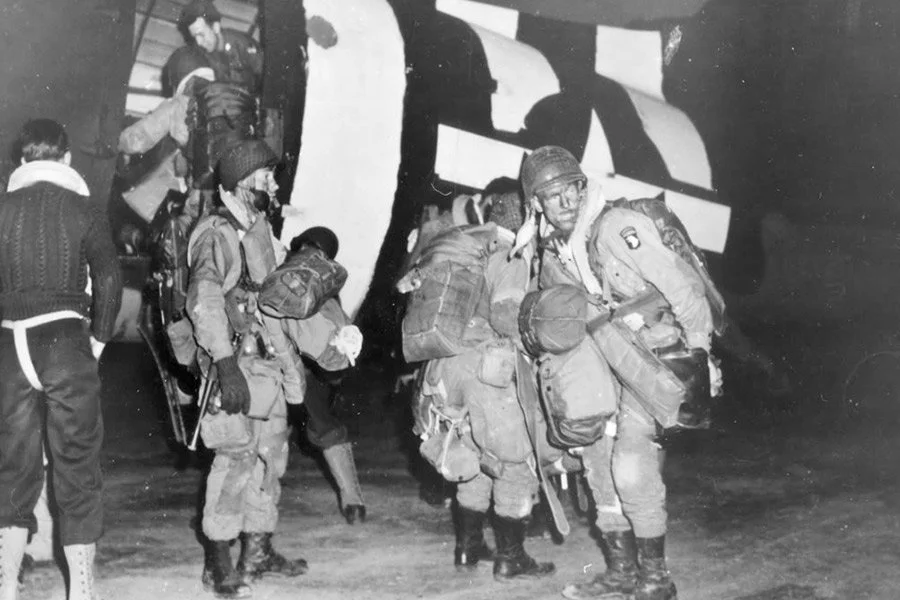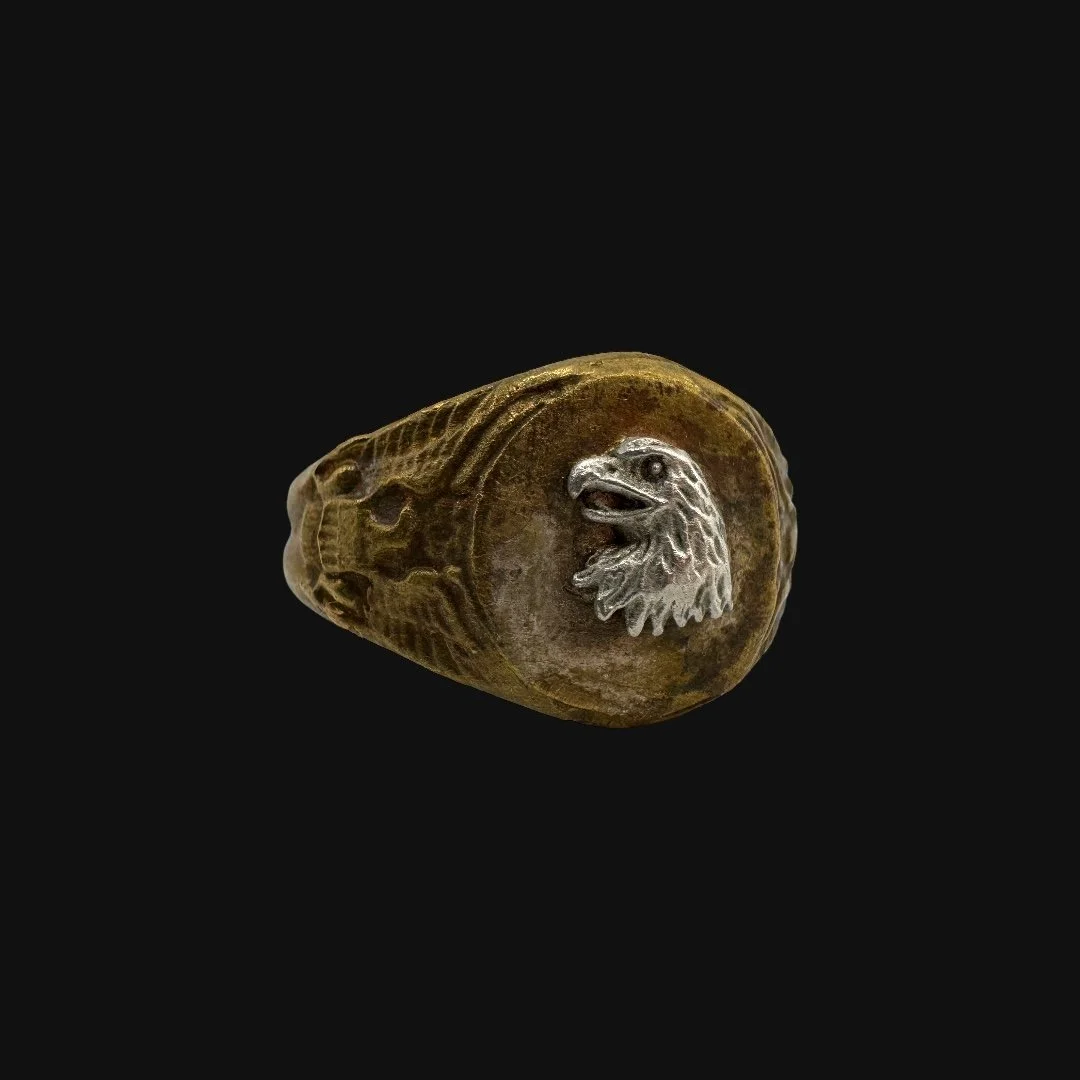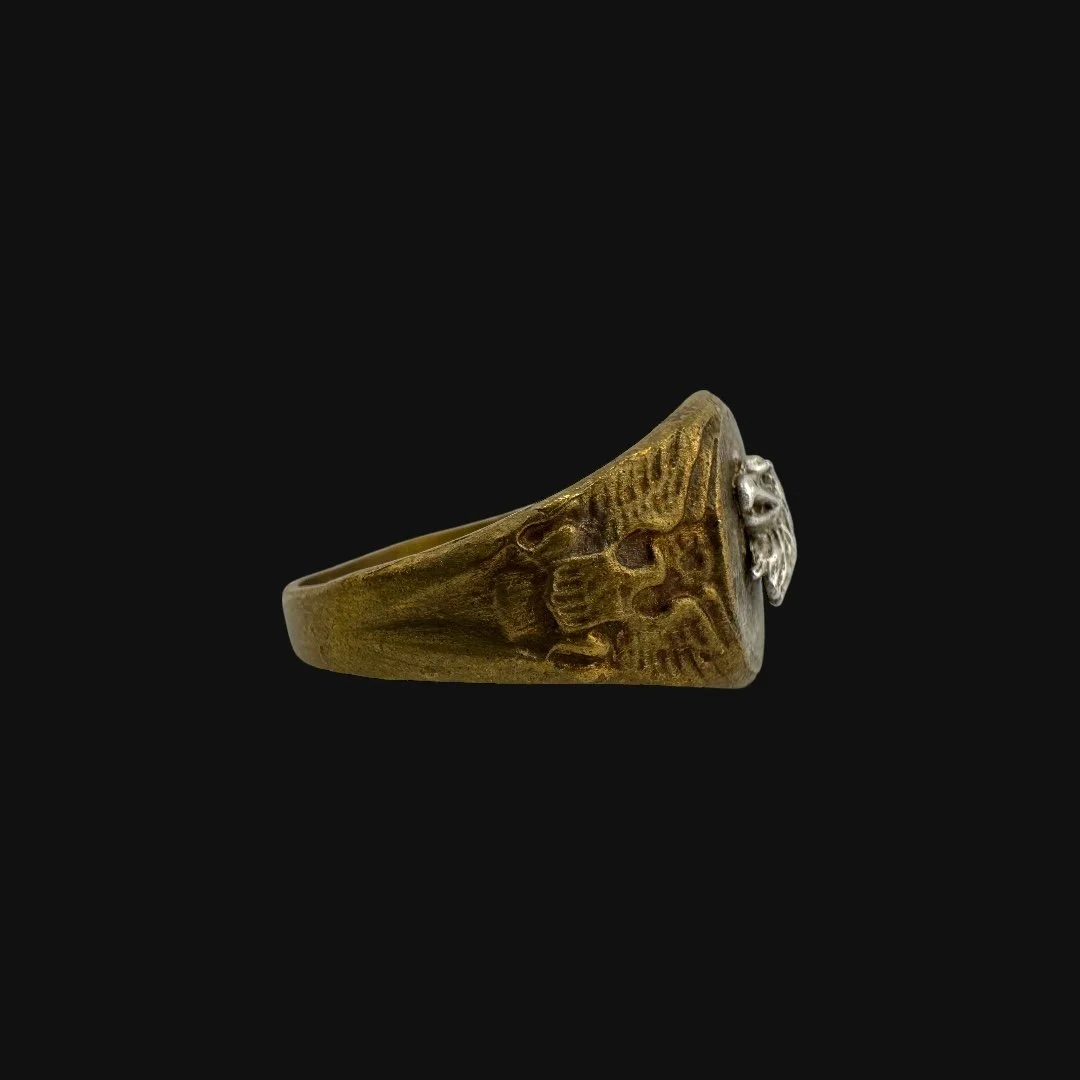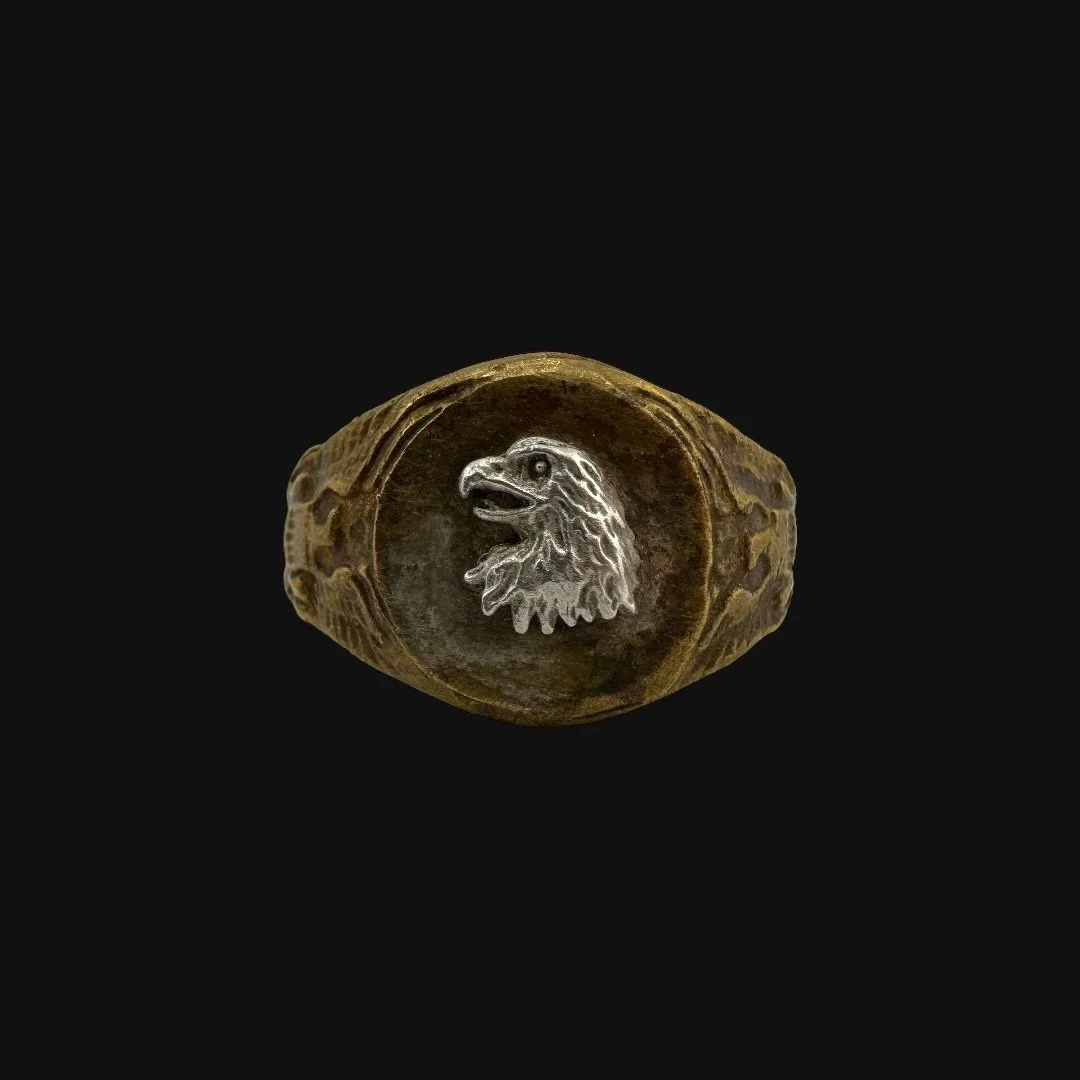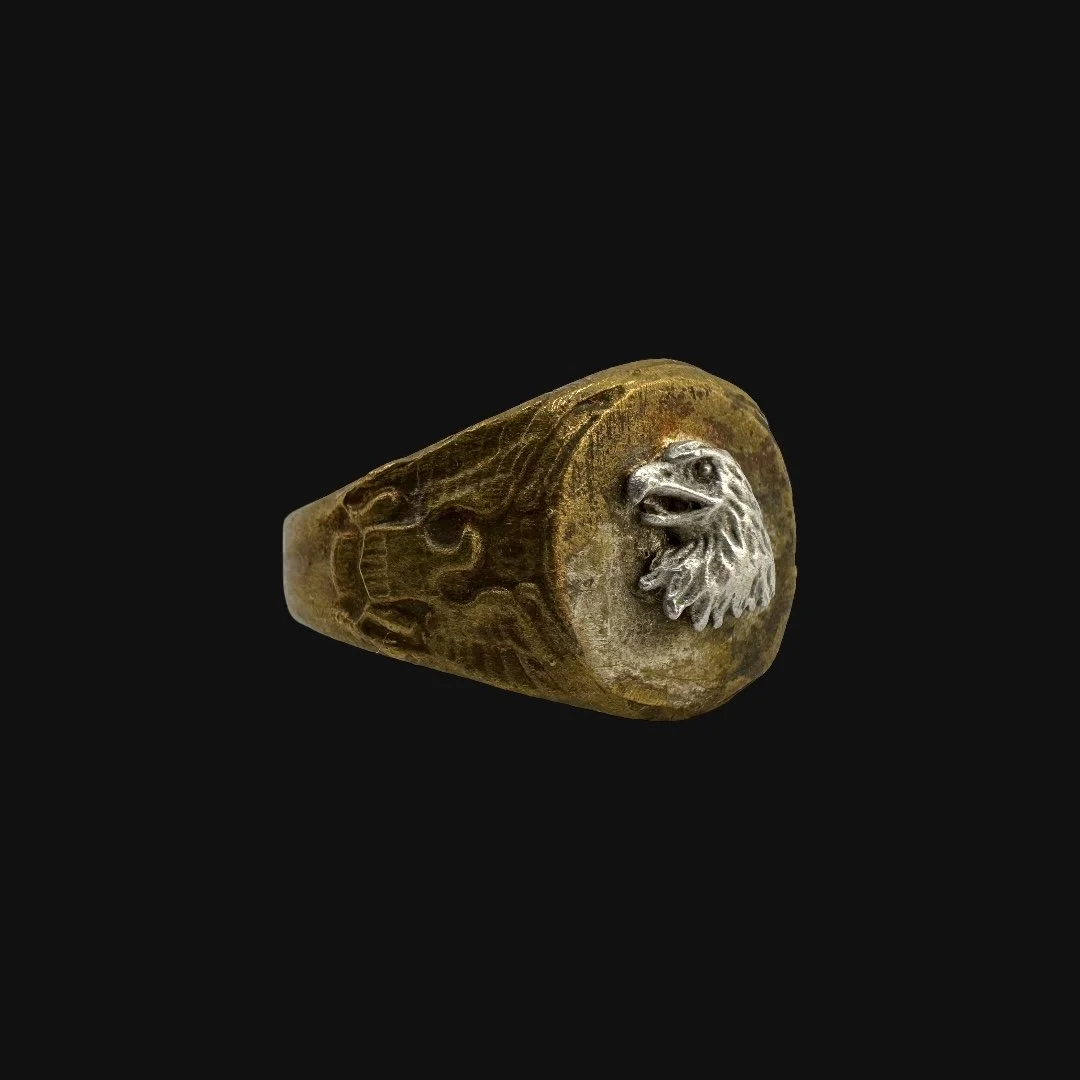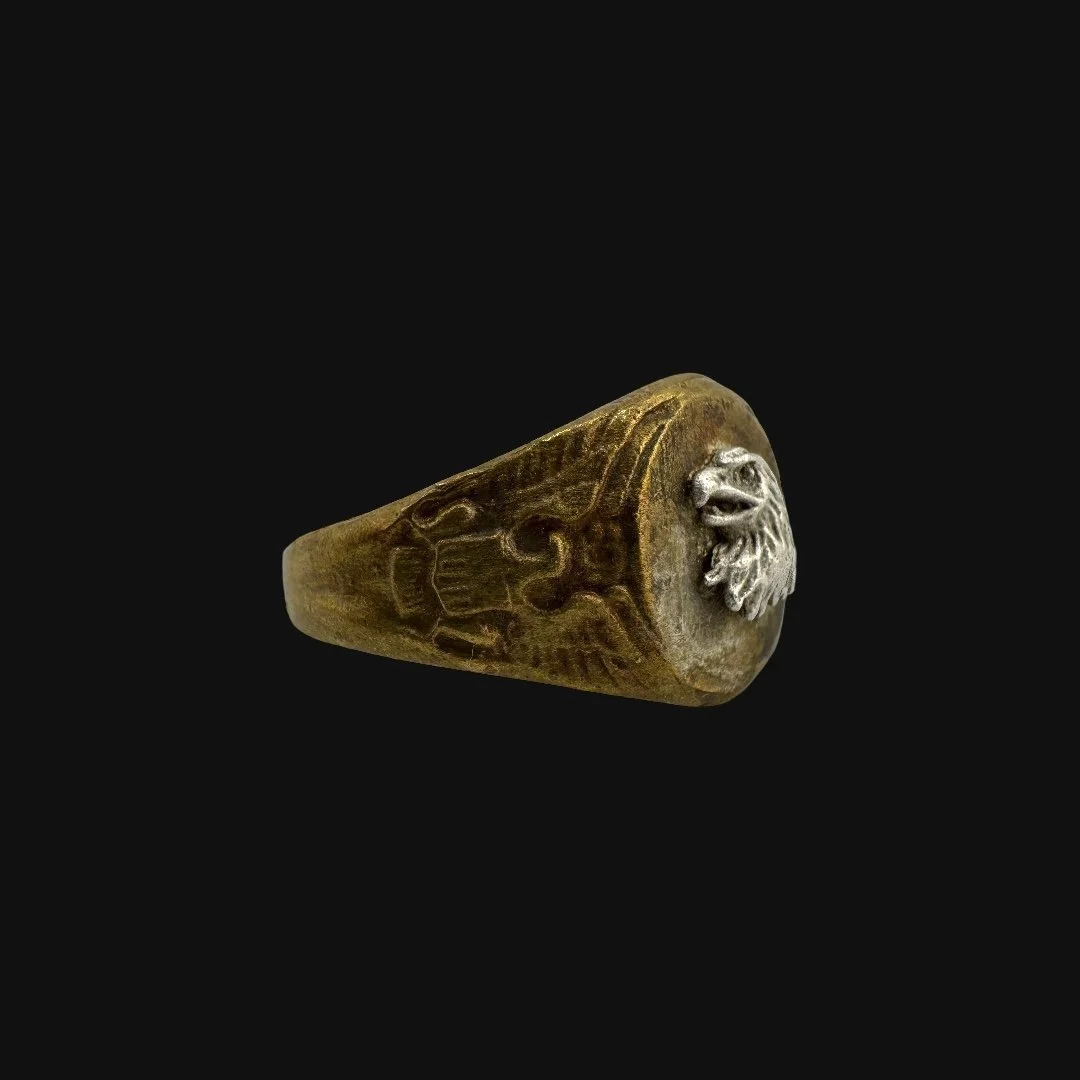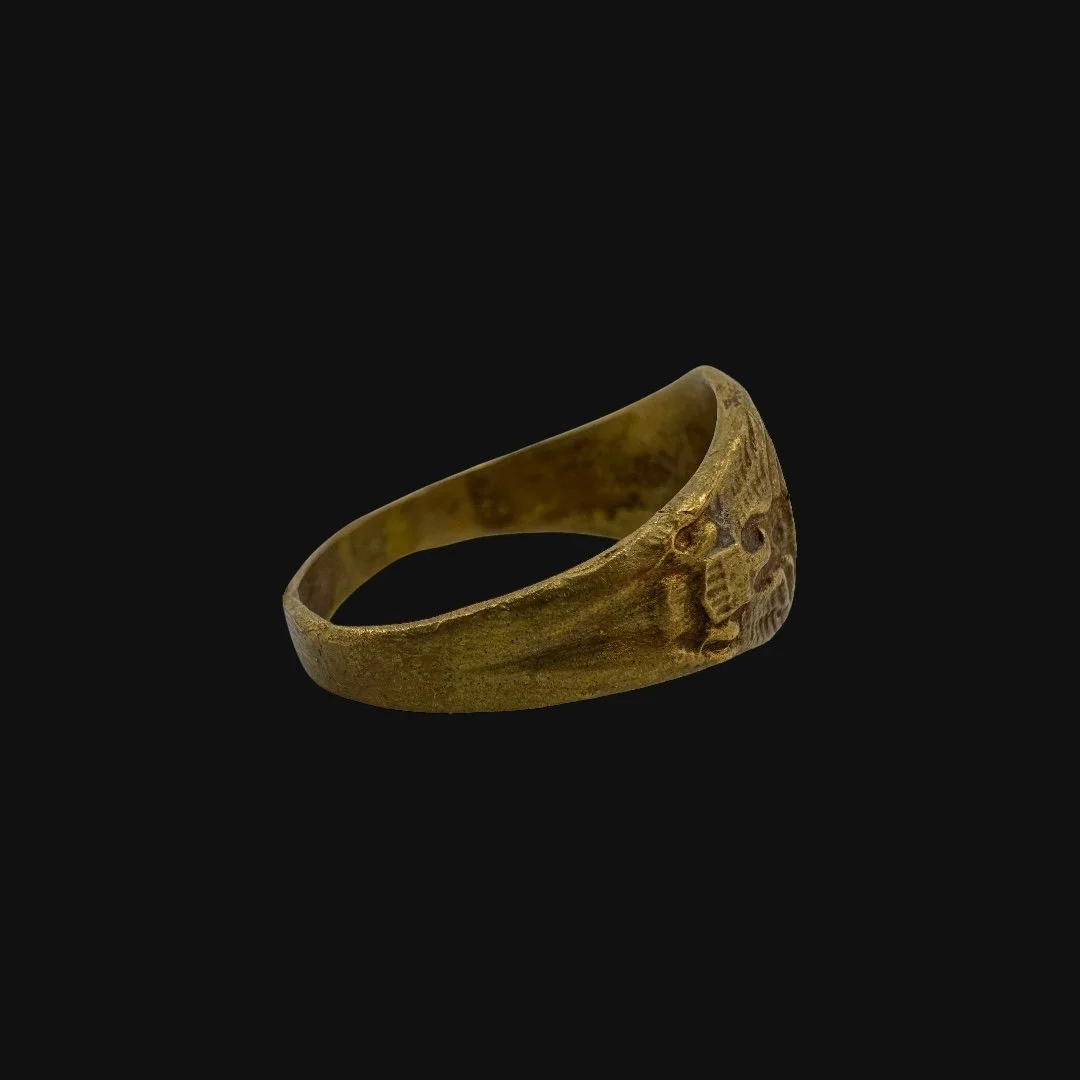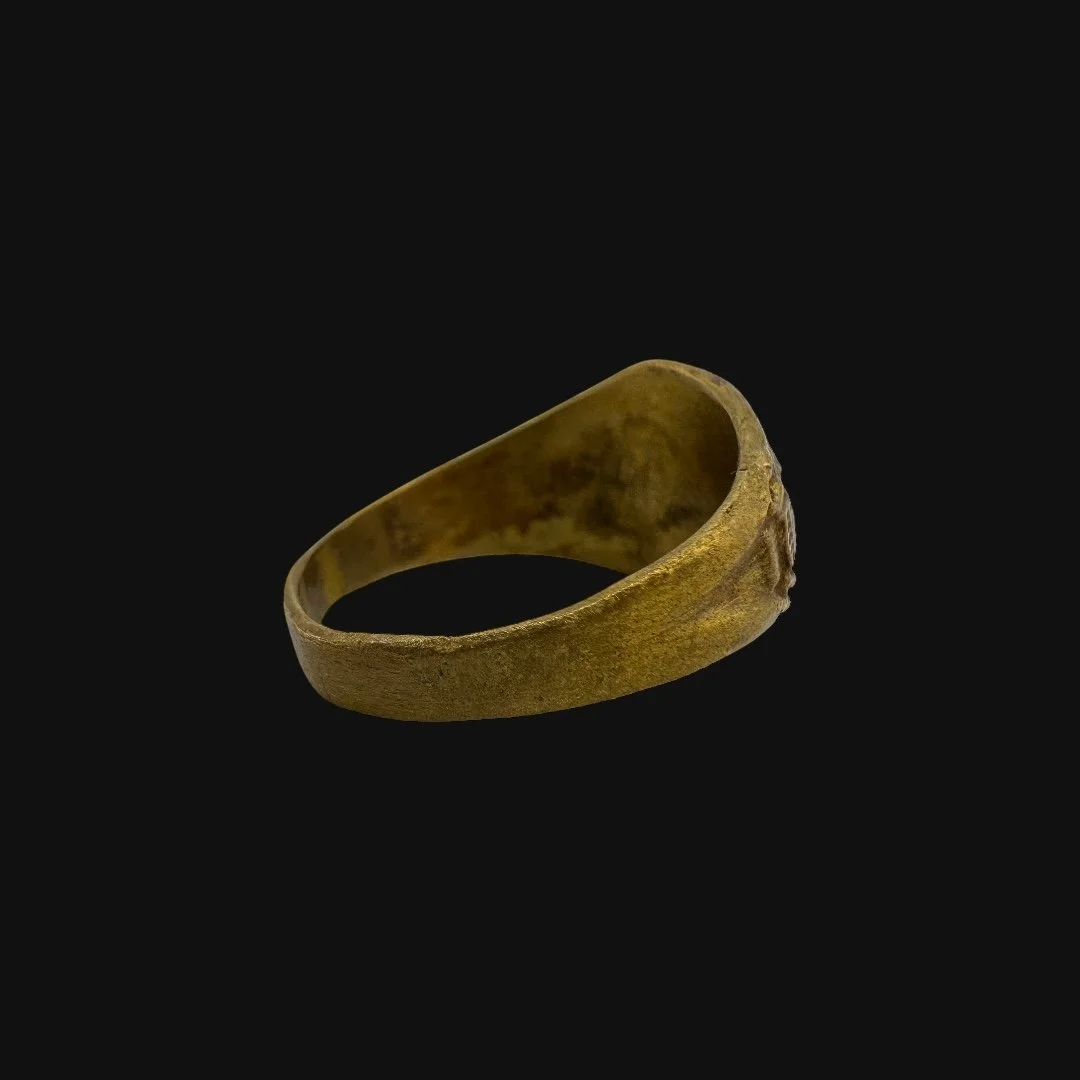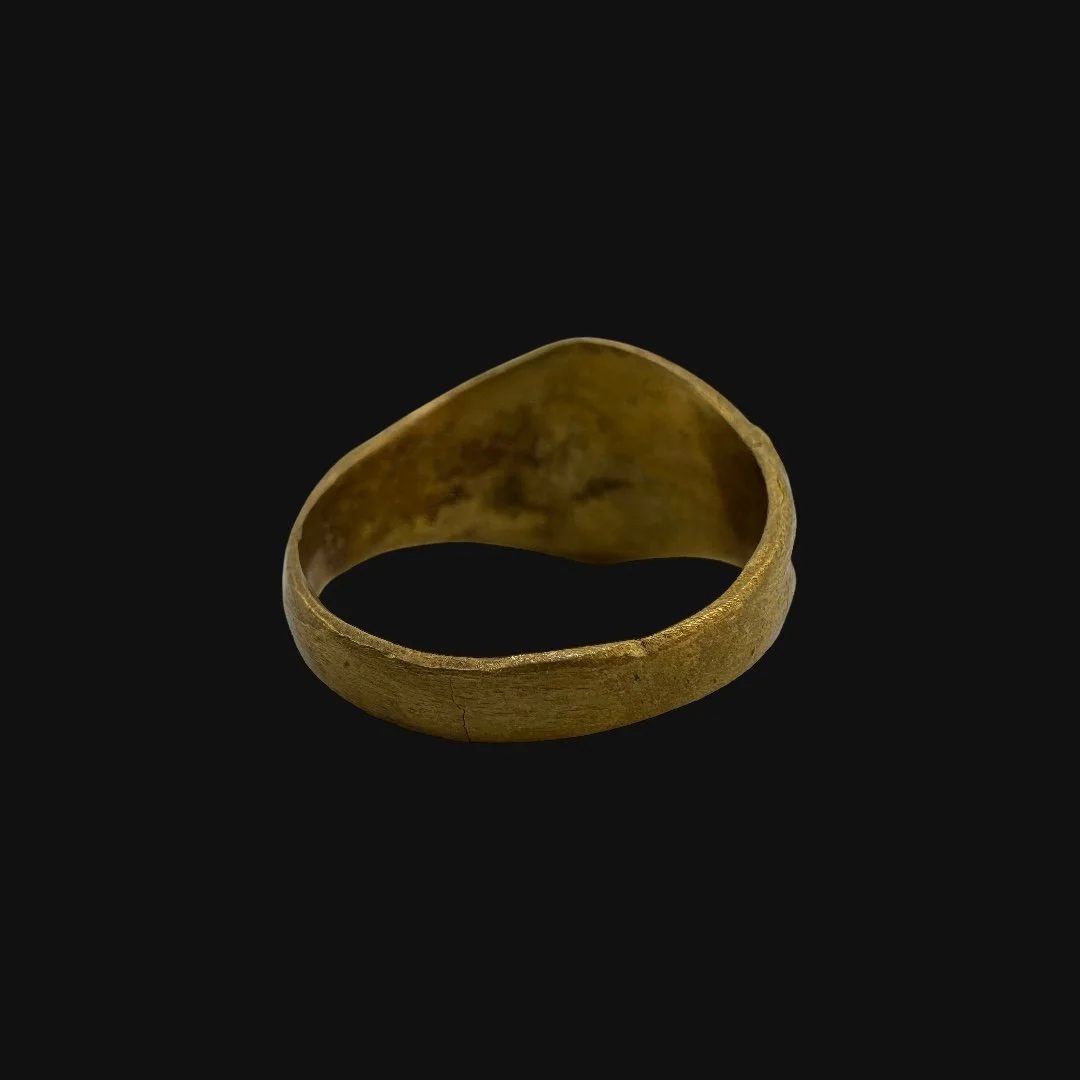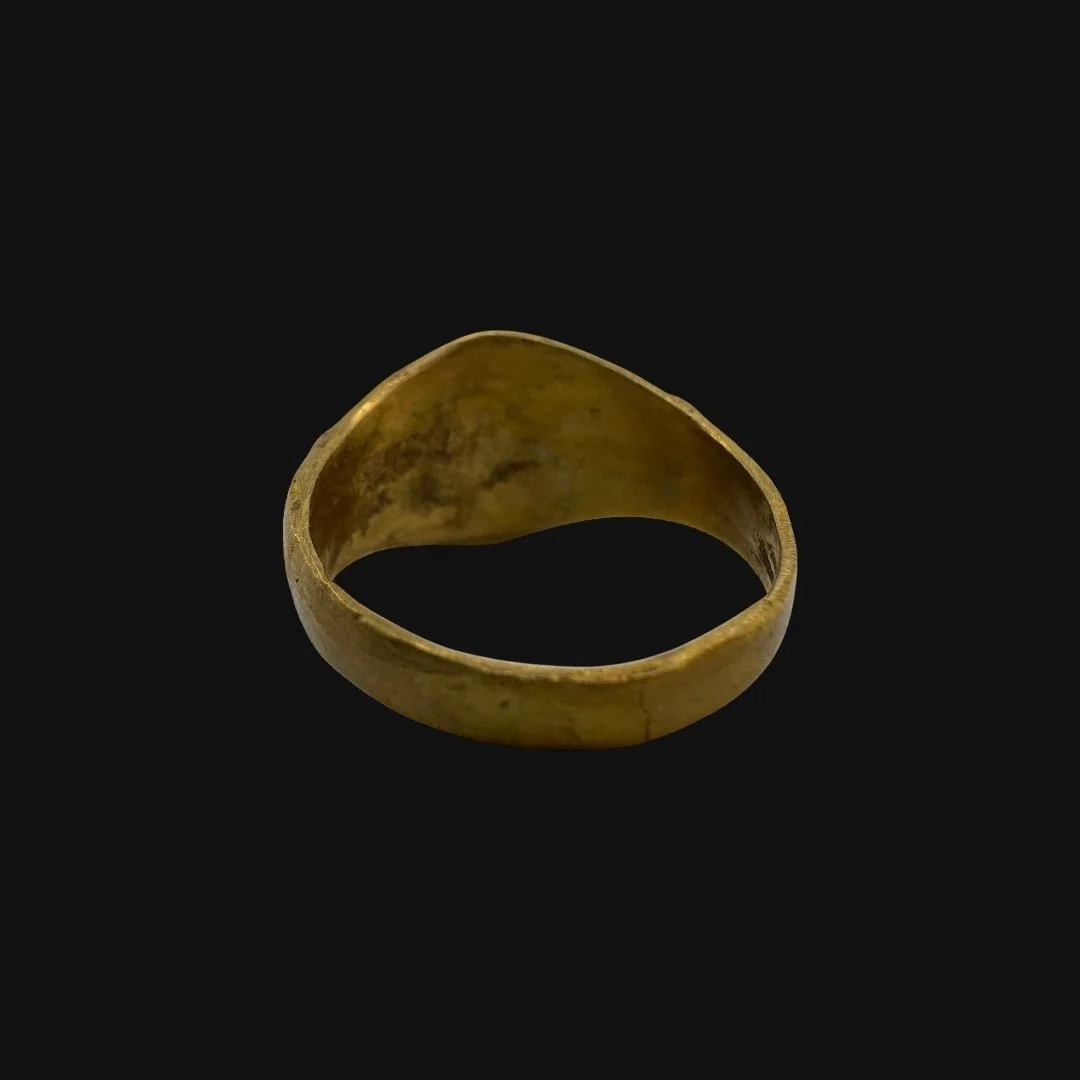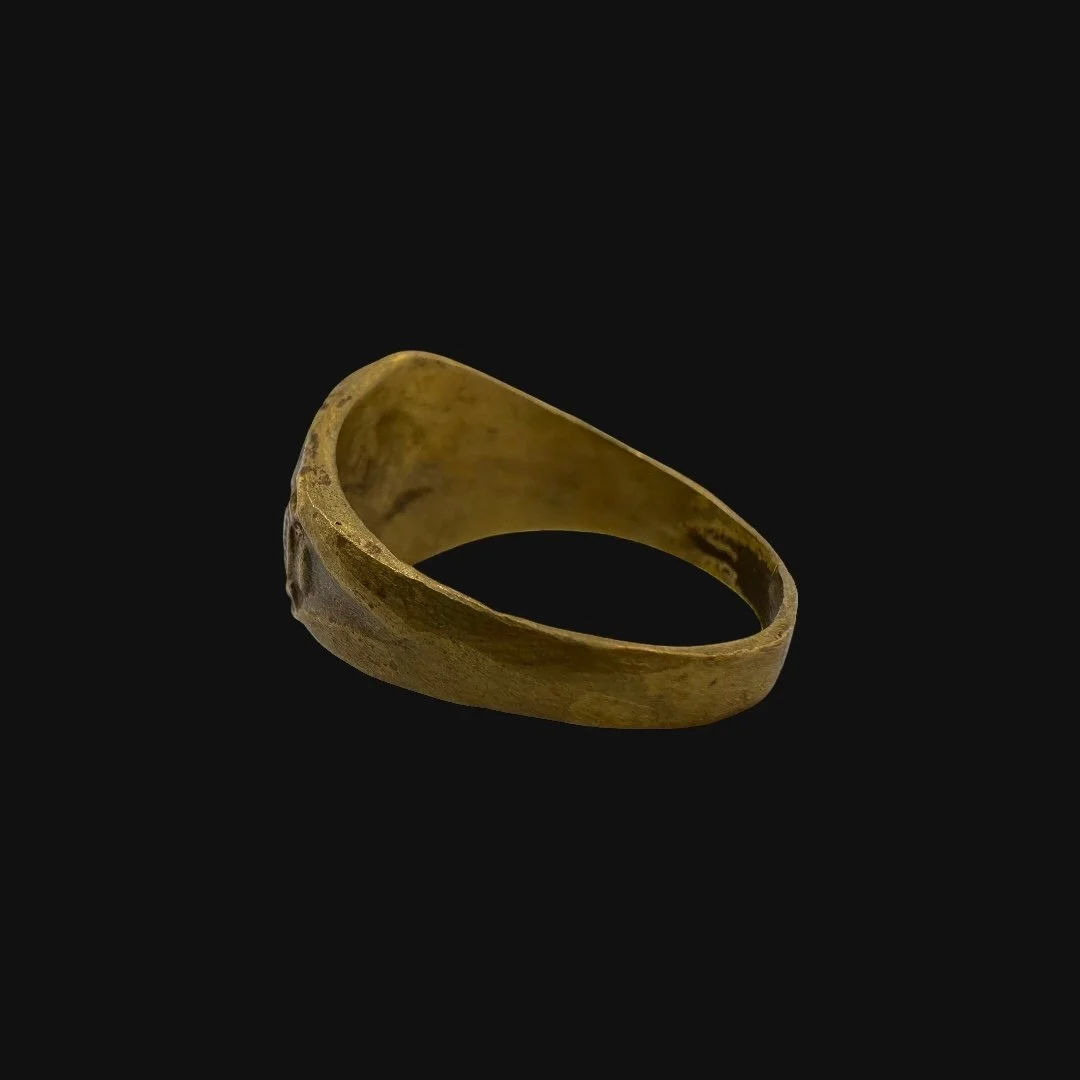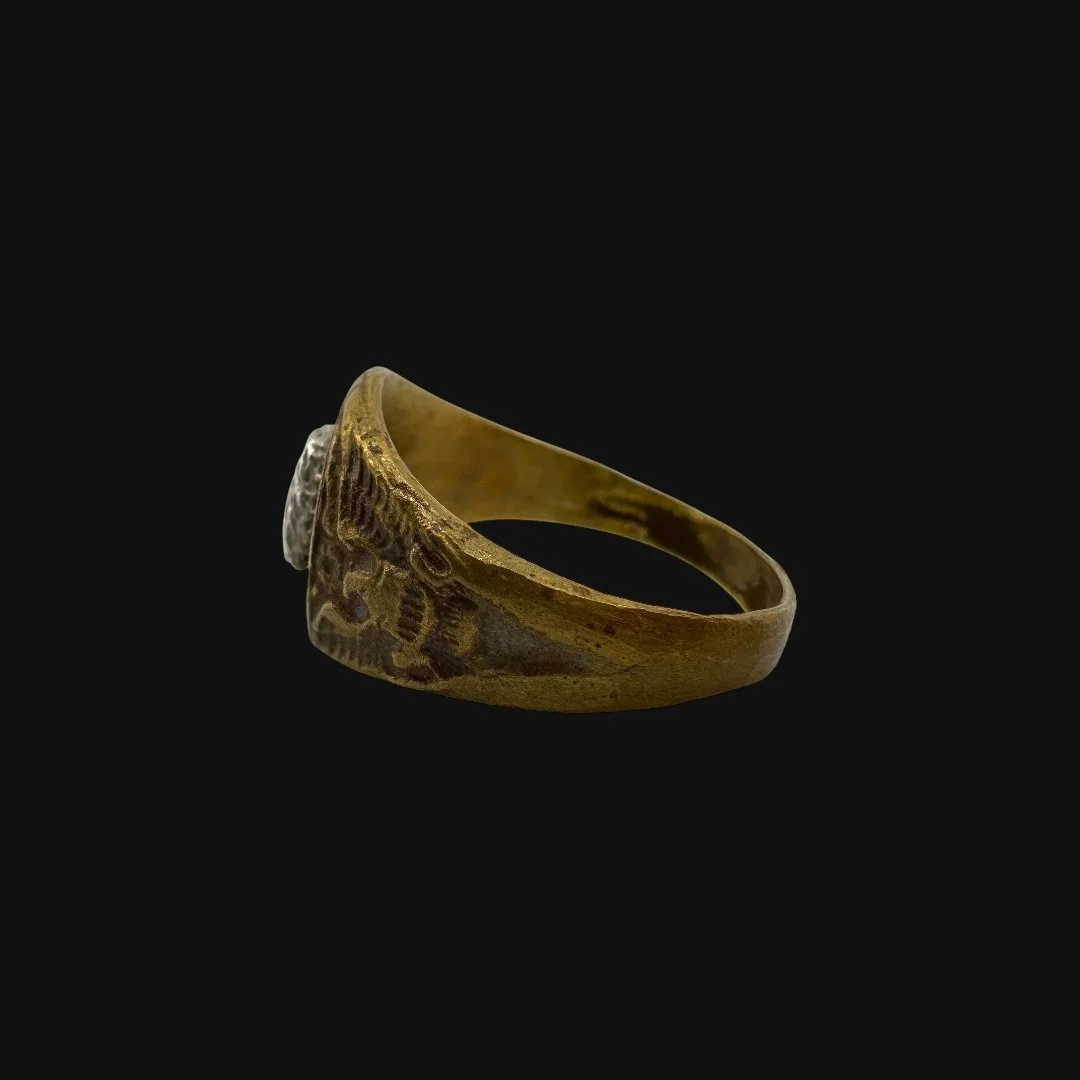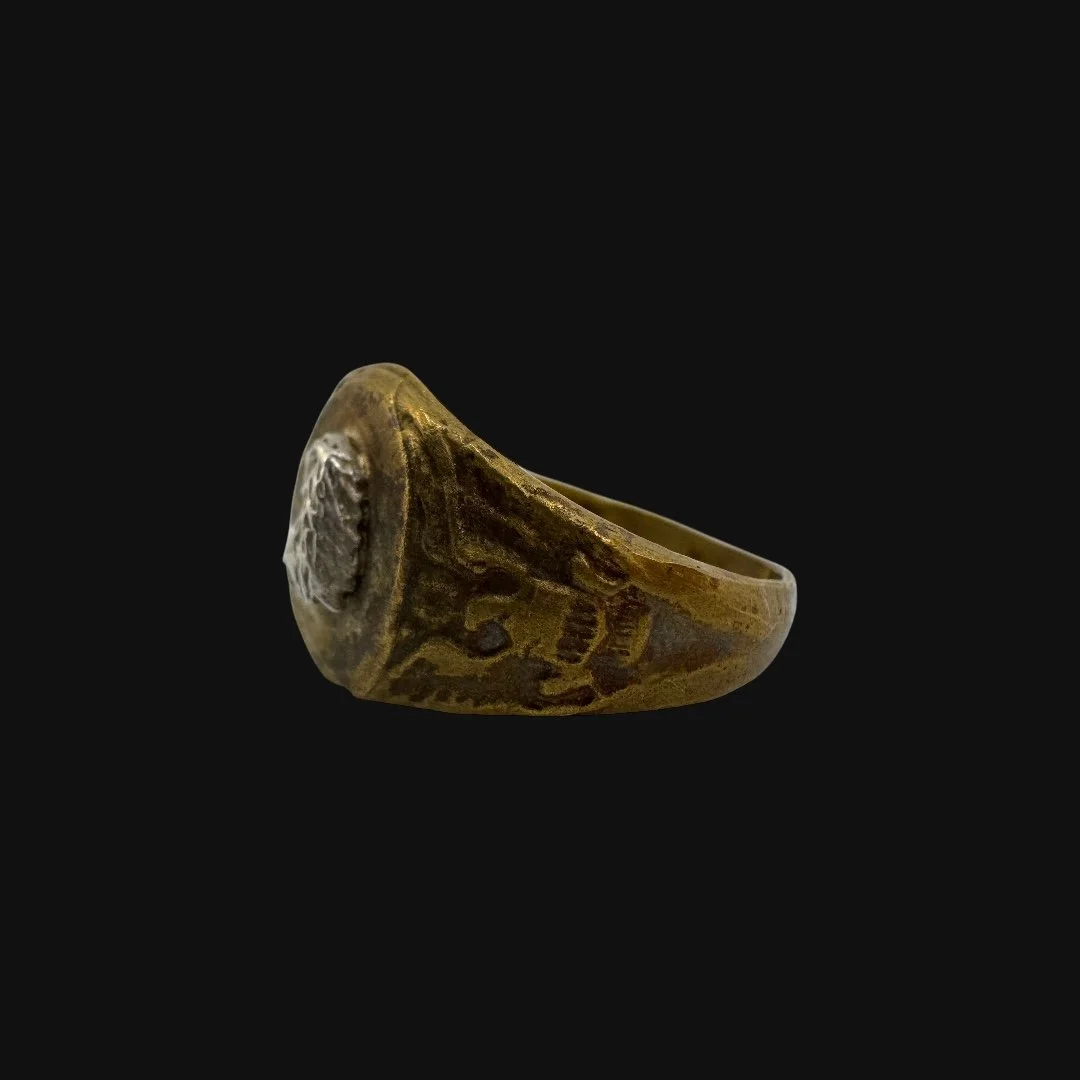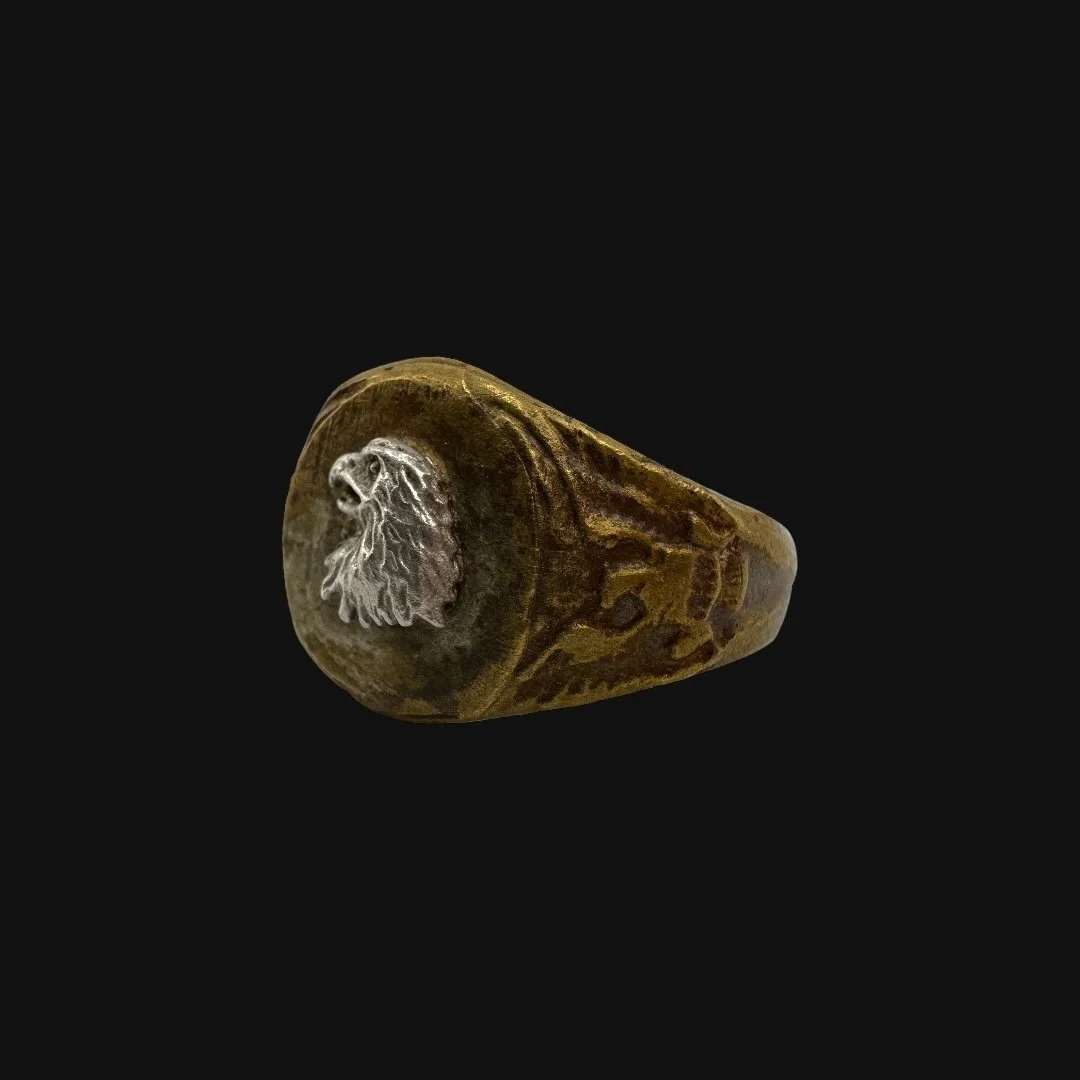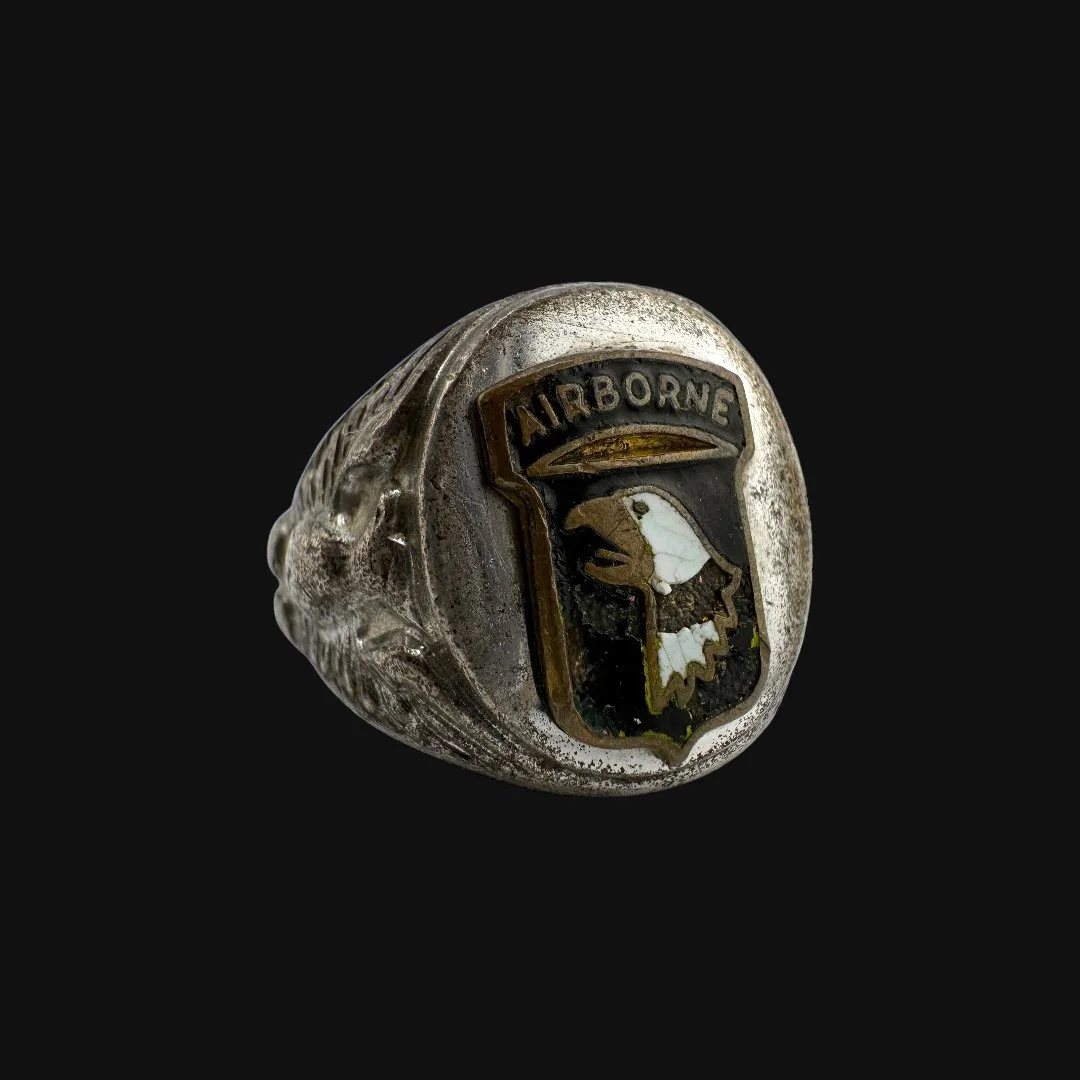 Image 1 of 13
Image 1 of 13

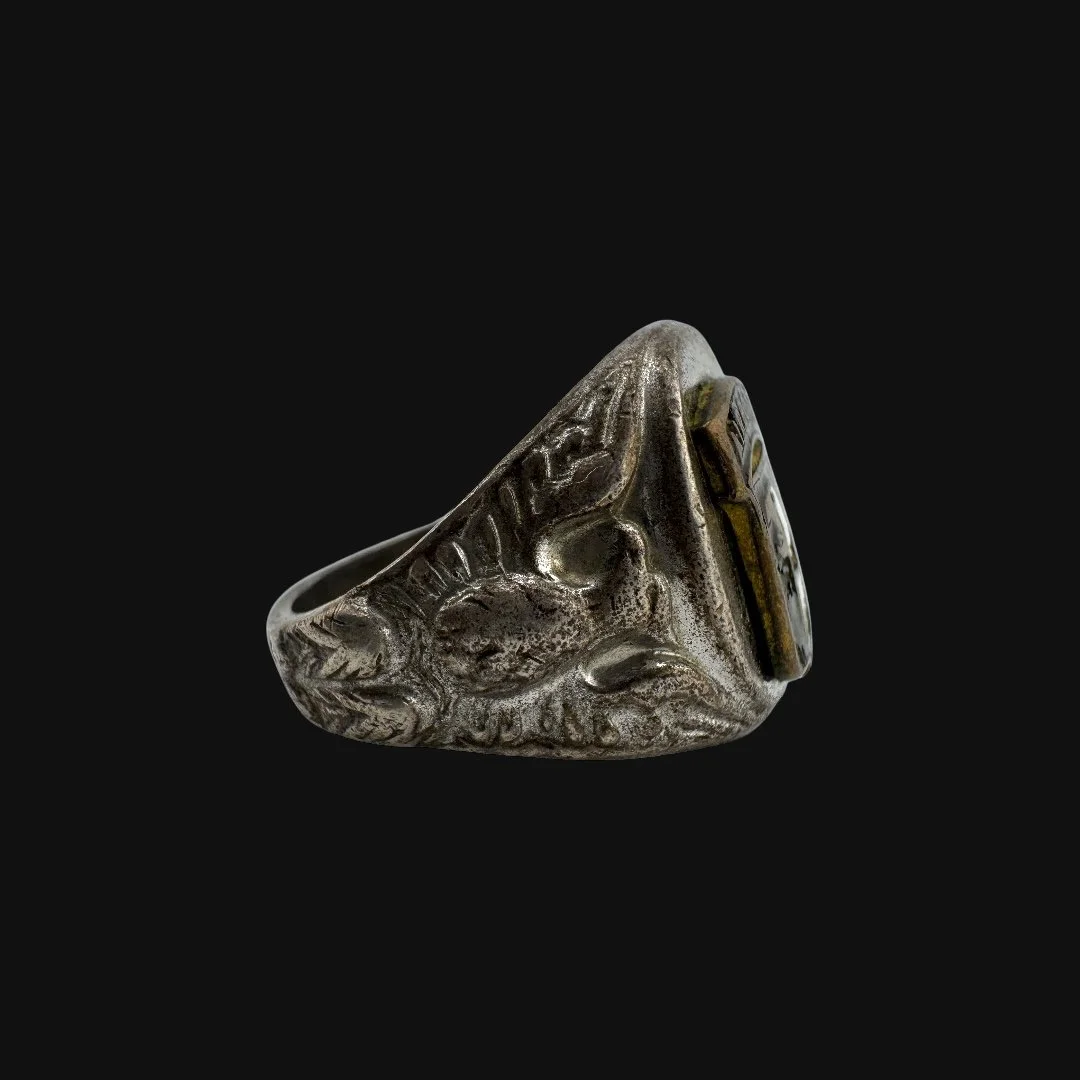 Image 2 of 13
Image 2 of 13

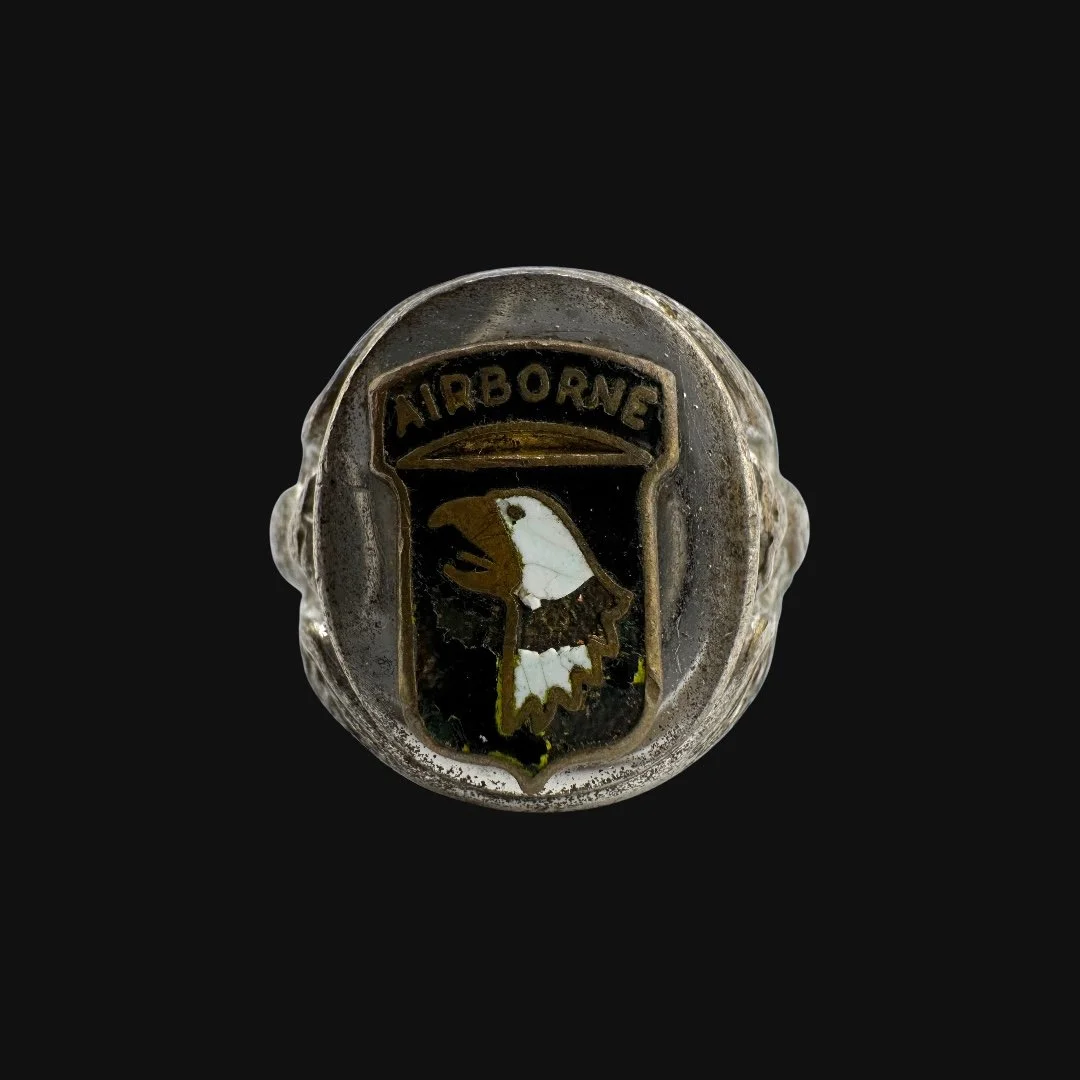 Image 3 of 13
Image 3 of 13

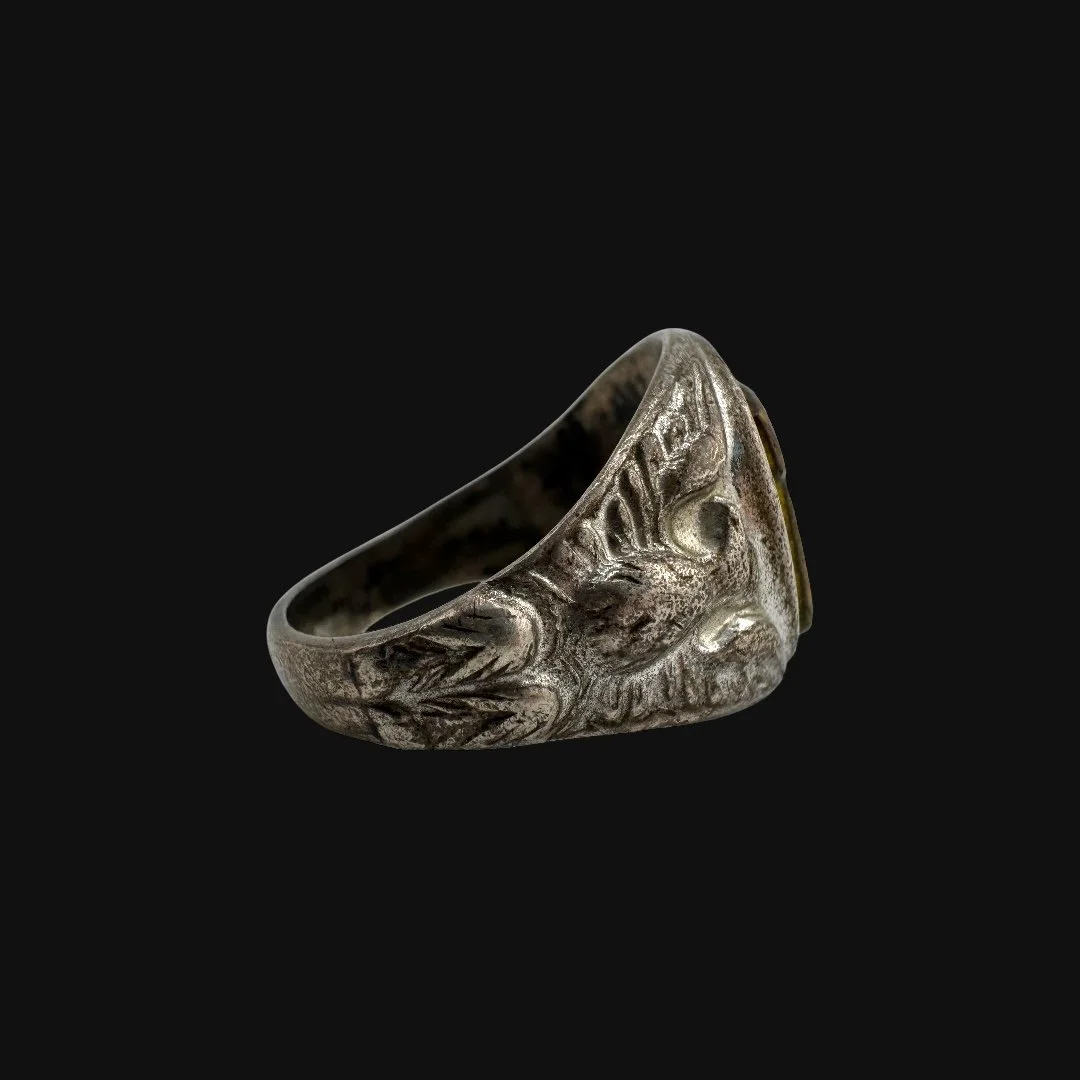 Image 4 of 13
Image 4 of 13

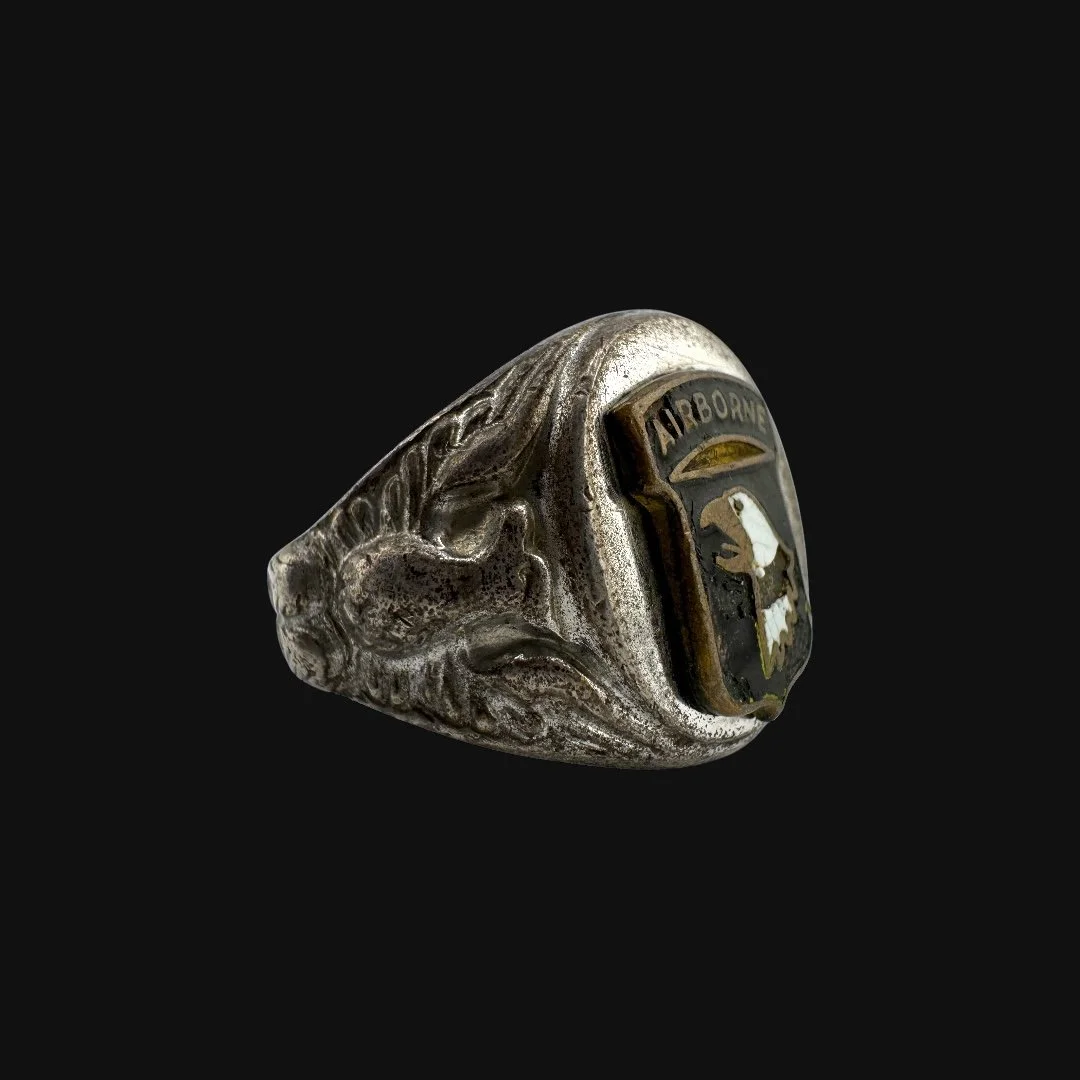 Image 5 of 13
Image 5 of 13

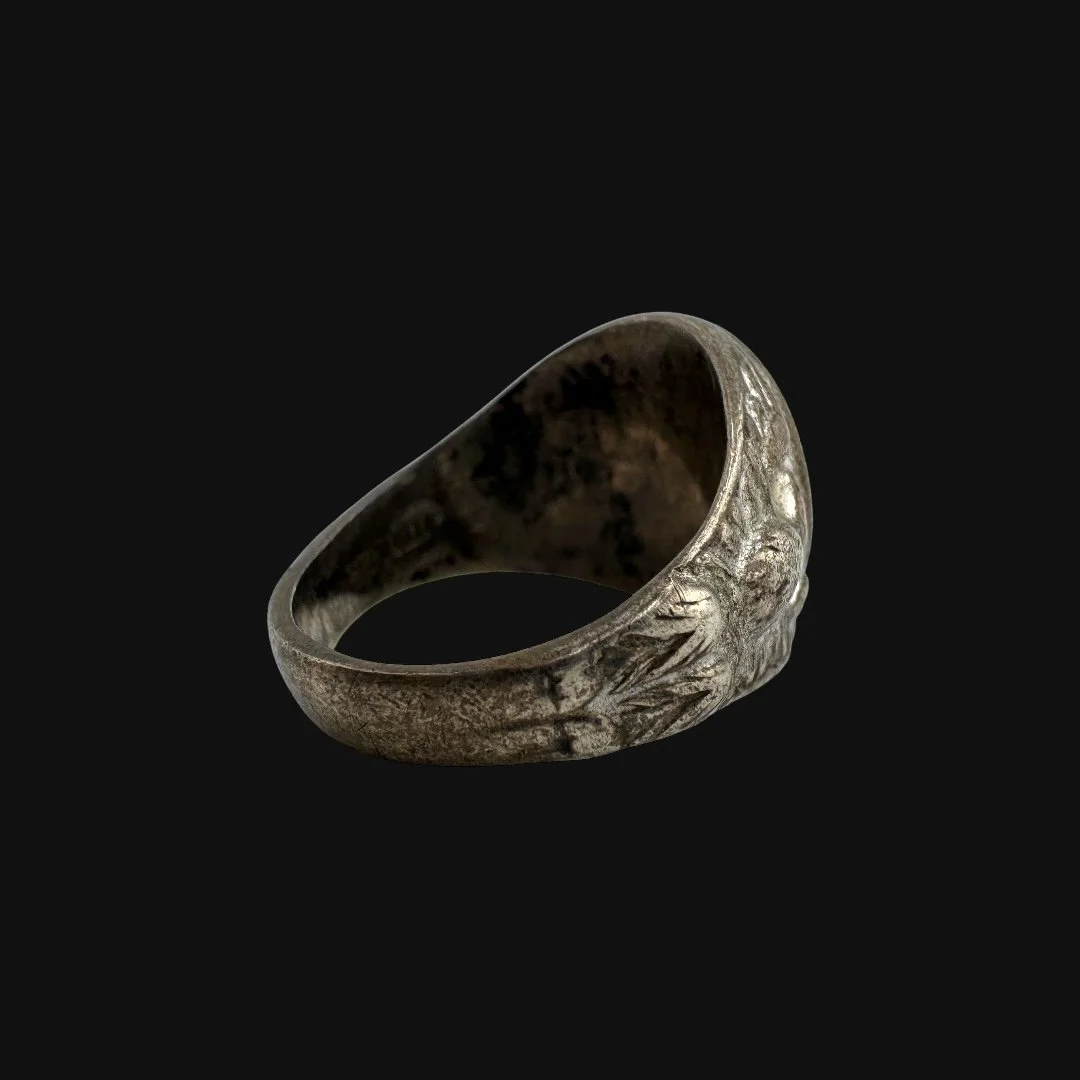 Image 6 of 13
Image 6 of 13

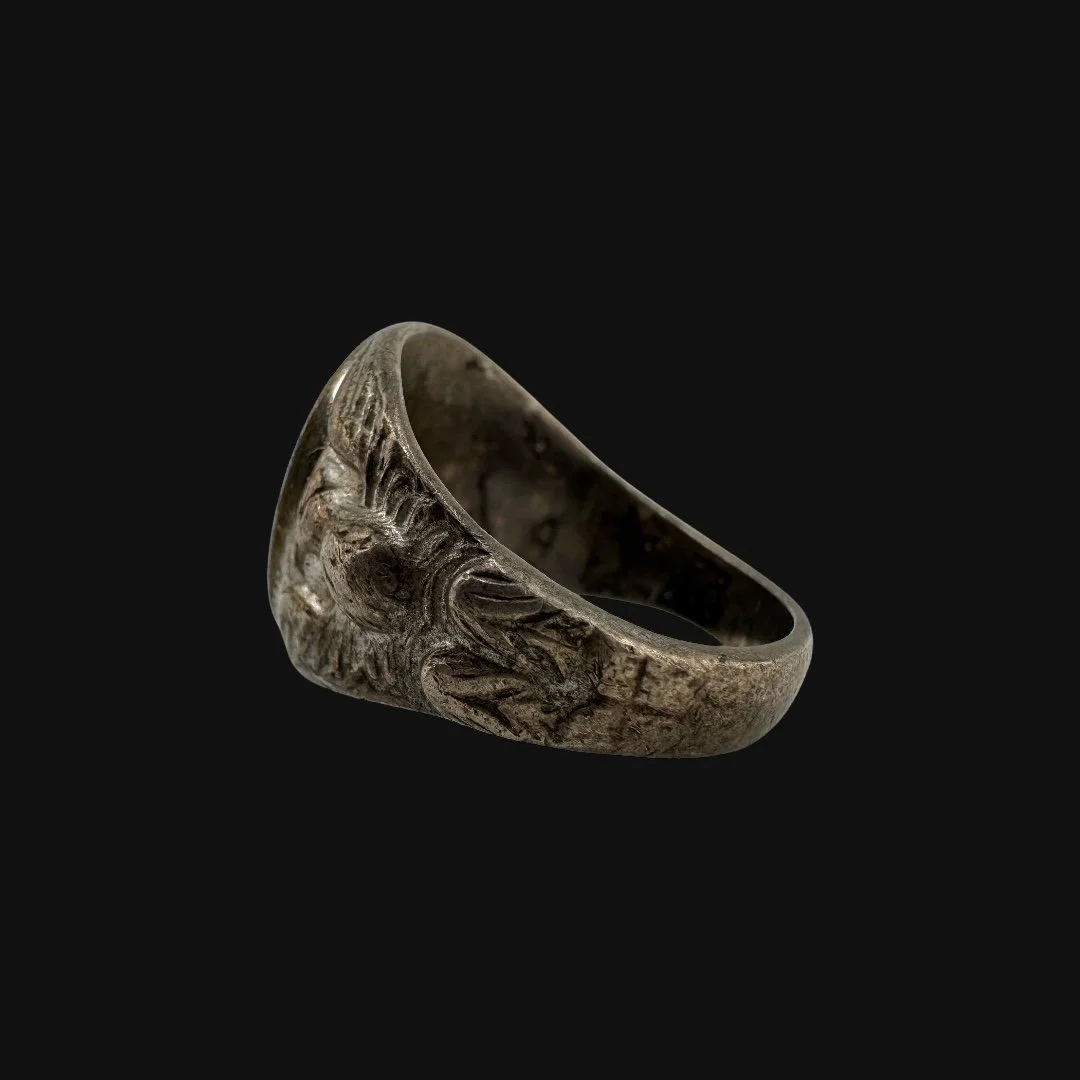 Image 7 of 13
Image 7 of 13

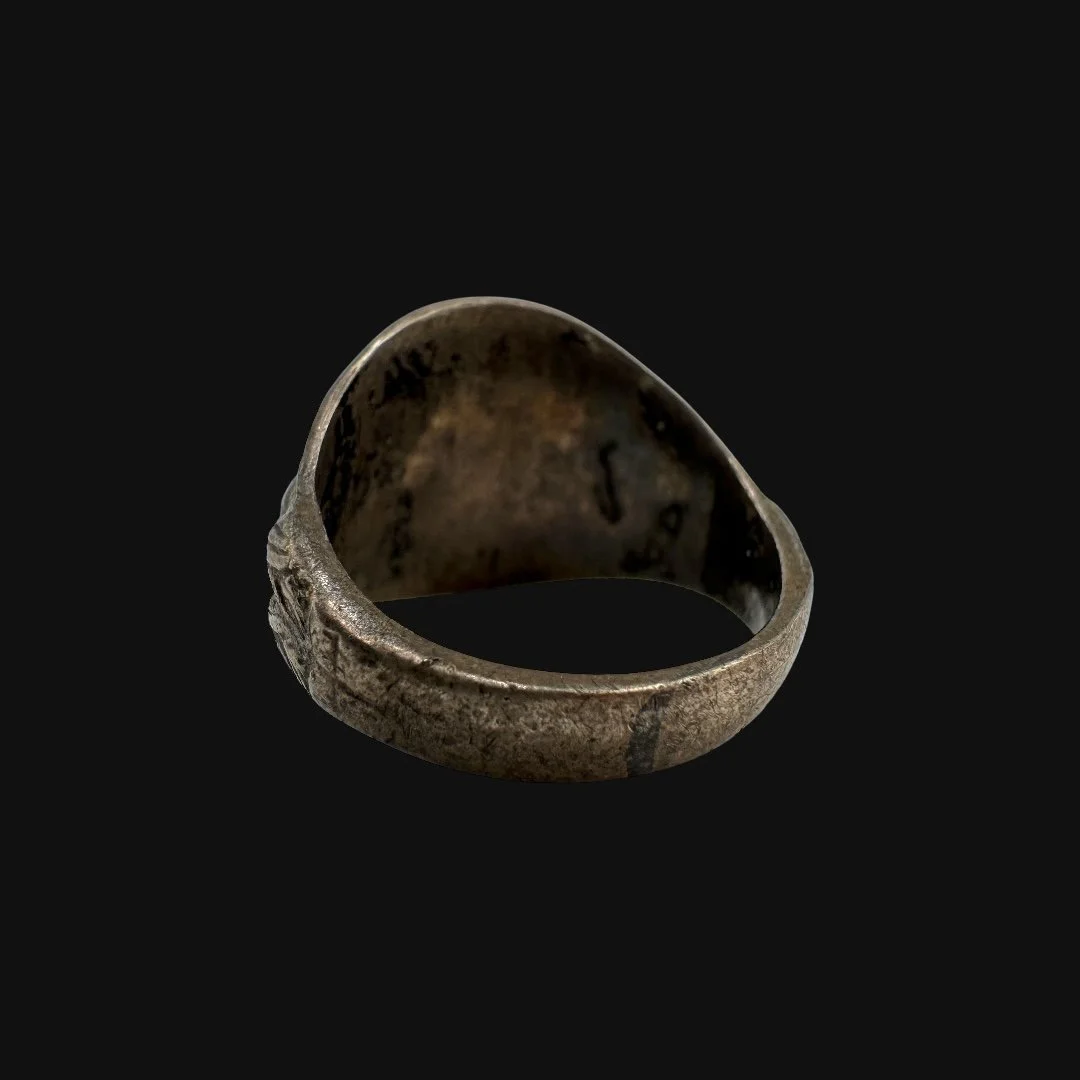 Image 8 of 13
Image 8 of 13

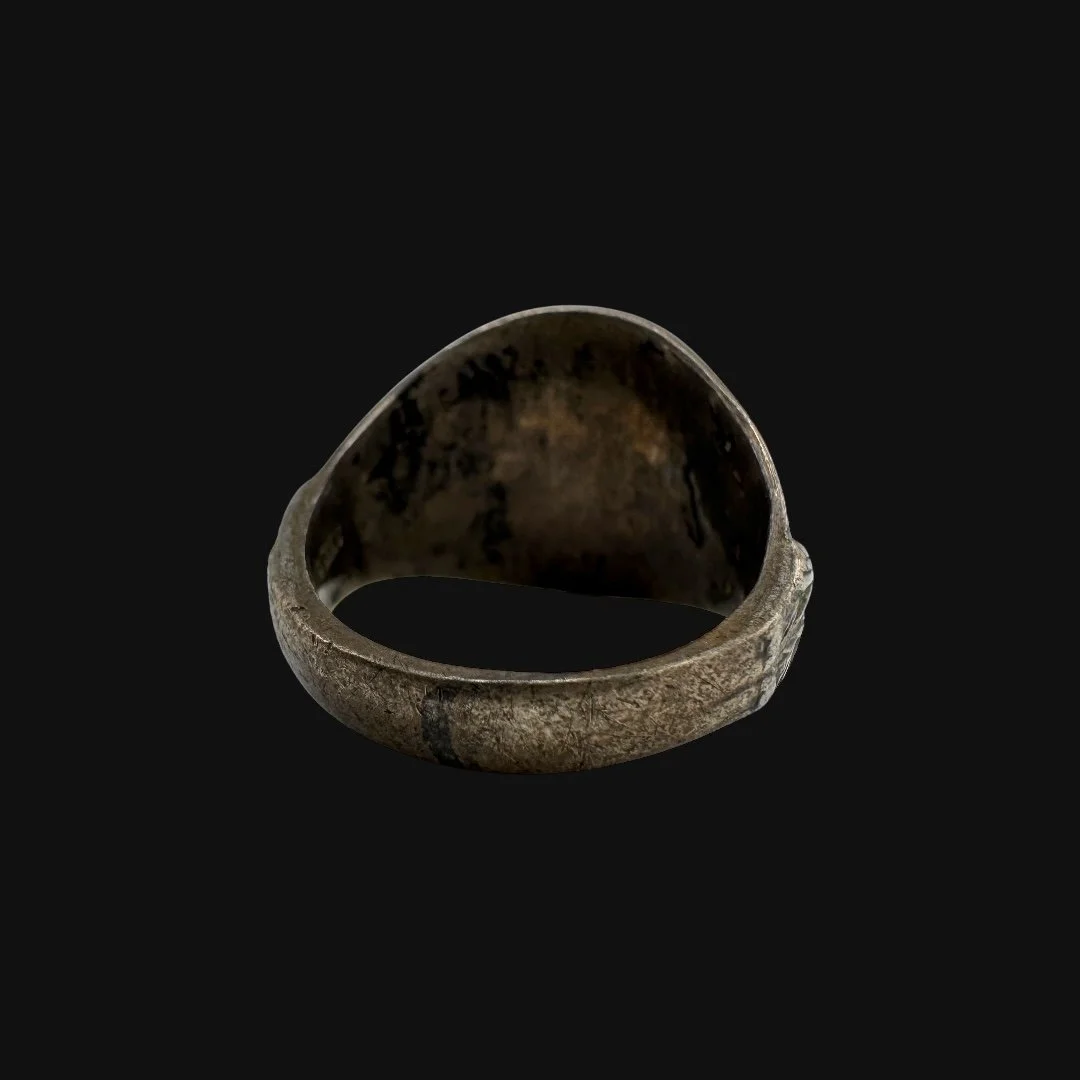 Image 9 of 13
Image 9 of 13

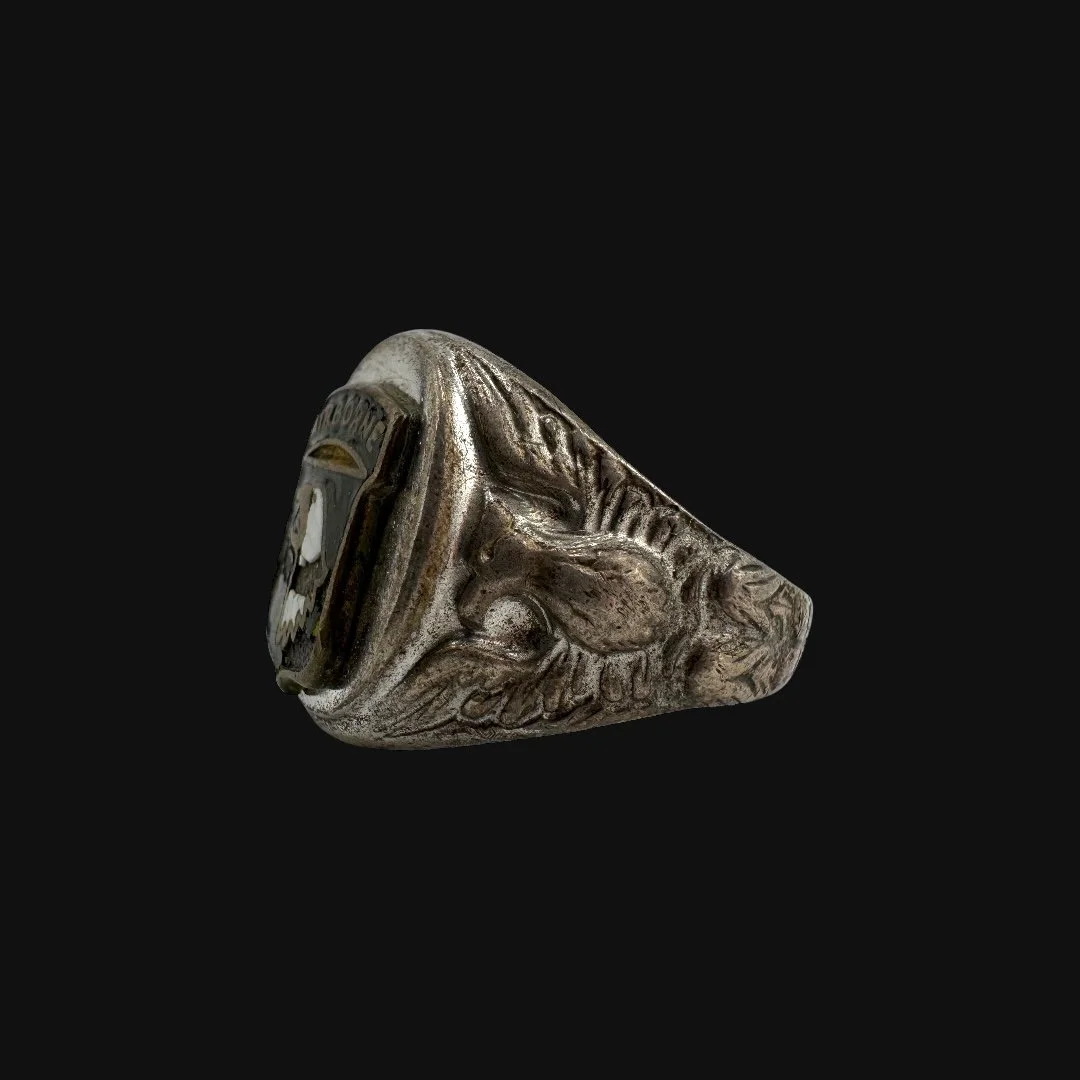 Image 10 of 13
Image 10 of 13

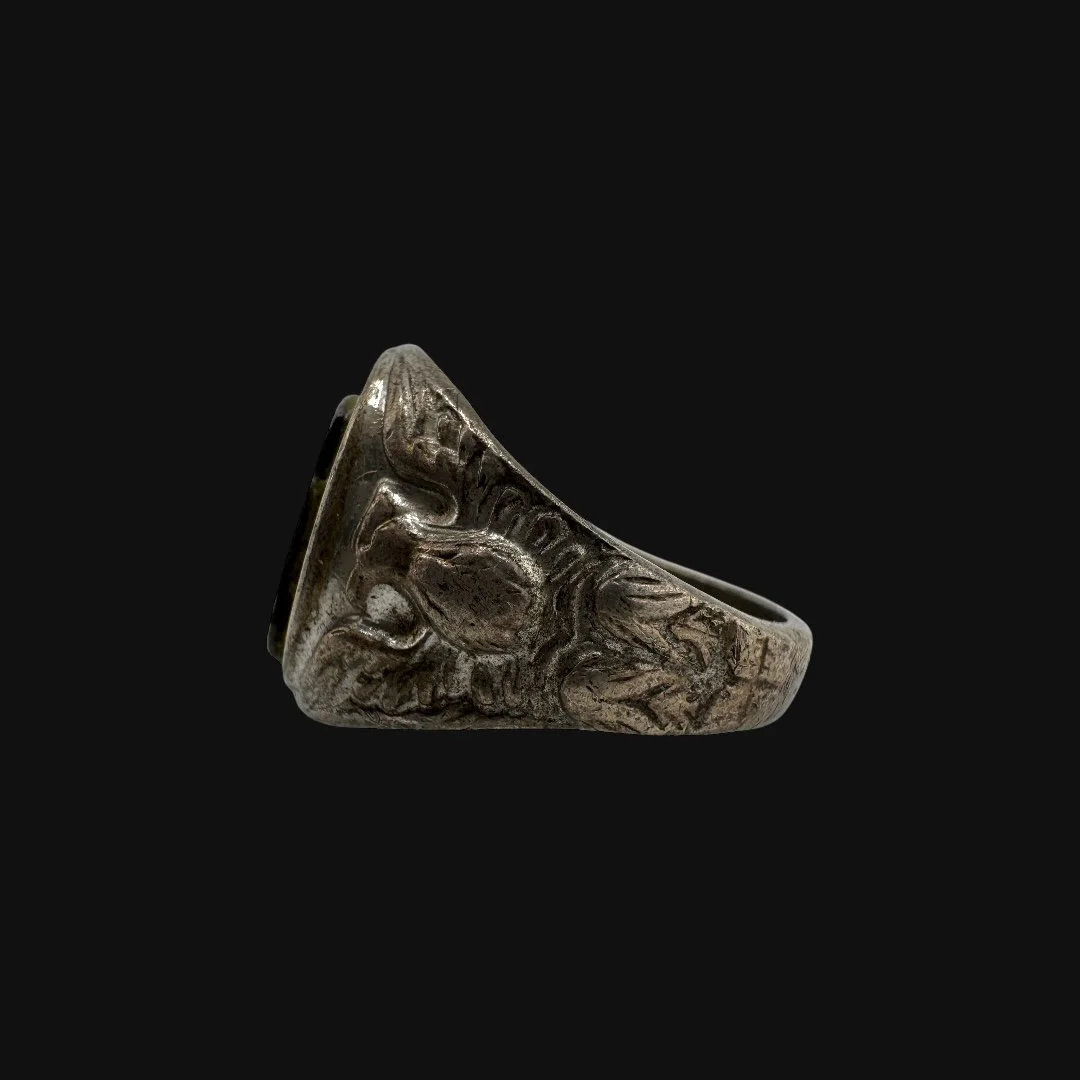 Image 11 of 13
Image 11 of 13

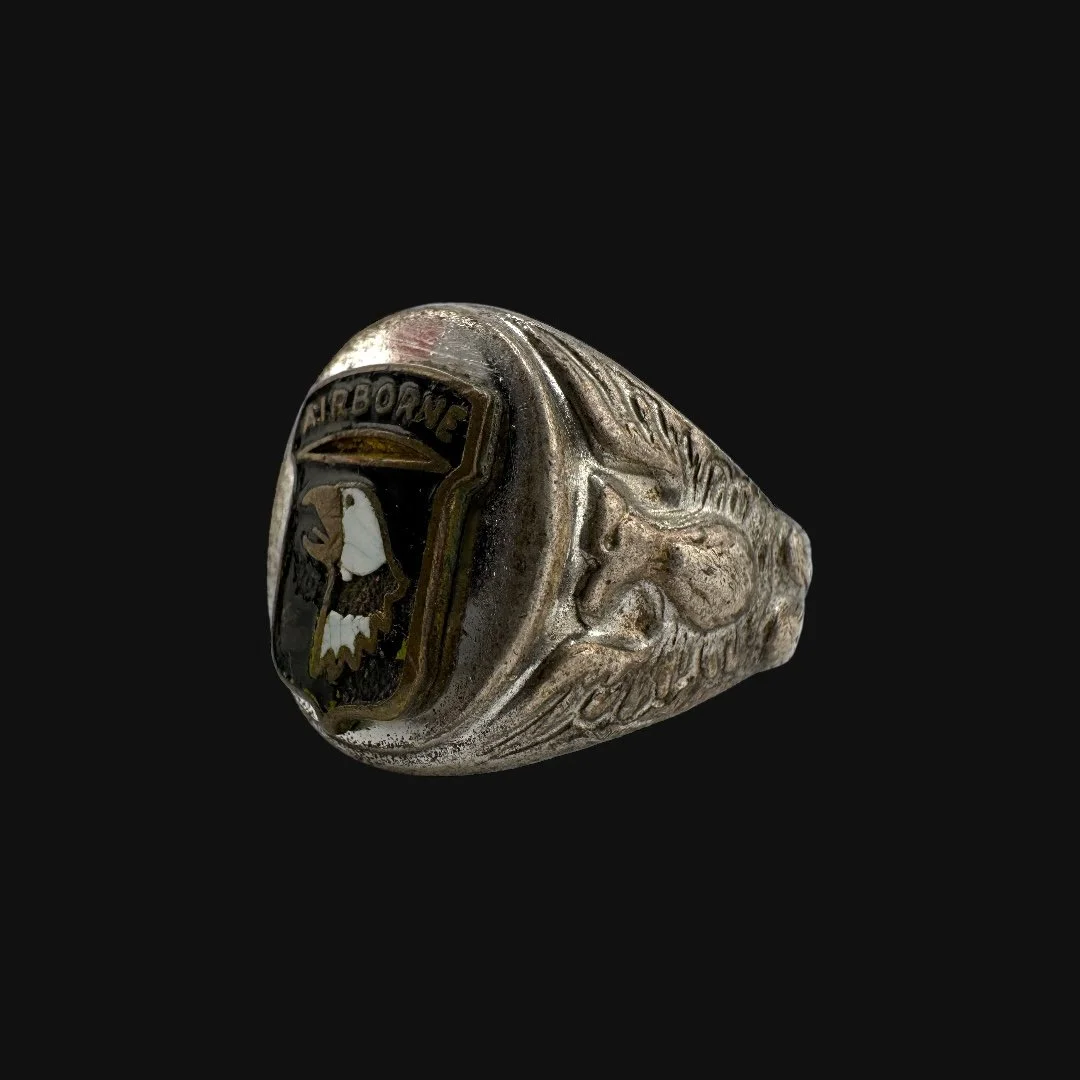 Image 12 of 13
Image 12 of 13

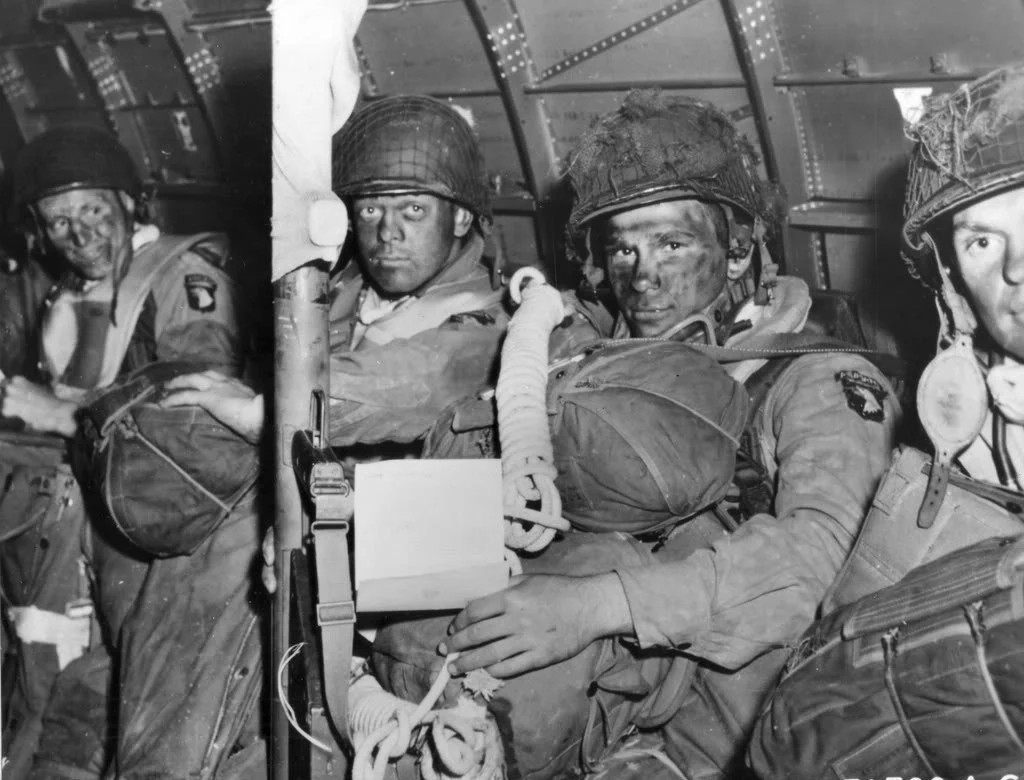 Image 13 of 13
Image 13 of 13














Original WWII U.S. 101st Airborne Division Paratrooper “Screaming Eagle Insignia” Ring – European Theater (Size 9.25)
Comes with a hand-signed C.O.A. and a full historical research write-up
From: World War II
Branch: U.S. Army
Division: 101st Airborne Division
Dated: 1944-1945
Ring Size: 9.25 (US)
Material: Sterling Silver
Theater: European Theater
Wearable History Collection:
This authentic 1944-1945 WWII-era ring, preserved in its original and unaltered condition, combines exceptional craftsmanship with lasting durability, making it fully suitable for modern wear today. As part of our exclusive World War II “Wearable History Ring Collection,” it offers the rare opportunity to own and wear a genuine piece of World War II. Both a timeless accessory and a tangible link to the past, this truly one-of-a-kind ring stands as a wearable tribute to the courage and sacrifice of a generation.
Historical Significance to the 101st Airborne Division:
The 101st Airborne Division, the “Screaming Eagles,” was activated on August 16, 1942, and trained as an elite airborne force specializing in parachute and glider operations. Known for discipline, mobility, and precision, it was led in World War II by figures like Major General William C. Lee and Major General Maxwell D. Taylor.
Their combat debut came on June 6, 1944, in the pre-dawn hours of D-Day. Dropping into Normandy behind Utah Beach, the division’s mission was to seize causeways, secure roads, and block German reinforcements. Poor visibility scattered units across the countryside, yet paratroopers regrouped, captured Carentan after bitter street fighting, and ensured the link between the Utah and Omaha Beachheads.
In September 1944, during Operation Market Garden, the 101st parachuted into the Netherlands to seize and hold bridges along “Hell’s Highway” from Eindhoven to Veghel. For over a week they fought off German counterattacks, maintaining critical supply and armor routes despite heavy casualties and constant pressure.
Their most famous stand came in December 1944 at Bastogne during the Battle of the Bulge. Surrounded by German forces, short on ammunition, food, and winter gear, the division endured artillery barrages and repeated assaults. When ordered to surrender, Brigadier General Anthony McAuliffe famously replied, “Nuts!” They held until relieved by Patton’s Third Army on December 26, 1944.
In the final months of the war, the Screaming Eagles advanced into Germany, capturing towns, liberating concentration camp prisoners, and in May 1945 taking Hitler’s mountain retreat at Berchtesgaden and the Eagle’s Nest.
By V-E Day, the 101st had fought in Normandy, the Netherlands, Ardennes-Alsace, and Central Europe, earning two Presidential Unit Citations. Their actions, marked by speed, resilience, and refusal to yield, cemented their place as one of the most legendary units of the Second World War.
The Legacy Within This Ring:
This original World War II 101st Airborne Division ring, featuring the iconic Screaming Eagle on its face and finely detailed eagles on each side, was a privately commissioned piece, handcrafted in sterling silver for a paratrooper of the 101st Airborne Division. Unlike standard-issue insignia, this was a personal work of wartime artistry, created to honor the wearer’s service in one of the most elite units of the Allied forces. For the soldier who owned it, the ring was far more than an accessory. It was a daily reminder of the courage, skill, and unity forged in operations from the drop zones of Normandy to the frozen streets of Bastogne. Each detail reflects the proud traditions of the Airborne, capturing the spirit of men who fought with extraordinary bravery behind enemy lines. Today, it endures as a rare and tangible link to the 101st’s storied legacy, a preserved fragment of history and a wearable tribute to the paratroopers who changed the course of the Second World War.
Comes with a hand-signed C.O.A. and a full historical research write-up
From: World War II
Branch: U.S. Army
Division: 101st Airborne Division
Dated: 1944-1945
Ring Size: 9.25 (US)
Material: Sterling Silver
Theater: European Theater
Wearable History Collection:
This authentic 1944-1945 WWII-era ring, preserved in its original and unaltered condition, combines exceptional craftsmanship with lasting durability, making it fully suitable for modern wear today. As part of our exclusive World War II “Wearable History Ring Collection,” it offers the rare opportunity to own and wear a genuine piece of World War II. Both a timeless accessory and a tangible link to the past, this truly one-of-a-kind ring stands as a wearable tribute to the courage and sacrifice of a generation.
Historical Significance to the 101st Airborne Division:
The 101st Airborne Division, the “Screaming Eagles,” was activated on August 16, 1942, and trained as an elite airborne force specializing in parachute and glider operations. Known for discipline, mobility, and precision, it was led in World War II by figures like Major General William C. Lee and Major General Maxwell D. Taylor.
Their combat debut came on June 6, 1944, in the pre-dawn hours of D-Day. Dropping into Normandy behind Utah Beach, the division’s mission was to seize causeways, secure roads, and block German reinforcements. Poor visibility scattered units across the countryside, yet paratroopers regrouped, captured Carentan after bitter street fighting, and ensured the link between the Utah and Omaha Beachheads.
In September 1944, during Operation Market Garden, the 101st parachuted into the Netherlands to seize and hold bridges along “Hell’s Highway” from Eindhoven to Veghel. For over a week they fought off German counterattacks, maintaining critical supply and armor routes despite heavy casualties and constant pressure.
Their most famous stand came in December 1944 at Bastogne during the Battle of the Bulge. Surrounded by German forces, short on ammunition, food, and winter gear, the division endured artillery barrages and repeated assaults. When ordered to surrender, Brigadier General Anthony McAuliffe famously replied, “Nuts!” They held until relieved by Patton’s Third Army on December 26, 1944.
In the final months of the war, the Screaming Eagles advanced into Germany, capturing towns, liberating concentration camp prisoners, and in May 1945 taking Hitler’s mountain retreat at Berchtesgaden and the Eagle’s Nest.
By V-E Day, the 101st had fought in Normandy, the Netherlands, Ardennes-Alsace, and Central Europe, earning two Presidential Unit Citations. Their actions, marked by speed, resilience, and refusal to yield, cemented their place as one of the most legendary units of the Second World War.
The Legacy Within This Ring:
This original World War II 101st Airborne Division ring, featuring the iconic Screaming Eagle on its face and finely detailed eagles on each side, was a privately commissioned piece, handcrafted in sterling silver for a paratrooper of the 101st Airborne Division. Unlike standard-issue insignia, this was a personal work of wartime artistry, created to honor the wearer’s service in one of the most elite units of the Allied forces. For the soldier who owned it, the ring was far more than an accessory. It was a daily reminder of the courage, skill, and unity forged in operations from the drop zones of Normandy to the frozen streets of Bastogne. Each detail reflects the proud traditions of the Airborne, capturing the spirit of men who fought with extraordinary bravery behind enemy lines. Today, it endures as a rare and tangible link to the 101st’s storied legacy, a preserved fragment of history and a wearable tribute to the paratroopers who changed the course of the Second World War.
